Hunger Inc: Empire of Taste
From Canteens to Sweet Shops, and Pedro to Papa's, how Mumbai's Hunger Inc set the table for a new chapter of Indian hospitality

Hey folks👋
Welcome to the 159 new Tigerfeathers subscribers who’ve joined since last week’s essay.
We’re going back to back with another story that’s been many months in the making. ‘Many months’ also happens to be the age of Vaibhav Suryavanshi, the youngest centurion in IPL history.

To stay up to date with more tales of Indian excellence, click here to subscribe👇
This edition of Tigerfeathers is presented by…Bombay Locale
“Nobody owes you attention. We help you grab some.”
Bombay Locale is a global creative studio that helps tech companies cut through the noise by turning complex ideas into compelling, cinematic stories. Their masthead says it all: "Storytelling that works."
Over the last 8 years, they've crafted explainer films, launch videos, brand campaigns, and investor content for companies like Zoho, Hubilo, Pingsafe, InVideo, Defy, ClearTax, Jio, and dozens of early-stage players across SaaS, fintech, crypto, and AI.
What sets them apart is their technical chops—they’re ‘techies turned storytellers’. They believe that behind every complex product is a human problem worth solving, and that emotional connection is where great storytelling comes alive.
The company originally started as a scrappy experiment between two brothers working out of hostel rooms and friends' apartments with borrowed gear. Today it’s evolved into a colourful team of designers, engineers, bankers, filmmakers, and all sorts of misfits united by a shared love of great stories.
If you’re building in consumer, fintech, SaaS, or AI, and you’ve got a story you want to bring to life, get in touch with them at hello@bombaylocale.com, or book a call with the Bombay Locale team here:
And if you're interested in sponsoring a future edition of Tigerfeathers, hit us up on Twitter/LinkedIn or by replying to this email. With that, let’s get to it.
In Chapter One of Tom Shone’s excellent biography of Christopher Nolan is a quote from the director that pinpoints the exact moment he knew what he wanted to do with his life, as far back as his pre-teen years at boarding school in England:
There was no film club, although every week war movies like Where Eagles Dare or The Bridge on the River Kwai were shown, and Nolan does remember being allowed to watch a pirated VHS of Ridley Scott’s Blade Runner (1982) on a TV in his housemaster’s lodge. “We were allowed to pop down to the master’s house and watch half-an-hour chunks of it,” he says. It was only later that he caught Ridley Scott’s Alien (1979) and put it together with the film about replicants he had seen in half-hour chunks in his housemaster’s study.
“I can remember this very palpably, identifying some tone to those films that was common and not really understanding it and wanting to understand it—something that almost felt like a sound, a low throbbing, a particular lighting, or an atmosphere to those films that was clearly the same. Then what I found out was, same director. So, totally different story, different writers, different actors, different everything, all the things that as a kid you identify as making films what they are—you think the actors basically make the film up—all those things are different, but there’s a connection, and that connection is the director. I can remember thinking, That’s the job I want.”
Spoiler alert - today’s piece has nothing to do with lighting, movies, or directors. It does, however, have to do with genre-bending creativity, storytelling, and execution of the highest calibre (also, ceviche). Much like the paragraphs above, it was born out of pulling at the same common thread.
In June last year I was putting together my ‘GOAT list of Mumbai food recommendations’ for a friend visiting the city from the US for the first time. It hit me that, since 2015, the real estate on that list has been increasingly claimed by the same juggernaut force, comprising the trailblazing team of founders, chefs, restauranteurs, mixologists, and mithaiwalas at Hunger Inc.
Starting with the launch of their iconic opening salvo The Bombay Canteen in 2015, the company has built a portfolio of enduring brands that routinely command the territory on any (more-official-sounding-but-less-prestigious) list of the best restaurants and bars in Mumbai, India, or Asia.
Before going ahead, I’m contractually obligated to add here that many of Mumbai’s best meals aren’t found within four tastefully decorated walls, surrounded by moody lighting or air conditioning; several of the city’s best dishes are served without the fuss of chairs, tables, crockery and even cutlery; and you don’t need to break the bank to sample the best that the metropolis has to offer.
But when it comes to restaurants (i.e. the kinds of places that pop into your head when you think of restaurants), over the last ten years there is no group that is more responsible for changing the dining scene in Mumbai - and arguably, India - than Hunger Inc.
Originally conceived around a mission to ‘celebrate India through its food traditions’, at last count, their empire spans:
The Bombay Canteen (2015) - a love letter to *Indian* food that broke all the rules - no butter chicken, no white table cloths, no need for a nap after your meal. It’s the restaurant that redefined Indian dining in 2015, bringing the tradition of seasonal ingredients and regional cuisines into a modern, approachable setting.
O Pedro (2017) - a “happy place” that celebrates the culture and culinary heritage of the sunshine state of Goa.
Veronica’s (2023) - the “sandwich shop with the personality of a cocktail bar”.
Papa’s (2024) - an “intimate-yet-loud” chef's counter experience, that fulfils their decade-long vision to reimagine fine dining in India. It serves as the culinary playground of Chef Hussain Shahzad - coronated in 2024 as the best chef in the country.

Bombay Sweet Shop (2020) - a project that began by asking “What if Willy Wonka owned a mithai factory?”, that’s now blossomed into a formidable direct-to-consumer brand celebrating the magic of Indian sweet-making.
and, enthucutlet (2022) - a bi-monthly digital magazine chronicling the ingredients, people, places, legends and recipes that are shaping the story of food in India, extending the company’s mission beyond the walls of their restaurants.
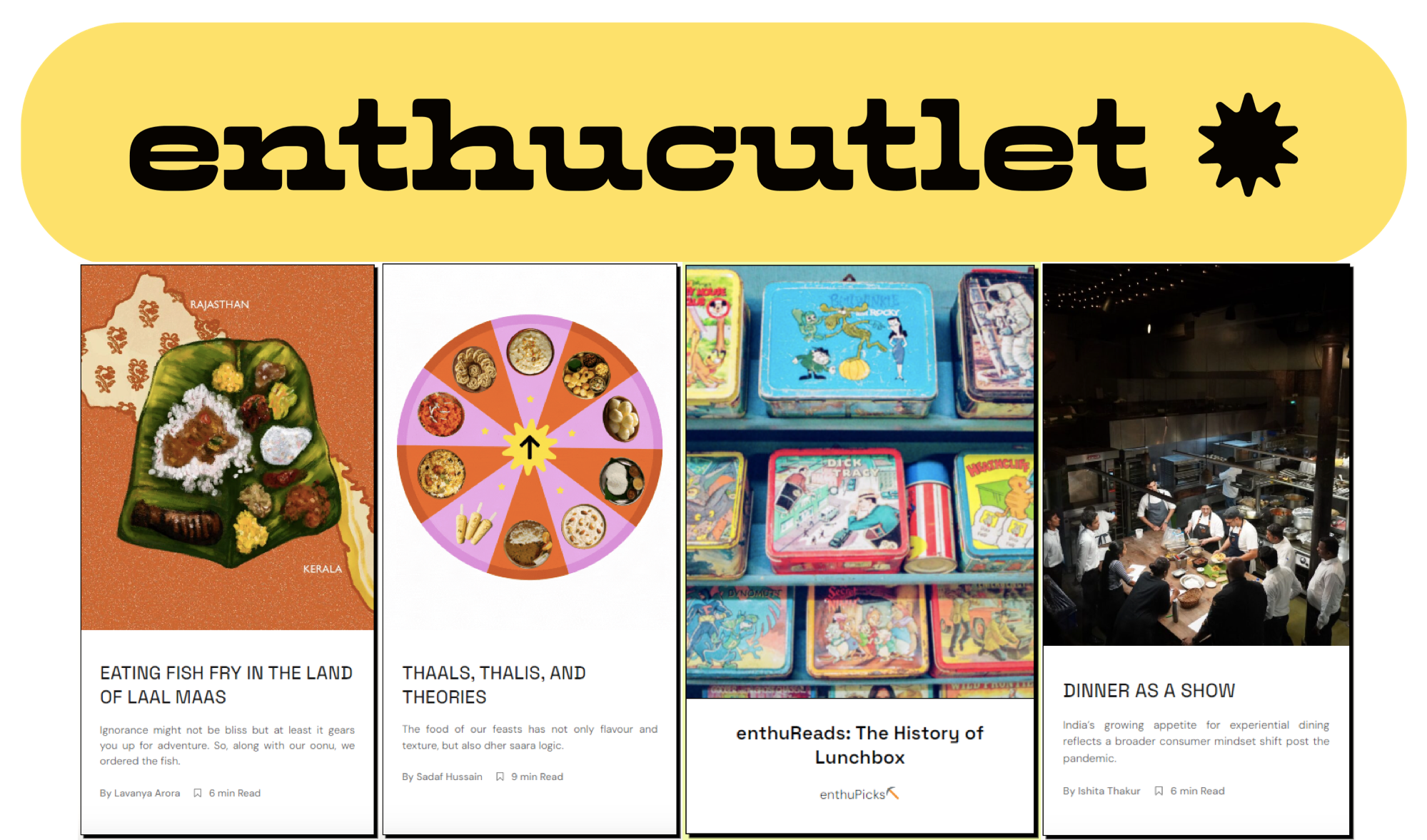
Hunger Inc was originally founded in 2015 by Sameer Seth and Yash Bhanage, alongside their mentor and culinary North Star, the legendary chef Floyd Cardoz, whose visionary approach to Indian cuisine at his New York restaurant Tabla first made him a culinary icon in America. Chef Floyd sadly passed away at the start of the 2020 pandemic. While the team is still very much animated by the inventiveness and playfulness of his original approach to food, the company has today blossomed into a food services powerhouse. It counts on the leadership of Executive Chef Hussain Shahzad and Chief Mithaiwala Girish Nayak, amongst a wider cast of chefs and operators that includes several of the country’s best.
Over the last decade, the group has crafted a culinary philosophy and a coda on hospitality that has tied together each of their subsequent ventures. Much like how Ridley Scott's directorial DNA threads through both space-horror and android-noir, there’s an unmistakable Hunger Inc signature that connects everything they touch. And it extends beyond what happens in the kitchen.
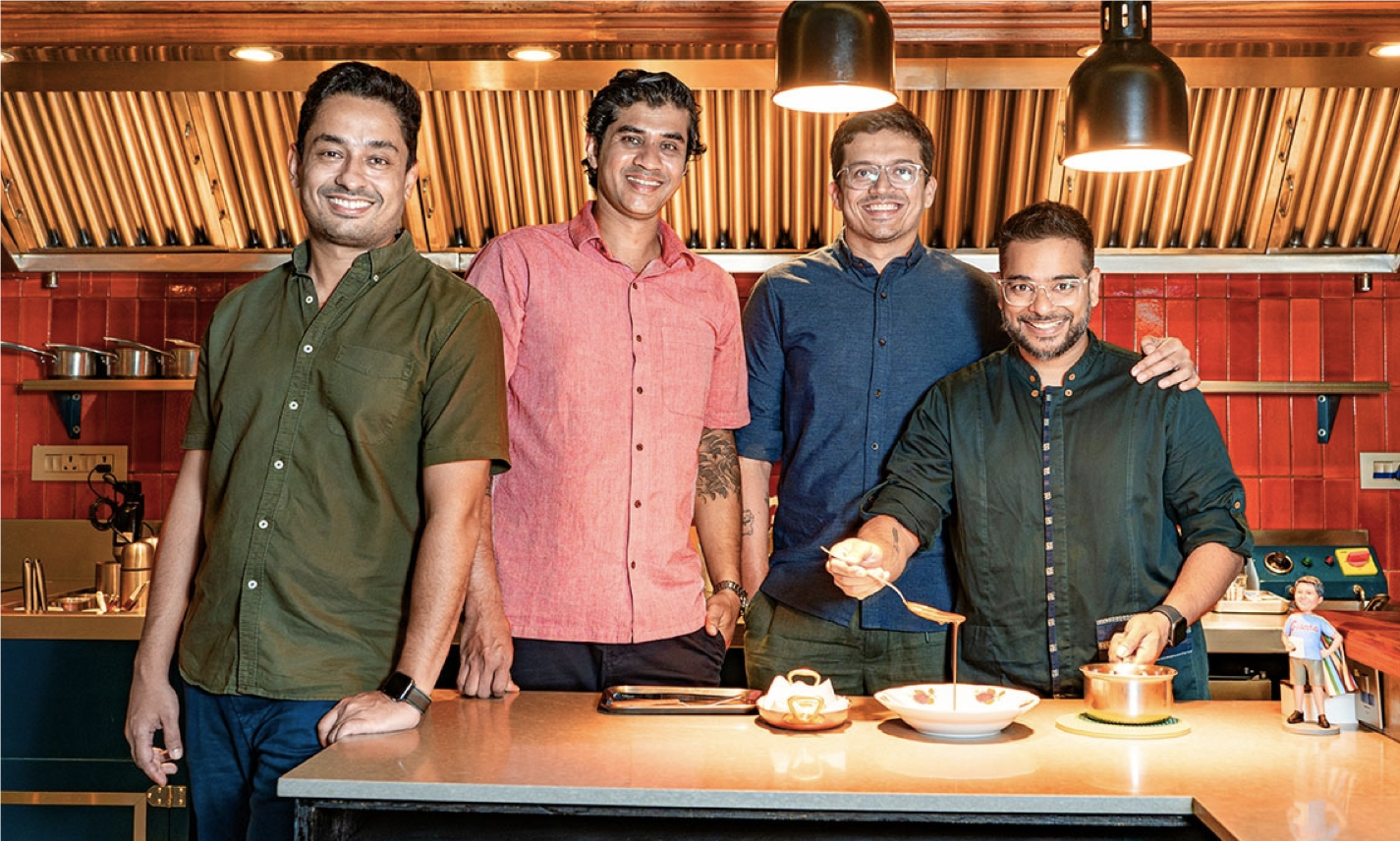
If you live in Mumbai or you’ve visited in the last ten years, and you’re the type of person who likes going out to restaurants, there’s basically a 100% chance you’ve wandered into their world. It’s likely you’ve experienced their signature brand of hospitality firsthand, where their front-of-house staff makes it clear that they’re on your team, where every detail - from the copywriting in the menu to the layout of their spaces to the enthusiasm of staff members passionately talking about their favourite dishes - has been meticulously crafted to put you at ease.
Back in 2015, when India didn’t have much of a standalone restaurant culture, it wasn’t intuitive for restauranteurs to care about these things. What helped the Hunger Inc team break the mould is that they were bringing the knowledge and experience from years working with titans of the food industry in the US and Singapore. It meant they were amongst the first Indian restauranteurs to think of eating out as an ‘experience’, working backwards from how a restaurant should make its guests and - more importantly - its staff feel.
Today this philosophy has become their calling card. Coupled with their thoughtful approach to reinventing regional Indian dishes, they’ve been able to rack up a pristine record of hits in a notoriously unforgiving industry, giving them bragging rights as a special set of impresarios, operators and tastemakers. So, as they celebrate their 10th anniversary this year, it seemed like a fitting juncture to document their story for Tigerfeathers.
“B-b-but this is a tech newsletter”, I hear you say.
This is true. Our last three Indian startup stories were about a company that designs mRNA vaccines, a company that makes it easy for Indians to buy digital gold, and a company that makes special satellites that allow us to spot invisible problems on the surface of the Earth.
So why is today’s piece - our longest ever - about a company that makes a mean Chilled Seabass Sev Puri and Dark Chocolate Kaju Katli? Three reasons:
1. Because the Hunger Inc story isn't just about restaurants - it's a primer on creating things that people love.
The team has cracked some timeless codes on things like world-building; storytelling through products; nurturing cult brands; designing for your community; and more. Their ‘Hospitality-First’ ethos can be applied to supercharge virtually any entrepreneurial pursuit. They just happen to be using food as their canvas.
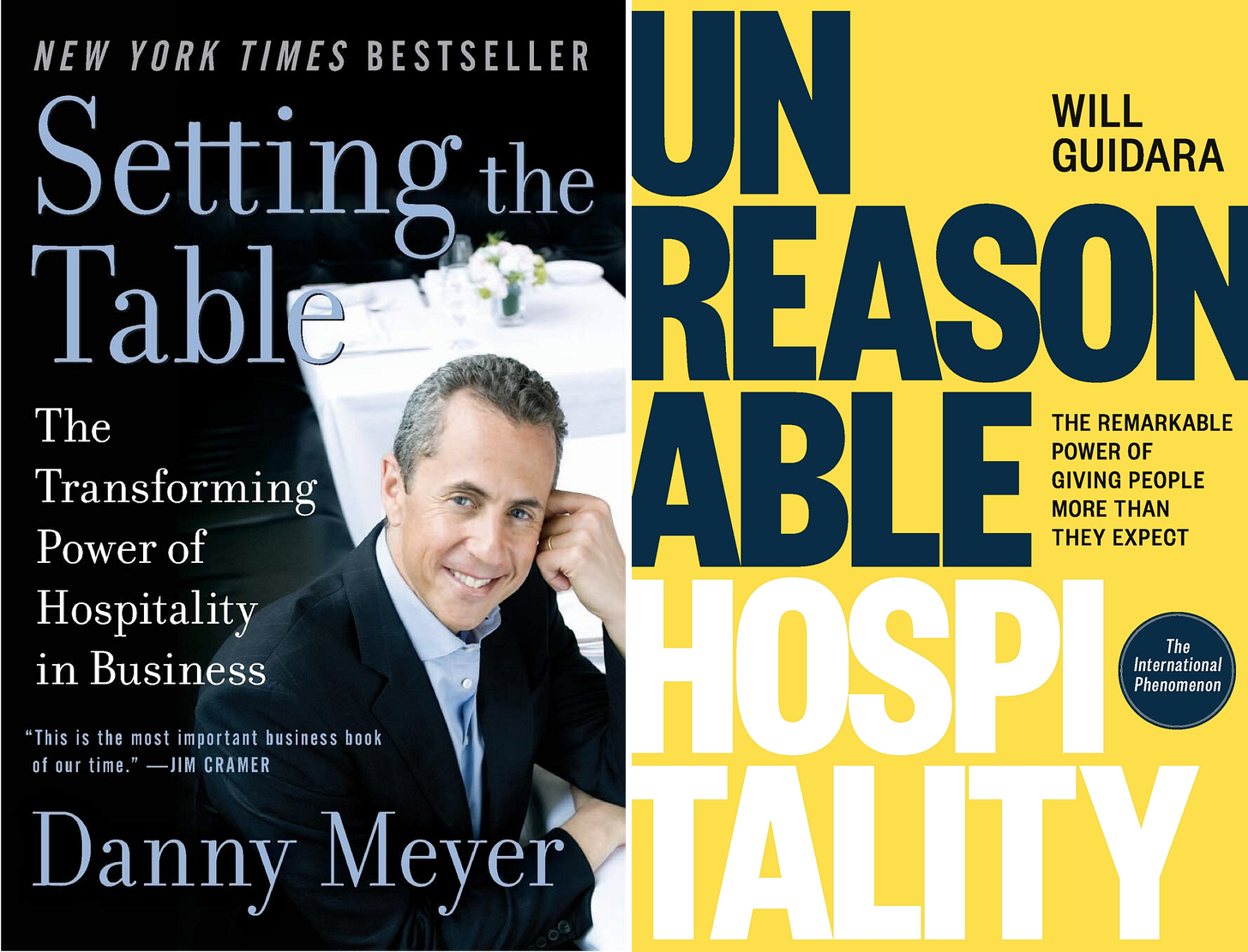
If you’re in the business of getting people through the door and making sure they come back again and again, you will probably find a something to chew on here.
2. Because their story coincides with a broader plot twist in the Indian consumer saga.
After decades of nurturing a reflexive preference for anything with an overseas stamp, India's taste buds (and wallets) are pivoting homeward. As we put more distance between ourselves and the post-liberalisation 1990s, a ‘foreign-made’ infatuation is giving way to a growing curiosity about our own styles and flavours.
You can see this changing zeitgeist everywhere from fashion labels to speciality coffee to skincare. It’s a combination of Indian entrepreneurs being bold enough to test the adventurousness of Indian consumers, and Indian consumers opening up to the idea that Indian-made doesn’t have to be an apology, it can be an aspiration.
In the same vein, the arc of The Hunger Inc - from elevating humble regional Indian cuisines to reimagining mithai for the Instagram age - isn’t just a food tale, it's a snapshot of a country rediscovering its own richness.
3. Because food is home turf (for me).
I’ve grown up in a family of professional chefs, bakers, and restauranteurs, where the background noise at home was always conversations about food. My parents used to run two much-loved cafes in Mumbai - PLENTY and Food For Thought - for over ten years until the pandemic. After many, many occasions walking out of a Hunger Inc establishment saying some variation of ‘they’ve figured something out here’, it felt like the easiest way to figure out what, was to just ask the team myself. So this piece is an excuse for me to nerd out about a space that’s close to home, while getting to learn from some of its sharpest operators, at a time when India’s appetite and curiosity for new food experiences is at an all time high.
If you’re curious about the industry, if you’re a fan of their restaurants, or if you’ve got a tiny back-of-your-mind interest in running your own some day, you will enjoy diving in to this one.
With that being said, today’s Tigerfeathers essay will cover:
the 10 year journey of Hunger Inc
a (very) deep dive into the ideas, insights, individuals and intuition that’s shaped each of their ventures
their process of researching and launching new businesses, and their (secret) recipe for generating hits 👀
how their story fits into a changing paradigm for consumption and entertainment in India
A quick disclaimer before we start. You know how sometimes you get to the end of a book and, in your head, you're like "*angry noise* this could have been a blogpost!"? Well, this is the exact opposite of that - it's a blogpost that could have been a book. English translation - it's long AF. In my defence, it’s one of the most colourful startup stories you’re likely to find, and because this is Tigerfeathers, I thought it was important to do it full justice. All of which to say, I would budget for a few sittings (and bathroom breaks) if you decide to read on.
So, without further ado (but really after far too much ado), fresh off their 10-year anniversary, this is the story of Hunger Inc.
“All they know is that you’re trying to get to the city of gold, and that’s enough. Come on board, they say. We’ll adjust.”
— Suketu Mehta (Maximum City: Bombay Lost and Found)
Outside the Gateway of India on Mumbai’s southern fringe, a stone's throw away from where the last British troops departed in 1948, sits a plaque that reads "Urbs Prima in Indis" – the First City of India. It is an unlikely moniker for what was once an archipelago of seven sleepy fishing islands, but Mumbai has always fancied itself a city of second acts.
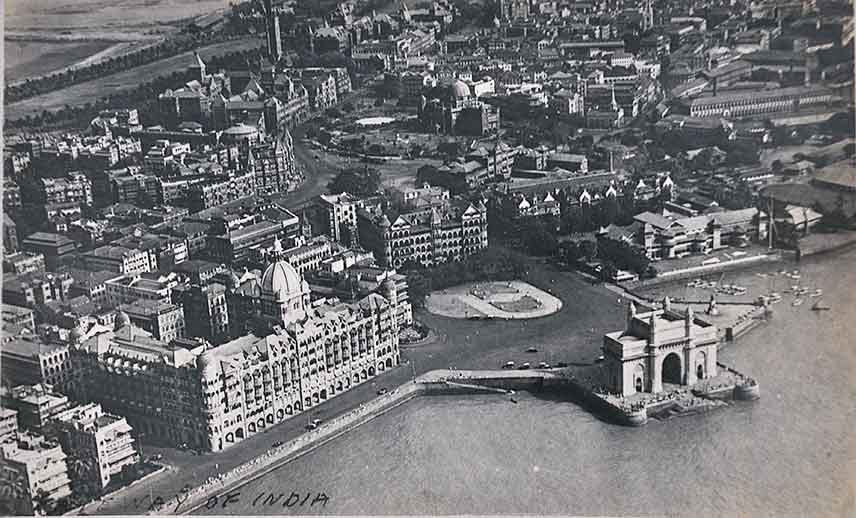
It's a city where Victorian Gothic spires face off against Art Deco curves, where wine bars now fill the brick shells of cotton mills that powered its industrial revolution. For centuries, it’s been India's front door to the world – where ideas, ingredients, and ambitions wash up on its shore, get mixed into Mumbai's mosaic and presented as something entirely original. While Bangalore writes code and Delhi drafts legislation, Mumbai stirs the pot – literally and figuratively – as the country's cultural crucible. The city’s tables tell this story best.
From mawa cakes at century-old Irani cafes, to coastal fish curry houses run by Koli fisherfolk, to the flavours of Indian-Chinese birthed by Hakka immigrants and everything in between - each kitchen bears evidence of a community that came and cooked.
It is fitting, then, that the city that turned no one away would serve as both canvas and character for a genre-defining experiment in hospitality. When the founders of Hunger Inc returned to Mumbai in 2015 after their adventures working in restaurants, bars, and hotels overseas, they would place their bet on Mumbai’s time-honoured tradition of finding possibility in the space between old and new.
1. Origins
There’s an alternate version of this story where Yash Bhanage goes ahead with his scheduled medical college entrance exam, and Sameer Seth accepts his next promotion at Citibank, and this piece is about a chain of tastefully designed healthcare clinics that make you feel comfortable yet strangely nostalgic about your health every time you visit. But we’ll never know that story.
In this one, both of them would trade the safety of their conventional career paths for the colourful chaos of the Canteen.
@YashWeCan
Yash, in particular, would abandon that path before it even began. Growing up in Pune to dad who was a neurosurgeon, his mom an architect, and an older brother who chose to be a chemical engineer, his decision to swap lab coat for waistcoat was far from preordained.
“I didn’t really have a strong idea of what career path I wanted to take.” Yash recalls. “It was either be a doctor or engineer, or just copy whatever your friends were doing. In the pre-internet days, you couldn't exactly make an informed decision on your career either. I remember there was this one career book I found that had these short briefings on different professions - almost like a dictionary of different career options - that included one and a half pages on hotel management. It said something like ‘hotel management will be a promising profession in India over the next 20 years’. That was enough for me."
In the 80s, Pune, like the rest of India, didn’t have much of a standalone restaurant culture, or much of a restaurant culture at all.
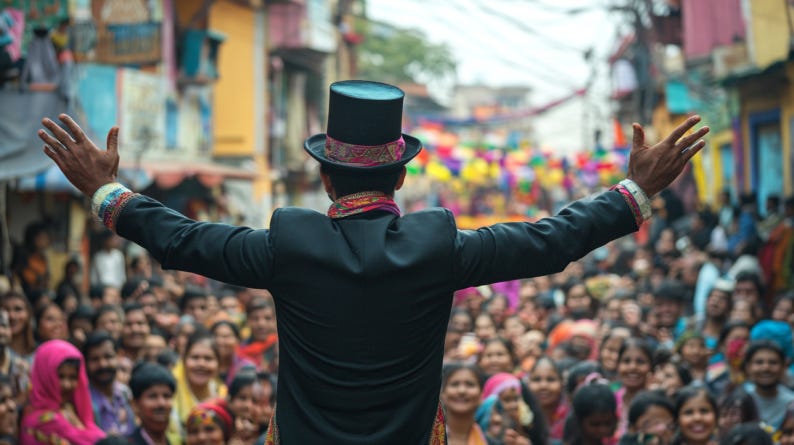
“We used to always have great Maharashtrian food at home - great fish fry, chicken curry etc, but I wasn’t a ‘foodie’ as such,” he says. “Pune didn’t have a lot of places to go out to. There wasn’t really a place we saved up pocket money for. We would go to Vaishali for a dosa in our college days, but that was it.” However, he points to one particular memory that stuck with him, that likely influenced his choice of chosen field.
“On special occasions my dad would take us to the coffee shop at this hotel in Pune called the Blue Diamond (which later became the Taj). I still remember their chicken sesame fingers. There was this manager there, always in an impeccable suit, orchestrating the entire operation like a conductor. I used to look upto him thinking 'this guy knows what he's doing’. That might have been what sealed the deal.”
Yash applied to the Institute of Hotel Management and got into IHM’s Goa campus. His parents were fully supportive of the decision to swap the familiar rhythms of Pune for the lively tempo of India’s sunshine state. The three years at college in Goa were a study in contrasts, with pristine beaches outside rivalling the dusty textbooks and outdated curriculum inside.
“I really enjoyed those three years. More than the college itself, moving out of home at 18 helped me mature a lot. I was a good student too, always in the top two of my class. It probably gave me a false sense of confidence because success in college at the time just meant you were good at following instructions written down in some outdated textbook or manual. There was no sense of the culinary arts. We weren’t exposed to what was happening around the world. The curriculum back then was taught by professors who hadn’t been part of the industry for a long time. There was nothing new. There was no attempt at instilling the passion or curiosity to create something special. The entire experience was geared towards manufacturing armies of robots for the hotel industry. It was based on discipline, not innovation.”
Case in point - when he was looking for advice on how to pick the right landing spot after graduation, his college career counsellor said “You’re a tall boy. You should work in a hotel reception.” As a naive 22-year old, he took the advice to heart, and ended up joining the newly launched Grand Hyatt hotel in Mumbai to work at the front desk.
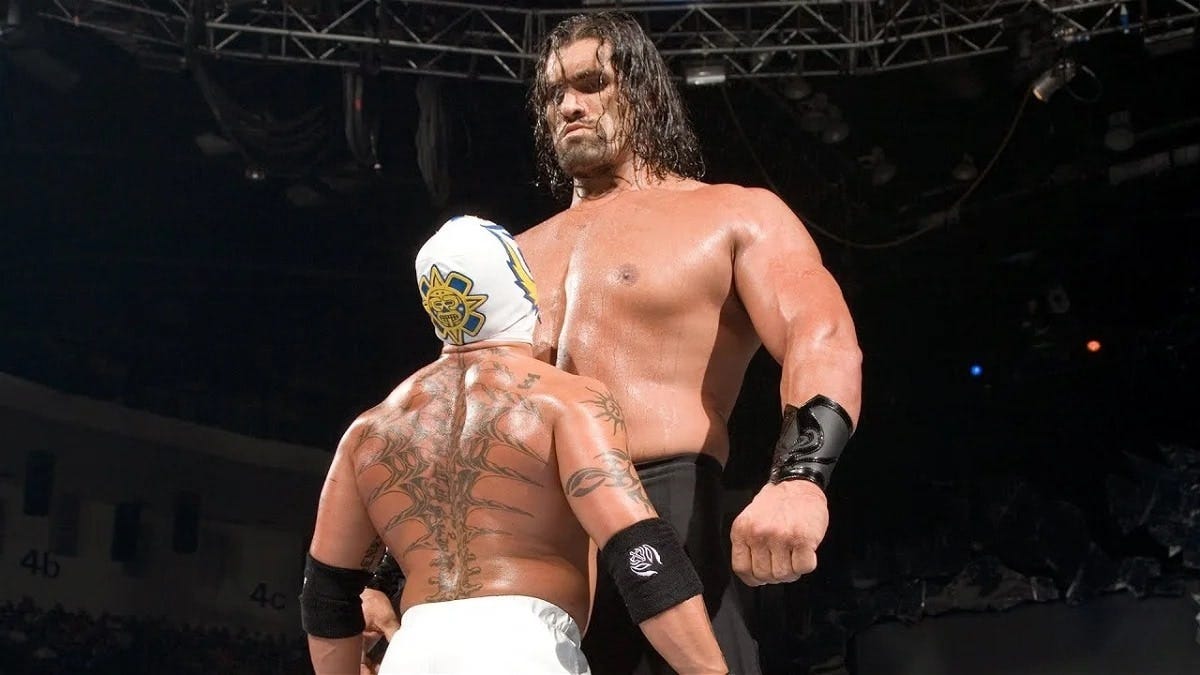
“I got very bored very soon”, Yash admits, “but a month in, there was a conference happening at the hotel. We were really understaffed so I got pulled in to the new Italian restaurant at the hotel to help ease the load. I had never worked at a restaurant before but the hustle and bustle was infectious. The actual work was mostly clearing tables, running around getting coffee for people, that kind of thing. But I loved the idea of service, of helping people out. It was the best week I had had at work.” He asked for a switch to the restaurant side of things, and the hotel was kind enough to oblige.
Yash spent a year and a half as a server, and another year as supervisor. Even accounting for 16 hour workdays, a hellish commute, the cult of yes-sir-no-sir that permeates Big Hospitality in India, and the odd instance of entitled customers flaunting their entitlement, he felt at home.
“I started feeling like this was where I was supposed to be. Like this was my hotel, like I was meant to continue working at that restaurant forever. My dad thankfully pointed out that I was getting too comfortable. For one, I was making Rs. 12,000 per month (after starting at Rs. 8,000 per month), so it wasn’t like this was some crazy lucrative position. And two, my dad used to always tell us when we were growing up that his neurosurgeon’s job was akin to driving a taxi. When he was in the operating theatre, that’s when the meter was on, that’s when he got paid. If he wasn’t on the surgery table, he wasn’t making money. He always encouraged us to find a career that didn’t require us to always be present to earn a living.”
Realising that there was more to learn, and with the encouragement of his family, he applied to the Cornell University School of Hotel Administration, where, in Week 1, he would meet his future partner and co-founder.
@CanteenSam
Sameer was born in Lucknow, but spent his childhood bouncing between Bangalore, Kolkata, and for the most part, Delhi. He grew up in a big family that was obsessed with food. “We spent every meal talking about what we were going to eat for our next meal,” he says. “Food was always the backdrop to our most cherished memories and conversations.”
His mother was a teacher and his father in the corporate world. Despite a love of food that was regularly fanned in a family that had no shortage of great cooks, he was nudged to first fill up his CV with the kinds of things that made for a textbook career. “There was always the inkling to do something in food or hotel management as far back as college. I remember helping to organise a college festival in Delhi - it was that process of alchemy, of bringing all these pieces together and seeing the final vision come to life, I think that’s where the interest first came from. But at the time I had no idea how or where to even start. Plus in India, we tend to perpetuate this myth of ‘first do this, then you can do that’.”
That myth effectively translates to ‘first choose security, and then chase your passions.’ For Sameer that meant a degree in Chemistry from St. Stephen's in Delhi, an MBA from IIM Kozhikode, and a much-coveted campus placement into Citibank's mortgage division, that came with a ticket to Mumbai in 2005.
“I loved those first couple of years, both working in Citi and getting to live in Mumbai. It’s funny that my life has always seemed to funnel back to real estate, whether that was in mortgages at Citi, or later in the food business. It turns out banking isn’t the worst base to have if you want to run restaurants.”
After two and a half years in his role, Sameer began feeling the pull of the ‘then you can do that’ side of the proverbial Indian career equation. He couldn’t get rid of a nagging feeling that this wasn’t the path he was supposed to be on. Staring at the prospect of a promotion that felt more like a sentence than an opportunity, he decided to rip the band-aid on his hospitality ambitions.
“At 26 years old I knew I was done. This was as far as I could go. I had relocated back to Delhi by this point, so I reached out to a family friend who was a partner at this small restaurant group in Delhi and, on a whim, asked if I could join them. He was kind enough to indulge me with an offer.”
So without telling his parents, he quit his job in Mumbai and moved back to Delhi to join the Shalom restaurant group, leading his grandmother to famously quip “tum bank chhodke paratha bechne ja rahe ho?” [you’re leaving the bank to go sell parathas?].
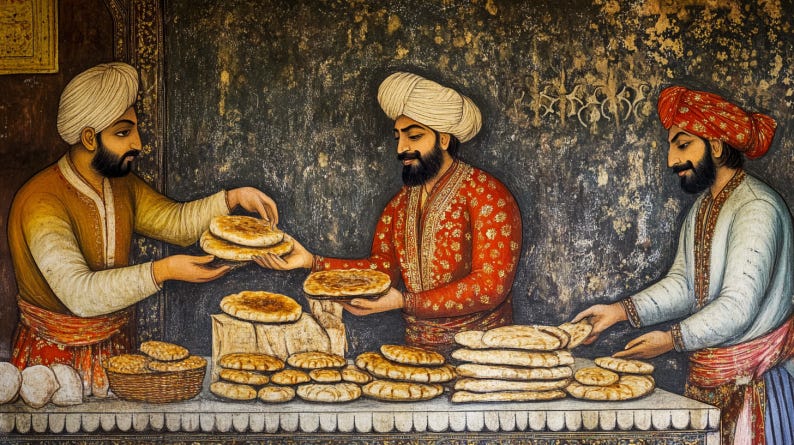
Sameer reasons that his family would have been even more horrified had they known he'd signed up without a defined role or salary. It was all academic as far as he was concerned. He had his foot in the door of the restaurant world, and that was enough. The next two and a half years would give him a front row seat to the incomparable highs, as well as the brutal mathematics of the restaurant game.
“We opened three new restaurants in the first six months, and then closed seven over the next two years. I dove headfirst into the deep end (mainly on the marketing and finance side of things), and loved every minute of it - the chaos, the rush, the joy of being on a restaurant floor…there’s nothing like it. I saw what it meant to create an ambience from scratch. I experienced firsthand what happens when shit hits the fan, and learnt as much about what not to do as I learnt about what to do.”
Just short of three years in, he began to feel the pull of entrepreneurship. “I knew I wanted to do my own thing, but there was still so much I had to learn, about how to construct a menu, how to develop a food philosophy - fundamental things like that”, he says. On the advice of a mentor, he decided to level up, and applied to the Cornell School of Hotel Administration to “find an idea to bet on.” As it turns out, he found much more.
2. Two Enthu Cutlets Walk Into A Bar
“Service is black and white; hospitality is color.”
“Black and white” means you’re doing your job with competence and efficiency; “color” means you make people feel great about the job you’re doing for them. Getting the right plate to the right person at the right table is service. But genuinely engaging with the person you’re serving, so you can make an authentic connection—that’s hospitality.”
“I believe that whatever you do for a living, you can choose to be in the hospitality business”
- Will Guidara (Unreasonable Hospitality)
For all our pithy attempts to sort humanity into neat categories, there might be just one division that matters: those who believe nothing good happens after 2 AM, and those who believe that's when the magic happens. The Hunger Inc story is a product of the latter, and fittingly for a story set in the food and beverage industry, this one starts in a bar.
In the summer of 2010, at a mixer hosted during orientation week at Cornell, Yash and Sameer were both stragglers at Rulloff’s bar on campus. “We were basically the last two left,” recalls Sameer. “We ended up hanging out till late in the night. Even back in that first meeting we joked about starting something together in India someday.”
The two would only overlap for the first six months of their year-long Masters course at Cornell. Yash would take up the option to spend his second semester abroad in Singapore. Despite their brief stint together at university, they were able to maintain a close cross-continental friendship, largely forged over a shared love of food and drink. Although both had arrived in the US on the back of years in the weeds of the restaurant business, Cornell was really their first introduction to the tao of hospitality, which meant less starched uniforms and mechanical pleasantries, and more soul and substance.

“Cornell encouraged you to ask questions,” says Sameer. “It pushed you to think deeply about whatever interested you. Your professors focused on stoking your passions, whatever they were. If you weren’t curious you were left behind.”
“It was a humbling experience,” Yash says. “It felt like everyone’s knowledge of food and hospitality was superior to mine, because mine came from textbooks and instruction manuals. The culture was completely different.”
These differences became more pronounced in their first jobs after graduation. Yash, curious about bar operations, took up a role as a bar manager with the Fairmont Hotel group in Chicago. Sameer came on board as a busboy (and then a server) at Bar Boulud in New York City, which was part of the restaurant group run by celebrated chef Daniel Boulud. Aside from learning how to carry three plates at the same time without dropping them from basement kitchen (“My proudest moment”), it was there that he witnessed this cultural disparity firsthand.
“In every restaurant in the world you have this ritual before the start of service,” he explained. “This is so the service staff can get briefed on what they need to know before customers come in. In India, this is typically a hygiene check. It’s to check if your fingernails are trimmed, if your sidelocks are groomed, if you have a lighter in your pocket that’s working in case a customer asks - that kind of thing. In the US, this was like a study group. You’re made to taste all the specials for the evening. You sample the wines. You talk through the menu for the day with everyone else. It’s predicated on you developing your own perspective on the food, so you can pass that along to guests and guide them through the evening. It was like an education instead of a box-ticking exercise, to make sure all the information relevant to shaping a customer’s experience could filter through to every level of the staff.”
This was worlds apart from Yash's experience back at the Italian restaurant in Mumbai, where servers were deliberately kept in the dark about what they were serving. "I remember we had this white asparagus festival where I could only tell guests that 'this pizza has cheese and white asparagus on it' because we weren't allowed to taste the food," he says. "I couldn't tell them the texture would be crunchy or that the asparagus would be slightly sour. Those thoughts never even entered our minds because we never experienced the dish ourselves."

Although they admit that things have probably changed today, in the early 2010s hospitality in India was still looked at in silos. Personnel involved in food, service, alcohol, decor, ambience, branding etc rarely ventured out of their respective fiefdoms. “As a waiter I was like a horse with blinders on,” recalls Yash, “My target was delivering a cappuccino in five minutes, not understanding why or how it connected to anything else. In the US you realise that, yes, food is important, but it’s like an actor in a play. It takes a lot more to make a great production, and a great restaurant is one that brings all these pieces together.”
This privileged ability, to compare their professional experiences from within and outside India, sparked an observation that would illuminate their doctrine on company-building at the yet-to-be-born Hunger Inc.
3. Black and White
“But hospitality, which most distinguishes our restaurants—and ultimately any business—is the sum of all the thoughtful, caring, gracious things our staff does to make you feel we are on your side when you are dining with us.”
“The human beings who animate our restaurants have far more impact on whether we succeed than any of the food ingredients we use, the décor of our dining rooms, the bottles of wine in our cellars, or even the location of the restaurants. Because hospitality is a dialogue, I have always placed the highest premium on hiring the best possible staff to engage our guests.”
- Danny Meyer (Setting The Table)
“In India, hospitality really means service. And service really equates to servitude,” says Sameer. "The thought that someone serving you is beneath you is deeply ingrained in the hospitality equation because of the class distinctions that unfortunately surround us all the time in India. It leads to a sense of entitlement from guests, and hurts the confidence of staff, who don’t feel like they can talk to customers they’re serving as equals.”
Sameer and Yash reason that it’s perhaps the ancient Indian notion of athithi devo bhagwan (‘Guest is God’) that has bred this status imbalance between guests and front of house staff in restaurants. It’s an imbalance they say gets reinforced by traditional hotel management institutes here, which are primarily concerned with creating a pipeline of pliant drones to supply the big hotel chains in the country rather than celebrate the individuality of the people actually responsible for delivering the service.
In the 2000s and early 2010s, when ‘going out to eat’ in India typically meant you were visiting a restaurant housed within a high-end hotel, that type of culture, which rinsed the personality out of service personnel, was par for the course. “It’s silly,” Yash says. “Because Indians are naturally warm people. We are ‘hospitable’ by nature. When someone comes to your house, it doesn’t matter who it is, you’ll offer them water or tea or biscuits. If you were in the business of serving people in India, why wouldn’t you want to lean into that?”
Sameer explained that what restaurants and hotels in India historically used to get wrong is that they confused hospitality as being the outcome of a chemical reaction. “But hospitality is just about treating people in a better way than you want to be treated,” he says. “It starts with involving your service team into the thinking behind the product and the food, and that's what we set out to do.”

Yash would go on to manage a jazz bar in Singapore that was being set up under the Fairmont Group. Sameer would get the opportunity to work directly with Danny Meyer at the Union Square Hospitality Group (USHG), where he would witness firsthand how “respect for your people could actually drive better business outcomes” when it came to nurturing enduring restaurant brands.
Working in some of the world’s most famous kitchens and bars would become an extended education for the two Cornell graduates. They were fortunate to be able to mine these experiences for insights that would become the scaffolding of their vision for Indian dining.
Like, the idea that *how* your meal is served is as important to shaping your impression of a restaurant as *what* is being served.
Or the belief that the personnel *outside* your kitchen have a critical role to play in reinforcing the story of the food you’re cooking *inside* your kitchen.
Or the thought that “you should treat your team in the same way that you would want them to treat your guests”.
These things might seem passé now, because we’ve gotten more accustomed to eating out; because restaurants in India are now regularly founded by entrepreneurs and chefs who’ve spent time in kitchens abroad; and because our minds and palates have become more exposed to culinary nuance courtesy of cooking shows, travel and social media. But a decade ago, this was closer to counterculture than convention.
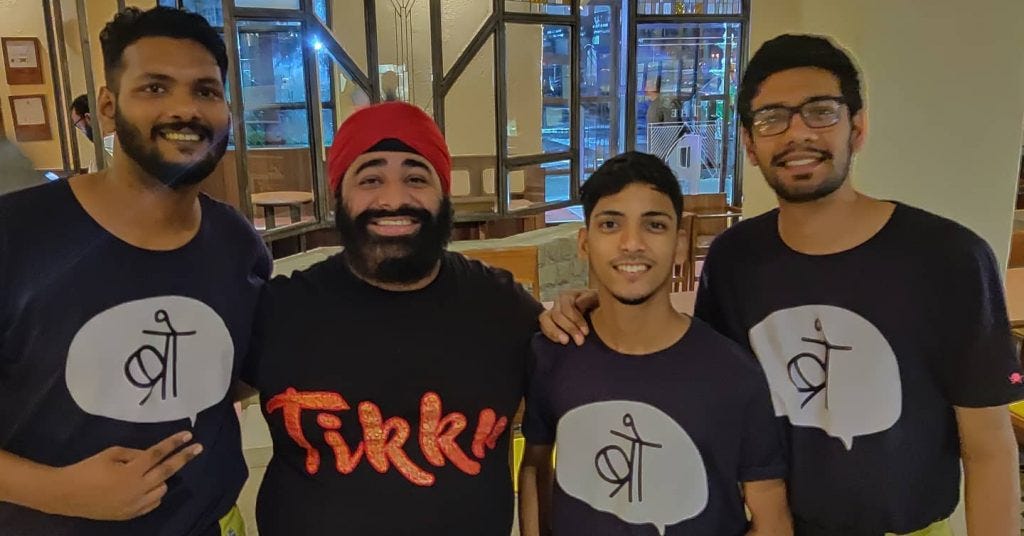
It seemed, then, that if you were considering starting a new restaurant in India in the mid-2010s, and your intention was to break new ground, an obvious way to differentiate yourself would be to borrow the emerging standards of American hospitality and apply them in an Indian context.
But that kind of cultural translation requires more than just enthusiasm and good intentions. It requires a missionary, a cultural translator of the highest calibre befitting the task at hand. In the case of Sameer and Yash, well before they had even begun to dream up their vision for Hunger Inc, they were fortunate to encounter a kindred spirit who filled in all their culinary gaps, someone who’d been building his own culinary bridge between the United States and India since as far back as 1988.
4. Flavorwalla
“Growing up and staying in Bombay from the 1960s through 1980s, good Indian food, as I knew it then, was always regional. Cooked and eaten at home, it was delicious. As a young boy I would wait for my friends to invite me over for a meal…especially those who were from different parts/regions of India—from Maharashtra, Kashmir, Karnataka, Bengal, or Rajasthan. Some of these friends were Catholic, or Hindu, Muslim, Parsi, or Sikh. No matter who they were, or where they came from, there was always amazing food cooked and served at home. My love for food grew from these meals.”
- Floyd Cardoz (Foreward to Tiffin)
Before The Bombay Canteen could exist, before regional Indian food could be considered fashionable in exalted culinary circles, before Indian chefs could be celebrated for innovation rather than tradition, there needed to be Floyd Cardoz.
Growing up in a Catholic household between Mumbai and Goa in the 1960s, Floyd had originally embarked on a career in medicine. Eventually deciding to switch lanes, he was considered an anomaly at the time for choosing the kitchen as his home turf. The 60s and 70s and 80s offered no blueprint for a male chef in India seeking culinary acclaim – no household names, no celebrated figures, no path worn clear by those who'd navigated it before. Cooking was seen as a decidedly blue-collar activity, unassociated with celebrity or creativity in the way it is now. “I left India in 1987, and one of the reasons was that chefs were not getting recognition here then,” he later admitted.

Floyd arrived in America in 1988 via stints at the Institute of Hotel Management in Mumbai and Les Roches International School of Hotel Management in Switzerland. After cutting his teeth at some of the city's 'traditional' Indian restaurants, he rose through the ranks at Lespinasse, one of New York’s most illustrious French institutions, becoming the first person of colour, and first person born and raised in India to lead a prominent fine dining establishment in New York City.
His anointing as the ‘godfather of modern Indian cuisine’ began in 1998, when he partnered with the aforementioned Danny Meyer to set up Tabla, a trailblazing restaurant that forever changed how Americans thought about Indian food.
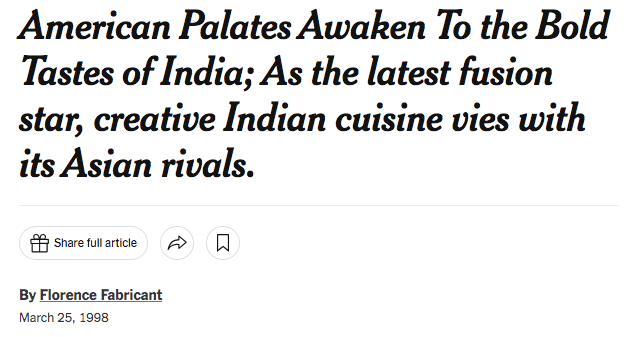
Tabla was built on a radical notion: that Indian cuisine deserved the same care, attention, and respect as French, Italian, or Japanese food. It wasn't just about dressing up Indian food in ‘fine dining’ garb – it was about challenging the very concept of 'Indian cuisine' as a monolith.
Floyd often argued that bundling the diverse culinary traditions of India under one umbrella was as absurd as grouping French, Italian, Spanish, and German cuisines under the banner of 'European food.' The differences between a Goan fish curry and a Kashmiri rogan josh are more pronounced than between a coq au vin and a beef bourguignon, yet one was treated as a variation on a theme, the other as a distinct expression of regional identity.
“Indians have to tell the story that our cuisine is fucking amazing, and it doesn’t have to be thought of as something that’s pedestrian or cheap or Curry Hill. We want to show you things that we eat here all the time.”
- Floyd Cardoz (via Ugly Delicious on Netflix)
Tabla was a return to the kind of ‘Indian food’ that Floyd knew growing up. This was light, soulful fare prepared by members of his family or cooked in the homes of his friends and neighbours. It had nuance, depth of flavour, and varied widely based on who was cooking it, where they were from, what time of year it was, and what was available in the market that day. Seasonal, regional and fresh. Less ‘Indian food’ than Goan food, Bengali food, Malvani food, Gujarati food, Parsi food, or Sindhi food.
To Floyd, that was what Indian cooking was, not the boring, loveless ‘restaurant cuisine’ that was being served in America at the time. He realised that “those who disliked Indian cuisine were afraid of all the lesser-known and unrecognizable Indian ingredients like pomfret and karela and the murky, greasy sauces. The menus in Indian restaurants never changed and were never seasonal. This made it a cuisine that was stagnant and one they did not want to eat very often.”
As chef and author Suvir Saran summed up beautifully in his tribute to Floyd in 2020, “Tabla gave the much needed bridge between the bastardized goopy-gloppy-greasy and cheap and cheery buffet table cuisine that people assumed was the length and breath of Indian cuisine, and what we are now discovering as the regional and seasonal, light and flavorful, fresh and incredibly nuanced cuisines of the Indian sub-continent.”
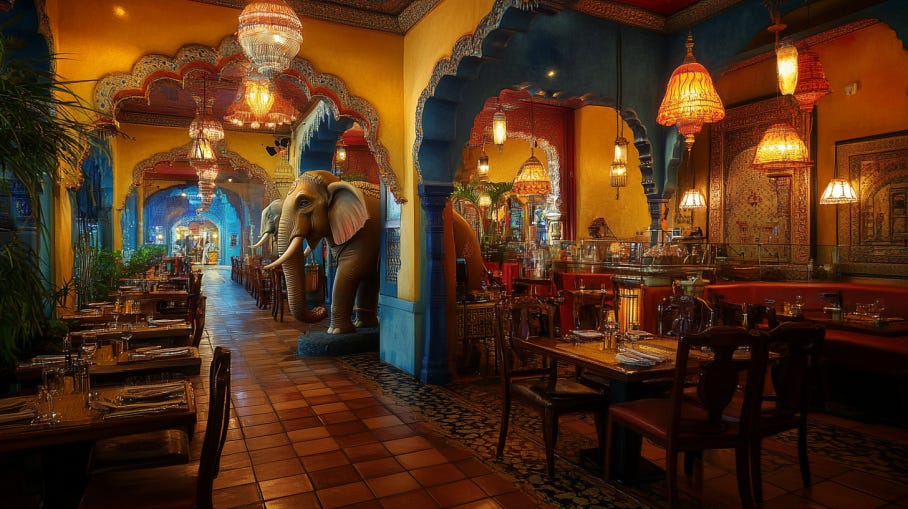
Tabla added an entirely new vocabulary to the American culinary lexicon. It expanded what diners thought possible from Indian flavours, beyond the tired, murky ‘Mughlai’ formula that was spammed across most curry-house menus.
Dishes that once seemed exotic – like crispy okra salad, upma with seasonal vegetables, bacon-cheddar kulcha, onion rings with chaat masala, or tamarind-glazed fish – eventually became part of the mainstream restaurant repertoire, even outside of America. Perhaps most significantly, Floyd pioneered the now-commonplace approach of applying Indian spice profiles to pristine local ingredients, erecting a culinary bridge that countless chefs have since crossed.
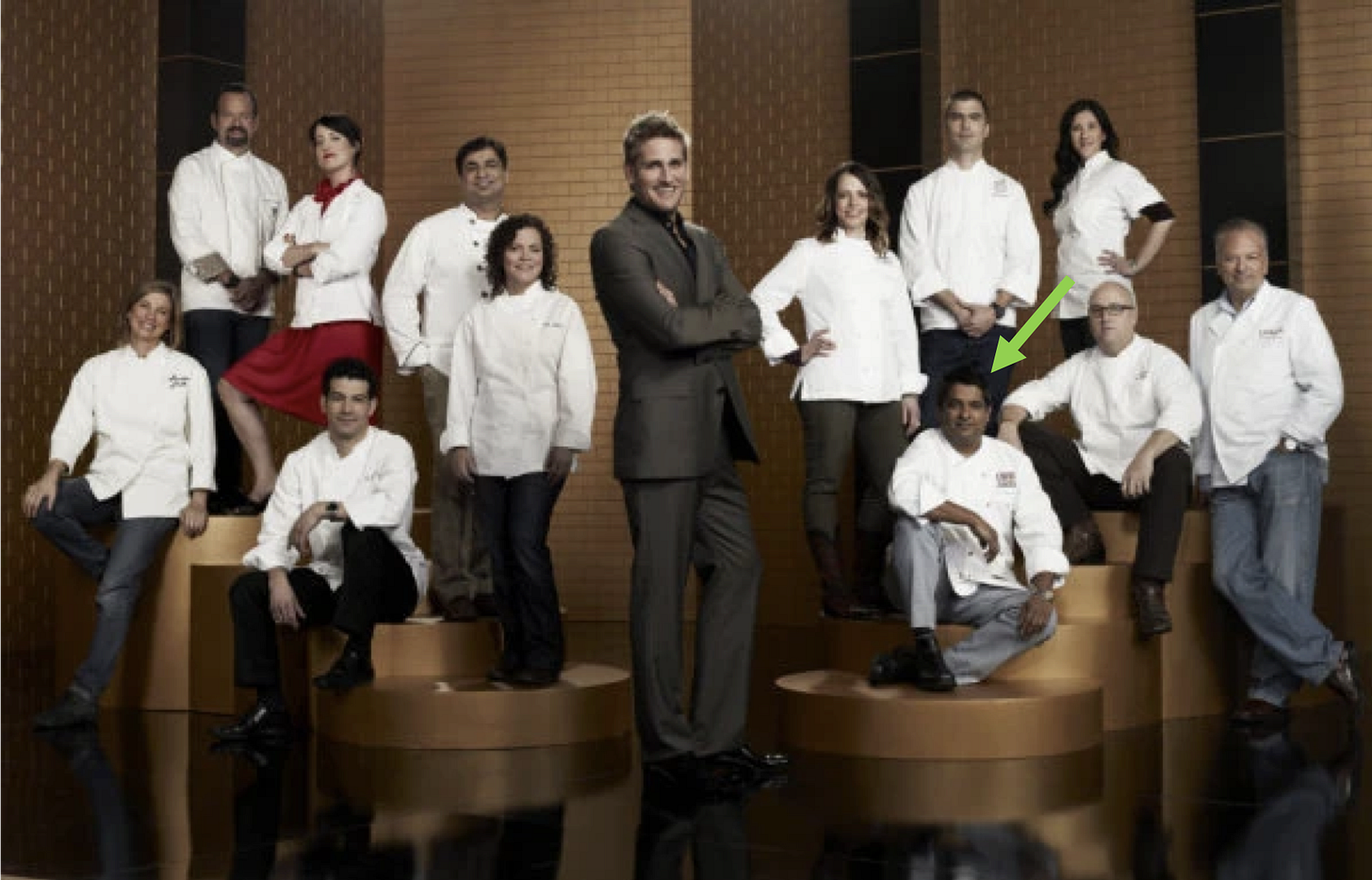
The thread connecting Floyd's childhood in Bombay and Goa to his groundbreaking work in New York (and eventually back in Mumbai) was a respect for food as a vehicle for cultural and personal expression. In his 2016 cookbook Flavorwalla, he reflected, "My food (like my life) is a fusion of many different cuisines and cultures, with subtle Indian accents."
For Floyd, cooking was never just about technique – it was about memory, emotion, and capturing the joy found in everyday moments. He often spoke of standing on a stool as a nine-year-old to fry eggs for his family's Sunday breakfast, of sneaking into his grandmother's kitchen in Goa to pilfer tamarind and pork sausages, and of wandering Mumbai's seafood markets with his mother to select the freshest catch. "Good food and cooking," he once wrote, "is not only about how a dish tastes or looks on the plate, but how good it makes the cook cooking it and the guest eating it feel."
It was this philosophy – that food should be soulful, joyous, and generous – that would resonate deeply with two young Indian hospitality graduates who, twelve years after Tabla first opened its doors, found themselves in New York with the same vision of what Indian cuisine could become.
5. Homecoming
“…anytime I hear or sense “trendy” (as opposed to “enduring”) as an important aspect of what’s going on, my antennae go up. It all comes down to knowing what you stand for and putting your product in the proper context.”
- Danny Meyer (Setting The Table)
Sameer had first met Floyd while still a student at Cornell. He’d been working on an independent study centred on the most successful restauranteurs in America, and was introduced to the Tabla luminary by one of his professors. “Floyd joked that I should go back to India after graduating. He told me that India was where it was at, and that I shouldn’t waste my time in the US. He said ‘just start something in India and I’ll join you’. I assumed he was just being nice.”
The interaction apparently left an impression on Floyd, because he invited Sameer to join him at Union Square Hospitality Group in late 2011, where he was in the midst of setting up his second restaurant in partnership with Danny Meyer.

Unlike Tabla, North End Grill wasn't focused on Indian cuisine. It was primarily a contemporary American seafood restaurant with a strong focus on wood-fired cooking. Sameer joined the team as a manager. As far as he was concerned, it didn’t matter what was actually being cooked. Getting the chance to learn how to properly run a restaurant from Danny Meyer and Floyd Cardoz was like getting the chance to learn how to properly administer an evil kingdom from Sauron and Saruman.
“It was like Disneyland,” he says. “I saw every aspect of what it takes to set up a successful restaurant, and more importantly how to set one up for the long haul. USHG is over 40 years old and its first restaurant is still at the top of its game. That kind of endurance takes a very different mentality. Opening a restaurant in New York is cutthroat as it is. Plus you have the weight of expectations from guests that expect and demand the best from anything that USHG does. To survive and thrive in that kind of environment takes time, and it boils down to culture.”
USHG represented the capstone to his education in the food business. “I saw how a restaurant had to be treated like a social laboratory, because you get to see the full spectrum of human behaviour. As a server, you have to read the table and read the room. You have to predict what people will need and pay attention for clues on how you can make someone’s experience special. It’s a dance between the front of house and back of house - like theatre. When the restaurant opens it’s curtains up - showtime. I spent only a year and a bit at USHG, but I’d never worked harder in my life until then. That experience directly informed the kind of restaurant I hoped to run someday.”
While Sameer was levelling up at USHG, Yash was on his own eventful journey through the Fairmont ecosystem, moving from Chicago to Singapore, cycling through various operational roles. "I was a jazz bar manager, a poolside manager and a quality assurance manager," he says. His education extended from perfecting the bitter-sweet equilibrium of a negroni to designing systems to keep birds away from eating bircher muesli off a hotel buffet.
Despite the 12-hour time difference and their demanding schedules, Sameer and Yash made a concerted effort to stay in touch. Their conversations often circled back to the possibility of someday bringing their collective experience back to India. They had so far reaped the benefits of learning and making mistakes on someone else’s dime, but were feeling the itch to have more skin in the game themselves.
After one particularly exhausting night of work at USHG, Sameer set that ball in motion, punctuating their usual conversation with a phrase that has signalled the divine moment of conception for scores of entrepreneurial dreams in India - “Kuch karte hain”
6. India Today
“I believe the next step for Indian food, restaurants and chefs is to celebrate India. Look for ingredients from the far reaches of the country. Celebrate the cooking of all regions. Figuring out a way to use ingredients that our forefathers used in everyday cooking will evoke magic.
- Floyd Cardoz (via Chillies and Porridge)
Hunger Inc’s inaugural venture emerged partly as a result of Sameer and Yash looking around at what was happening in the restaurant scene in the United States and Singapore, and partly from observing how standalone restaurant culture was evolving back home in India.
From their perspective, in 2012, restaurants across North America and Asia were experiencing a renaissance of localism. Chefs were turning inward, rediscovering their own culinary heritage rather than chasing international trends. There was an explosion of farmers markets, locally-sourced ingredients, and a newfound appreciation for regional traditions - creole cooking in the American South, BBQ in Texas, hawker cuisine in Singapore, farm-to-table fare in California. Chefs were telling stories of their lives through their food, connecting people to a special place, a time, and a memory.
Back in India, standalone restaurant culture was just emerging from the shadows of five-star hotels, but without same introspection. “At the time, if you were going out to a restaurant in India, you either went out for Asian food, or you went out for ‘Continental’ food, where every menu featured the same holy trinity of burgers, pizzas and pastas, regardless of the context,” recalled Yash.
Dining attitudes were different back then too. Compared with today, eating out was more of an occasion than a lifestyle, which meant you mostly went out to eat things you couldn’t get at home. So even if you were going out for ‘Indian food’, it meant you were usually selecting between one of two available options.
“You would either go to a South Indian Udupi-style restaurant where you got your idli and dosa,” Sameer explains. “Or it was North Indian Mughlai-type cuisine - your local Moti Mahal or Copper Chimney, where you knew what your order was going to be even a week before you went. It would be some combination of butter chicken, dal makhani, palak paneer, and naan. And you’d get exactly what you came for. The meal was always delicious and familiar, and you’d walk out happy, stuffed, and ready for bed.”
These kinds of establishments had been around for decades. They had found a winning formula around providing delicious crowd favourites in non-intimidating family-friendly environments, and stuck to it, seeing no reason to fix what wasn’t broken. “But they weren’t the kinds of places you’d go to for a night out, or for a date, or to find an inventive cocktail programme,” says Sameer. This lack of reinvention played a major part in explaining why Indian restaurants had acquired a reputation as “places you would take your parents to”.
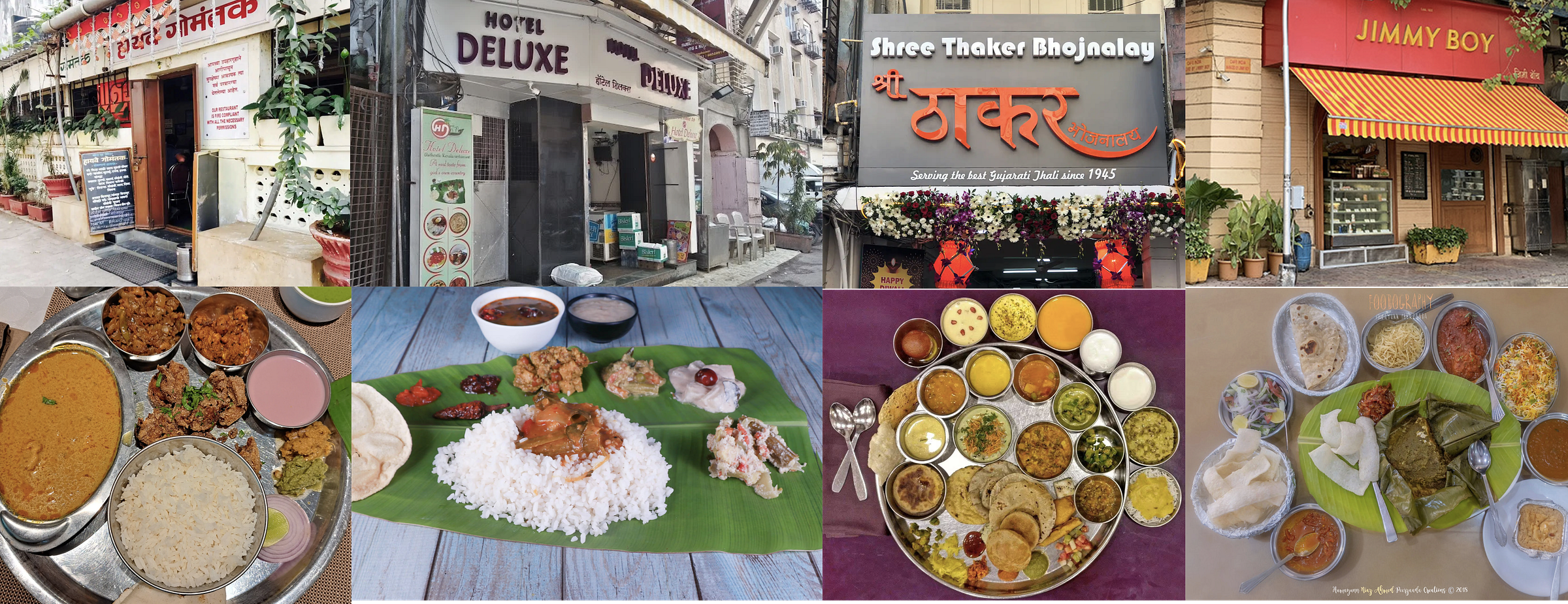
Similar to the epiphany that Floyd had had more than a decade earlier with Tabla, Sameer and Yash felt that there was so much more to Indian cuisine that lay between the Butter-Chicken-and-Dosa axis. There was so much regional variety that hadn’t yet been reimagined or showcased in a contemporary setting. There was no Indian restaurant for “the India of today”.
The duo had noticed that, as Indians became more exposed to sushi, ramen and risotto, we had developed a blindness to the wealth of our own cuisine. We had been trained to think that ‘Indian food’ - a mosaic of 28 different cuisines with spices, flavours and techniques bequeathed by the British, Mughals, Dutch, French, Portuguese, Persians and everyone else who passed through The Golden Road, was somehow not exotic enough to merit a sophisticated restaurant setting.
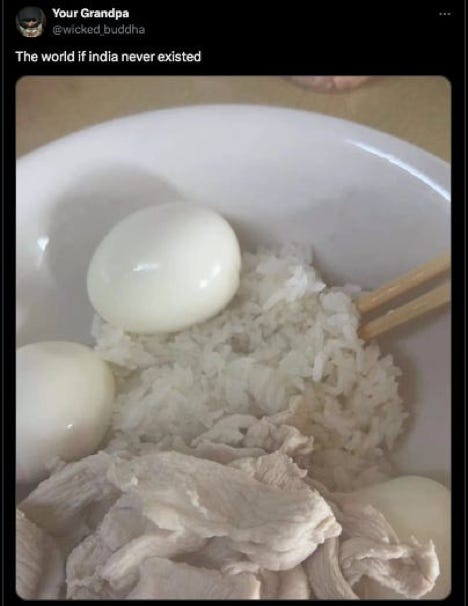
The gap they identified went beyond just what was on the plate. It extended to the entire *experience*—the ambience, the service style, the beverage program. The duo saw an opportunity to create something that spoke to a new generation of Indian diners. These were the individuals who’d gotten comfortable with travel, who’d been exposed to global restaurant trends, who were looking at food as a form of entertainment, and had yet to experience the same quality of experience enrobed around their own cuisine - not the monochromatic ‘Indian restaurant’ food that the world had come to associate with the Subcontinent, but the seasonal, fresh, nuanced, delicious food that had been thus far mislabelled as ghar ka khana.
That’s where the idea for Tiffin Club came from.
7. Tiffin Club
In late 2012, Sameer and Yash took the decision to quit their jobs to bet on themselves (and their restaurant idea). Rather than elbowing for room in the crowded restaurant landscapes of America or Singapore, they reasoned that it would be smarter to return to India, to do battle on home turf.
The next big call was to decide which city would be their ideal landing spot. After briefly mulling over options like Bangalore, Delhi and Pune, they zeroed in on Mumbai. “Mumbai has always had a more experimental palette when it comes to food,” says Yash. It helped that both of them had spent the early part of their careers in the city. It was also fitting that Mumbai, India’s pre-eminent melting pot, had always welcomed amalgamation. It had always been appreciative of reinvention. Thus Maximum City was the perfect stage for what they had in mind.
As for what they had in mind? They laid out their thesis in a concept note (one that would go through a few subsequent iterations, but remain mostly true to the original vision).
The name was an extension of this ethos. ‘Tiffin’ was the British term for a light midday meal that had been co-opted to describe the modern Indian ritual of carrying and sharing home-cooked food from stacked metal containers. The ‘Club’ part didn’t have any thing to do with nightclubs. Instead it was a nod to the colonial-era community hubs that dotted India's presidency towns – those membership establishments where people gathered for sports, drinks, conversation, and connection.
‘Tiffin Club’ spoke to the kind of restaurant they wanted to create - one that celebrated India through its food in a casual, fun atmosphere – reimagining traditional recipes using only locally sourced ingredients, with menus changing regularly to reflect what was in season. It would reject the performative stiffness of fine dining – their staff would be encouraged to be themselves, guests could dress however they pleased, and the experience would feel like eating in someone's home. (Their attempt to use the name would ultimately be thwarted, but we’ll get to that later).
The only wrinkle was that neither of them were trained chefs. “We were honest with ourselves,” says Yash. “Both me and Sameer were front of house and operations guys. We needed someone who could make the menu that matched our vision.” Without any connections of their own, they approached Sameer’s old boss Floyd Cardoz for advice. “We presented our idea to Floyd over Zoom to get his feedback,” recalled Sameer. “We told him this is what we’re thinking, and asked if he could connect us with any chefs in India who might want to come onboard.” To their surprise, Floyd volunteered to join them himself.
His leap of faith would steel the would-be restauranteurs with confidence, validating their thesis, and legitimising their efforts. It would also honour an offhand promise Floyd had made to Sameer when the latter was still at Cornell, to join him if he ever decided to start something in India. As to why a chef with his pedigree and stature would agree to join two upstarts with no restaurant experience, Floyd would later attribute it to their enthusiasm, their realness, and their vision that resonated with him. “More importantly,” says Sameer, “we had the balls to ask.”
Floyd came on board as their third partner in 2013, adding “flavour” to their business plan. Having spent over a decade educating Americans on the nuances of Indian cooking, he was able to provide the philosophy and language that grounded their vision. The trio raised around Rs. 1 crore as startup capital, partly from external investors and partly via a loan from Sameer and Yash’s parents. They spent a few months fleshing out their idea over cross-continental Zoom calls. Sameer would move back in early 2013, Yash soon after, where they would kick start their hunt for the right location to bring their vision to life.
8. The Bombay Canteen
It took almost nine months for them to find a home.
For any restauranteur in Mumbai, finding the right commercial real estate at the right price in the city is akin to threading the eye of a needle through a haystack. Given that Hunger Inc were marking their arrival with a novel concept that hadn’t been proven yet, they had to be judicious about where they planted their flag. After scouring for a suitable site in every corner of the city, they found their home on the grounds of an old textile mill that, fittingly and poetically, was in the midst of its own reinvention.
For those not clued in to the city’s history, Mumbai's textile mills were once the economic and social backbone that transformed a fishing village into an industrial powerhouse. In the mid-19th century, as the American Civil War cut off cotton supply to British textile factories, Bombay - with its deep-water harbour and new railway connections to the cotton-growing regions of India - stepped in to fill the void. The city's first cotton mill opened in 1854, and the subsequent mushrooming of mills cemented its status as 'The Manchester of the East'.
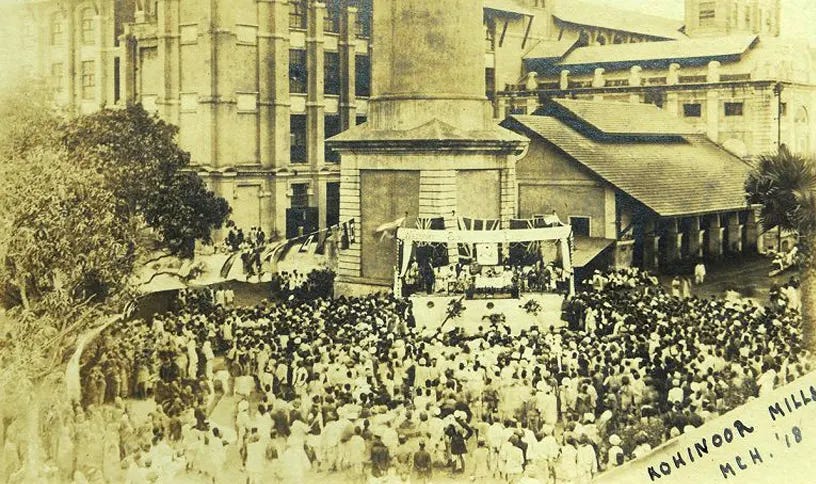
The ‘cotton boom’ shaped Mumbai’s identity, attracting waves of migrants from across the country seeking opportunity, thus creating new neighbourhoods, dialects, and cuisines, and establishing the city as India's commercial capital and multicultural hub. The mill owners became the city's new aristocracy, while mill workers sowed a distinct working-class culture into the seams of the city. By the 1980s these mills had outlived their usefulness, and the land was gradually repurposed for luxury apartments, towering high-rises, entertainment venues and office space over the subsequent decades.
When Sameer and Yash stumbled onto the 4000 square-foot husk of an old mill building in the compound of the erstwhile Kamala Mills, it didn’t exactly scream ‘restaurant’.

“At the time, Kamala Mills wasn’t the bustling commercial complex it is now,” explains Yash. “Todi Mills, across the road, was where the action was. There were places like Blue Frog and Cafe Zoe that were already open and doing well there. But the rent was too high for us, so we looked at Kamala Mills, which was like the less sexy step sister. It was a mostly empty compound then. There were no big high rises in the area yet. And the big offices hadn’t started moving in - it was mostly blue collar work spaces. We knew we would have to make the market ourselves, but we saw the potential of the site. It was a big, open space. There were high ceilings, and scope for a lot of natural light. It was a bet on the area too, that there would be enough of a ‘demand circle’ of offices and residences to sustain a lunch and dinner service. Most importantly it fit within our budget for rent [around 12-15% of their forecasted monthly sales].”
To translate their vision into a physical space, they enlisted Ayaz and Zameer Basrai of The Busride Design Studio, who’ve left their architectural fingerprints on many of India’s prettiest restaurants and cafes. The brief was clear: to create a place that celebrated both the old and new of Bombay through its design—a space that felt both nostalgic and contemporary, similar to their vision for the menu.
The Basrai brothers approached the project with a forensic mindset, sifting through literature on what makes spaces feel inviting. They observed that people naturally gravitate towards walls and windows when entering a large space—because these provide a sense of being anchored, of being safe and grounded. This insight defined their approach.
They conceptualised a space that looked as if an old colonial-era Bombay bungalow had been plucked up by a giant crane, leaving behind memories, materials, and unfinished fragments. The resulting design incorporated ‘Malad’ stone walls rising just three feet from the ground, creating semi-private dining zones; stained glass windows and partitions inspired by Mumbai’s iconic Irani cafés; an assortment of coloured and patterned floor tiles resembling those from an old Bombay mansion; and even a staircase that ended mid-flight, suggesting a history interrupted.
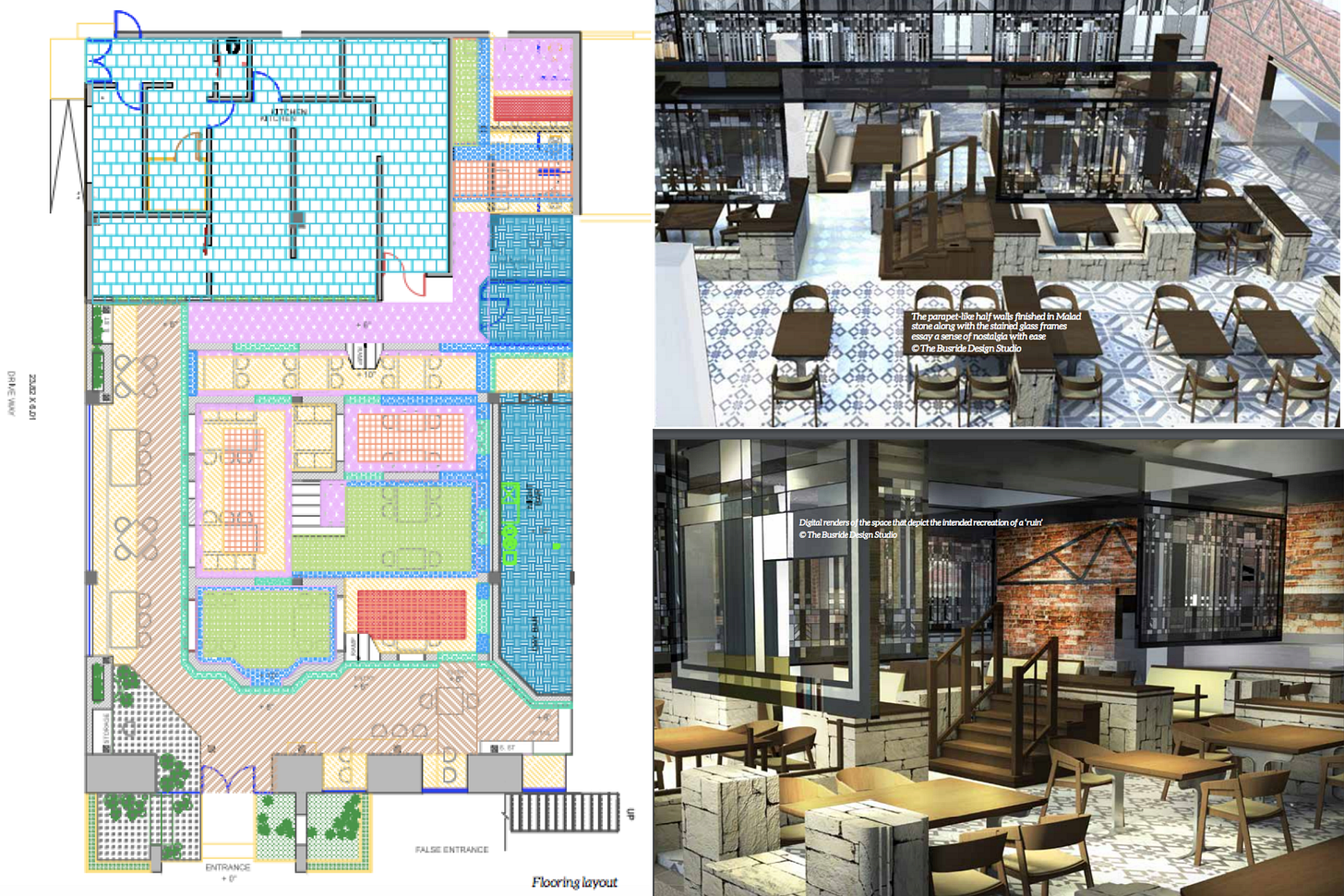
The idea was to create an “incomplete structure”, to give people the feeling of walking amongst the old walls and old rooms of a typical Bombay bungalow.
"We thought it'd be fun to populate a ruin with another ruin," explained Ayaz Basrai. "It's like walking into a large warehouse and stumbling upon the wrecks of an old bungalow inside."

"The clarity in food offerings, the overall city-love, and the leanings towards a nostalgic nod to the 'Best of Bombay' informed the design process profoundly," Ayaz said. The bar was designed with deliberately lopsided shelves displaying an eclectic mix of props, artefacts, frames, and books alongside the liquor bottles.
All of the design fed the overall narrative. Every element told a story, inviting patrons to piece together remnants of a fictional bungalow through clues embedded throughout the space. The structure deliberately juxtaposed colonial Mumbai (the old stone walls) with contemporary Mumbai (via the Art Deco elements in the glass and steel), capturing both tradition and modernity.
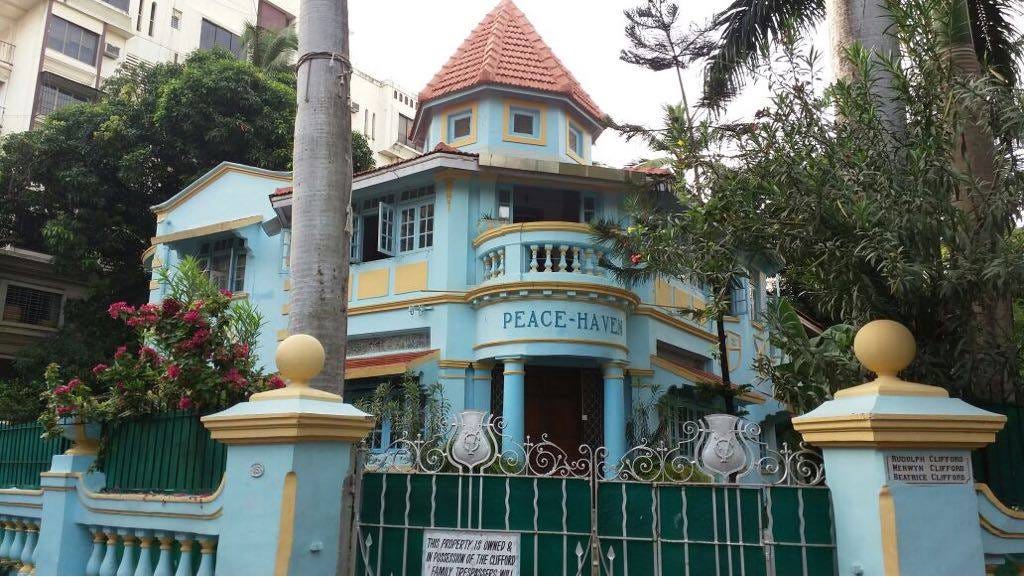
Their design ultimately transformed a barren mill space into what felt like the dining room of a colonial-era Bombay home. It would eventually find its true identity as a slightly different type of communal space.
“A few months before we opened there was another restaurant called Tiffin Time that launched in Mumbai, so we had to change our name” recalled Yash. “We wanted to incorporate the word ‘Bombay’, because the restaurant would be a product of its surroundings and its community. And we decided to go with the word ‘Canteen’ because it felt like that was the kind of environment we were hoping to create. Everyone in India has a memory of a canteen - your school canteen, your college canteen, your office canteen. It’s where you would catch up with your friends, chat with your crush or gossip with your colleagues. We wanted to offer that same setting for people - a place where they would feel comfortable visiting on any occasion, a safe space to exchange stories. That’s why we went with the name.”
With a name and space in place, the next big priority was to define what they were going to cook, and more importantly, who would be doing the cooking.
9. Outside In
“I believe a cook becomes great when, and only when, he or she understands where his or her taste buds come from. Understanding their native cuisine gives them an understanding of the nuances of all cuisines.
- Floyd Cardoz (via Chillies and Porridge)
Back in 2014, Floyd was still juggling his restaurant commitments in the US. He planned to divide his time between New York and Mumbai for the opening of The Bombay Canteen (TBC). It meant that Hunger Inc still needed to find someone on the ground to lead the kitchen at TBC. Their search led them to two chefs whose culinary philosophies would set the tone for their decade-long adventure.
The first was Thomas Zacharias. Thomas had fallen in love with food as a kid back in his grandmother’s kitchen in Kerala. He’d seen how people’s faces would light up with happiness as soon as she laid down her food on the table, and become hooked by that “superpower”. After graduating with a degree in hotel management from Manipal, he trained at the Culinary Institute of America (CIA) and worked at the three-Michelin-star restaurant Le Bernardin in New York, before returning to India to helm the kitchen at Olive Bar & Kitchen in Bandra, Mumbai.
While Hunger Inc was beginning its search for a head chef, Thomas had just come off a four-month sabbatical through Europe, where he’d visited France, Spain and Italy for the first time. He had hoped to get better intimated with the European fare he’d been serving up at Olive, and the kind of cuisines that had become his go-to speciality in the initial years of his career. The trip had led to a very different kind of epiphany, courtesy of a meal at the famed Osteria Francescana in Modena, Italy, hailed by many counts as the best restaurant in the world at the time.
Owing to a late cancellation, he was able to snag a seat as a single diner for the three-hour twelve-course experience, setting the scene for a moment that changed the course of his career. At a talk at his alma mater in 2019, he recounted the incident that led to him eventually coming on board at The Bombay Canteen:
…what was interesting about that restaurant is inspite of its fame, the chef still comes out and talks to every single table. And the chef Massimo Bottura came to my table and he started talking about his inspiration and his philosophy. And he said “what I’m trying to do is showcase my own cuisine, and my inspiration was my grandmother”. And at that point everything changed for me. I had an epiphany at that point. And I realised that, how does it make sense for me, an aspiring chef, to be spending all my time, energy, and money focusing on a different cuisine when I had nothing to explore my own? And that’s when everything changed for me.
Thomas had walked out of the restaurant feeling restless, thinking that his work didn’t have a higher purpose. He came back to India and eventually quit his job at Olive, embarking on another food pilgrimage, this one closer to home. This trip would take him across the Subcontinent, covering 18 states over two months to explore the richness of India’s own food traditions, unearthing recipes, flavours and techniques that rivalled anything that Europe could offer. Around this time a headhunter connected him to the Hunger inc team, who were looking for an Executive Chef to run The Bombay Canteen, a new restaurant that wanted to spotlight the vast bounty of India’s culinary terrain. As Thomas recalled - “I was sold in five minutes”.
Thomas came on board as the first Executive Chef and one of the four founding partners of Hunger Inc, along with Sameer, Yash, and Floyd, who served as Culinary Director for the group. Equally important to forging the group’s DNA was Thomas’ sous chef (second in command) at The Bombay Canteen and eventual successor as Executive Chef of the company - Hussain Shahzad.
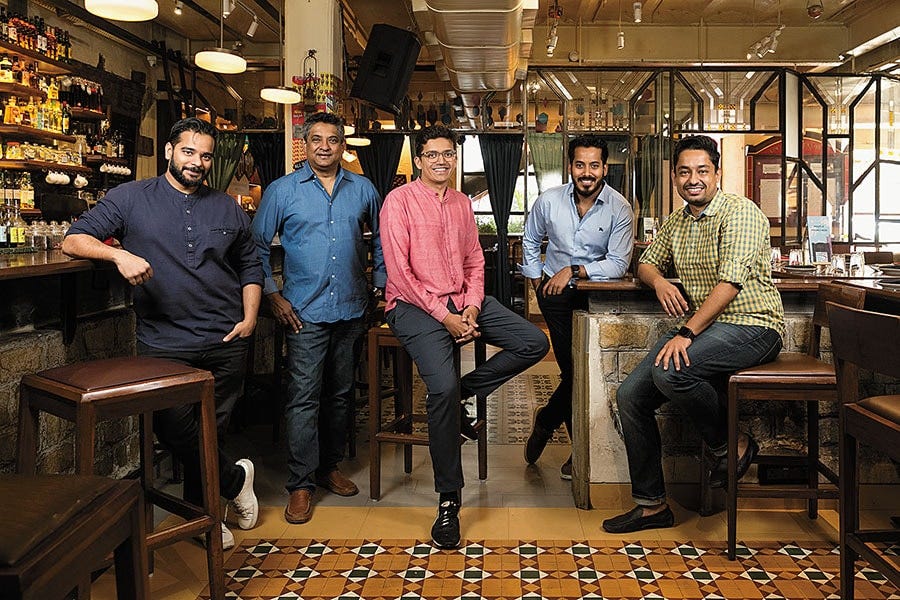
Hussain would only join the crew a few months after The Bombay Canteen had already opened, but had been on the team’s radar since well before that. Born in a Bohri Muslim household in Chennai, with a father from Mumbai and mother from Patna, Hussain's upbringing was a mishmash of cultures that shaped his fluid approach to cooking: "There are no rules. If it tastes delicious, it belongs."
Like Thomas, Hussain's earliest food memories were shaped by family. They involved sitting by his grandmother on the patla while she rolled out rotis, waiting to be rewarded for sitting patiently with one lathered in gud and ghee. Also like his future kitchen-mate, he’d started his hospitality education at WGSHA in Manipal (a few years Thomas’ junior). After working as a banquet chef at the Trident Hotel in Mumbai, he swapped the suite life for the pressure-cooker kitchen of Eleven Madison Park in New York, working under Chef Daniel Humm to learn what it took to run the kitchen at the best restaurant in the world. The exacting standards and attention to detail meant that “Every night was a World Cup final.”
In 2014, Hussain had made up his mind to leave EMP and return to India (but not before a two week stint working as Roger Federer's personal chef). Through Thomas, Floyd heard about this talented Indian chef looking to come home and saw an opportunity. It would take three separate recruitment attempts before a final ambush at The Bombay Canteen after the restaurant had already opened finally convinced him that their vision of modern Indian cuisine—thoughtful, technique-driven, and deeply respectful of regional traditions—was something he wanted to be part of.

I had the chance to chat with Sameer, Yash and Hussain for this story, and the thing that stood out for me was that aside from Floyd, none of the founding team (or Hussain after) had ever worked in an Indian restaurant before. No one had even cooked Indian food professionally before. On the contrary, all of them had come through the Indian hospitality machine at a time when your self worth as a chef was measured by your mastery over European techniques and flavours - the age of béarnaise, not bhuna.
As it turned out, that clean slate was probably a big part of why the eventual menu at The Bombay Canteen was such a departure from convention. “We had less emotional attachment to traditional recipes,” says Hussain. “We were able to look at the entire landscape of Indian food with curiosity, with humility, without any pre-conceived notions, and allow ourselves to be guided more by flavour profiles, techniques, memories, and ingredients, rather than a futile attempt at chasing ‘authenticity’. If you think about it logically, what was once new and innovative is something we regard as ‘authentic’ today. To us those ‘authentic’ dishes should be used as the starting point for innovation, not the end. And we fully expect that our own creativity today will one day become the inspiration for someone else’s experimentation. That’s the approach we took.”
Before opening, the team did what they've continued to do before launching any concept: immersive research. They traveled extensively across India, gathering not just recipes but context. Their approach wasn't to visit established restaurants but to dive into homes, markets, and roadside eateries—places that are still strongholds of our food traditions. What they found was that ‘Indian cuisine’ wasn't one thing but dozens, hundreds of micro-cuisines that varied widely in how they did things.
Each of these local doctrines has its own techniques and flavour principles, influenced as much by religion, caste, wealth and class as much as they are by geographical boundaries. For example, a sambar in a Brahmin household is likely to be made with ghee and without onions and garlic; or consider that in Rajasthan's arid climate, the warrior Rajput caste developed meat-heavy dishes preserved with spices and ghee, while merchant Marwari communities evolved sophisticated vegetarian alternatives using local desert ingredients. The deeper the Hunger Inc team burrowed into Indian cuisine, the more they realised there was no such thing. “It’s why we say that we don’t spotlight Indian cuisines at The Bombay Canteen but the ‘cuisines of India’,” says Chef Hussain.
Unsurprisingly, when TBC opened in February 2015, the commitment to showcasing the full wealth of India’s food made it quickly apparent that there hadn’t been an Indian restaurant like it before.
10. “It’s a good day to Bombay”
The Bombay Canteen opened its doors to the public on 11th February 2015.
The day before, on 10th February 2015, Arvind Kejriwal of the Aam Aadmi Party was elected Chief Minister of Delhi in a landslide victory that marked the start of a new political era in India’s national capital.
I imagine after reading that last sentence you’re wondering what this random bit of trivia has to do with the crew at Hunger Inc?? As it turned out, Mr. Kejriwal’s victory would lend the gift of inspiration for a dish that would become one of TBC’s most cherished and iconic creations, conceived on the restaurant’s very first day of operations.
“Thomas [Zacharias] had come up with this terrific green chilli coconut chutney based on his grandmother’s recipe that we couldn’t figure out what to do with,” recalled Sameer. “We had this brioche bread leftover from another dish, and the night before opening, some of the team decided to combine this bread and chutney with eggs and cheese to make our own version of the Eggs Kejriwal. It was so good that we decided to put this on the menu as a special on Day 1. We got reviewed and written about that day so everyone who came in afterwards kept asking for it.”
“Now, If you grew up in Mumbai, you probably know the origin story of the Eggs Kejriwal at Willingdon Club. This gentleman named Devi Prasad Kejriwal was a vegetarian at home, and wanted to hide the fact that he used to come to the club to get his fix of fried eggs from other guests. So he used to ask the servers to disguise the eggs with a layer of cheese, green chillies and chutney. If you knew that story, that’s why you ordered the dish. But for everyone that didn’t, they thought it was funny that we were paying homage to Arvind Kejriwal’s victory. The name continues to strike a chord with people even today, and you’ll have a table of 20 coming in just to order 20 Kejriwals each. Why? Because at its core it’s just a yummy, comforting chilli cheese toast. And it all started with some spare ingredients and a pop cultural moment coming together at the right time.”

TBC’s Eggs Kejriwal - simple, delicious, tongue-in-cheek-y, with just the right dash of culinary flair and a fun story to boot. It was The Bombay Canteen in a nutshell.
The mythology surrounding this instantly-signature dish added an extra ‘z’ to the buzz that had been brewing ahead of the restaurant’s launch. Not that it needed any extra juice. TBC could already count on the considerable hype that had surrounded the homecoming of Floyd Cardoz, almost thirty years after he’d left the city for foreign shores to find the right appreciation for his culinary gifts. Hype can often be a double-edged sword in the restaurant business, but in the case of Hunger Inc and TBC, what kept them even-keeled was the fact that the only pre-existing image they really had to live upto was the one that had been germinating in their heads for the past 24 months.
“When people first walked into Bombay Canteen, they saw these Malad stone walls, this Art Deco inspired glasswork, colourful retro posters, a beautiful bar and cocktail programme, staff in T-shirts with ‘Bro’ written on them. It might seem a bit clichéd now but 7-8 years ago none of it conformed to any pre-existing image of an Indian restaurant,” says Yash.
Similar to what Floyd had done with Tabla in 1998, TBC didn’t offer a caricature of India. Instead, it presented a vivid portrait of a very different profile of the country that hadn’t yet been expressed in a restaurant setting - a lighter side that that didn’t take itself so seriously.
Instead of table lamps and Taj Mahal’s, the team dabbled extensively in nostalgia to stir up the kinds of warm, fuzzy memories that people associated with their favourite Canteens. Every detail was defined working backwards from the sense of homely comfort they wanted their guests to feel when they walked in.
This meant repurposing old Rooh Afza bottles as water jugs, the same way that Indian households used to do in the 70s, 80s and 90s; or using old-school hand-bound account registers as menus; or taking their branding cues from retro posters ripped out of old magazines; or sending around trays of snacks and chai in the evenings the way you would if you had guests visiting your home. It even extended to their delivery packaging, which was designed to resemble a traditional cloth-based potli, that Indian families would use to carry their food while travelling (this one could even double as a reusable tablecloth).
A lot of the credit for the personality of TBC is owed to Avinash and Pritha Thadani, the husband and wife duo that founded Please See, one of India’s foremost design and branding agencies. If Hunger Inc is a family, then Pritha and Avinash are the type of cousins that are around so much that your mom instinctively just puts out a couple of extra plates for dinner every night. Originally recruited by the Hunger Inc team to help with logo and menu design for TBC, the Please See duo have become a “mirror” to everything the team does, contributing to some of the most pivotal ideas and initiatives of the company over their decade long journey.
Pritha summed up the ethos of the team in the early days, telling me that “They wanted start a conversation about India in a softer setting.”

Where TBC broke with convention in India was in entrusting its front-of-house staff to carry that conversation. “We call it ‘Hospitality First’,” says Yash. “It’s about treating our team the way we want them to treat our guests. It’s about building their confidence over time so they can speak to our customers on an equal footing, and help tell the story of the restaurant. We want our servers to be able to tell you their opinions on dishes, and not just recite ingredients.”
The only way to do that was to have their service staff sit at the same table as the rest of the team, involved in pre-serving briefings the way it was done in the West, trying and tasting all the food that the restaurant would be serving so they could come up with their own impressions firsthand. Clad in various playful, pun-friendly T-shirts in the early days (inspired by Batman, Star Wars, and whatever else was top of pop culture at the time), the idea was to use a combination of explicit and implicit cues to slowly break the ingrained socioeconomic barriers that typically colour the interactions between diners at servers at high-end restaurants in India.
As to what was being served? Floyd's mandate to the team was “to teach people to eat the way we used to eat—and make it accessible, affordable and fun. Don’t do things that will cost people an arm and a leg because they’re not going to want to come and eat with us.”
The first iteration of the menu was focused on spotlighting regional dishes that were not typically found on ‘premium’ restaurant menus. These were dishes inspired by their travels across India, by their childhoods, by their families, and by the city.
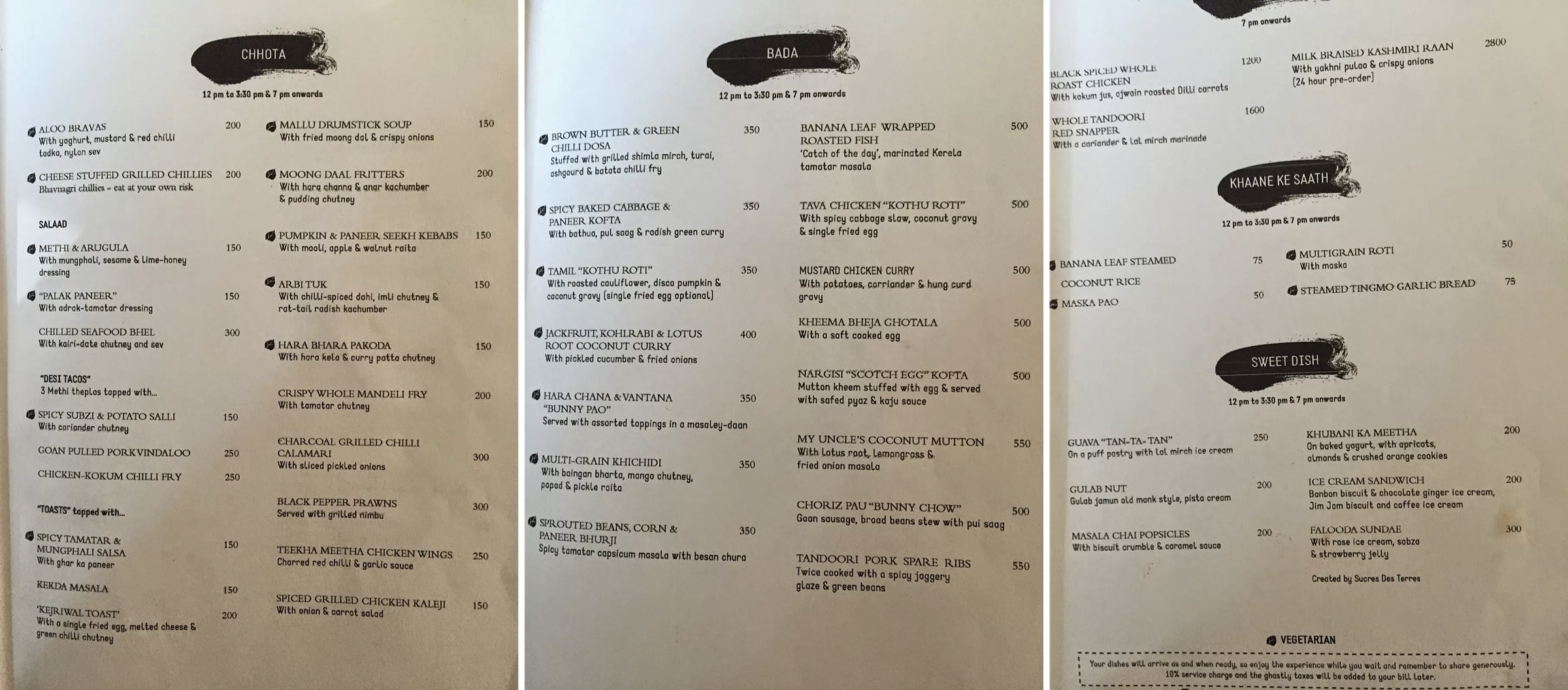
The goal was to demonstrate that lesser-known ingredients, dishes and micro-cuisines could not only be as interesting, but as delicious as the usual ‘Indian’ food that restaurant-goers were used to sampling. That point had to be continually massaged in, even in the face of the occasional critique.
“I remember we had a customer who came in and said ‘you have a tandoor, you have chicken, why can’t you give me chicken tikka?’, but we had to stick to our guns and be clear about what we were and what we weren’t. We realised you can’t be everything for everyone, and that’s okay,” says Sameer. The team will also freely admit that it took time to get the vegetarians on their side. “The four of us original partners were all good carnivores, and a lot of our early veg dishes were just stripped down versions of our non vegetarian food. That’s not the case now.”
Even in the early months, for every occasional person that said ‘why would I go to a restaurant and pay money to eat things like lauki, arbi, mandeli, and poi saag, when I can get the same thing at home?’, there were scores more that beamed with pride seeing that dishes from their homes and hometowns were cool enough to make it onto a restaurant menu.

In what has become a running theme with any of their restaurants tackling cuisines of the Subcontinent, there is a lot of thought that goes into this presentation. It’s never innovation for the sake of innovation, reinvention for the sake of reinvention, or representation for the sake of representation. Instead they always ask themselves whether are adding something new and substantive to the dialogue about Indian food.
I didn’t get to chat with Chef Thomas Zacharias (who led the kitchen at TBC as Executive Chef for its first five years), but he summed up his approach to showcasing unheralded regional cuisines on a podcast last year that I thought was particularly insightful:
…the questions I would ask when I came across dishes that inspired me on my travels is that:
Has this food been served in restaurants in mainstream cities before?
Am I doing justice by bringing these dishes to the forefront? Are they lesser known dishes? Is there a point to be made here?
Do I need to alter it in some way to make it accessible for people in cities or can they exist on their own?
…but the first thing that I would always do is recreate the original dish the way it is before innovating, because if you cant do that then you’re not really holding on to the integrity of those original inspirations.
In other words, there was always a sense of purpose to what they were doing in the kitchen. That sense of rootedness in something real, is a big part of why TBC has been able to thrive for over a decade (as of this time of writing). “By the mid 2010s there were lots of new ‘modern Indian’ and ‘Indian fusion’ restaurants that were beginning to emerge,” recalls Yash. “Most of these places were trying to ape this silly trend of molecular gastronomy. It was liquid nitrogen this, dehydrated that, it was all smoke and mirrors. There was no heart in any of it, which is why none of those places are still around. What we were trying to do was different.”

Even accounting for the earnestness of their approach, there was no way of knowing what the actual response from diners would be. In fact, the team had been so cautious in their planning that part of the rationale behind the bungalow design was that they'd be able to conveniently cordon off sections of their ‘home’ during slower periods to conserve electricity. But from day one, those plans evaporated. “We were really lucky to have a heartening response right from Day 1,” says Yash. “We thought we would be serving a 100 people per day but we were doing over 100 covers at lunch itself.”
That response has largely stayed at the same heady level for the last ten years. It’s why the team were able to break even on their investment in the first month. It’s also what helped The Bombay Canteen transition seamlessly to becoming Bombay’s Canteen, a culinary landmark and community hotspot that celebrates Mumbai as much as it does India. Their first year saw the venue playing host to everything from stand up comedy shows, jazz and swing nights, and Bada Bacha Parties on Children’s Day (featuring grown up versions of childhood treats like rasna golas, sharbat with Bacardi etc).
For out-of-towners visiting Mumbai, TBC became a mandatory pilgrimage—so much so that the team created a special "Canteen Experience Menu," a curated tour through their greatest hits designed for first-timers who'd otherwise be overwhelmed by choice. A major validation of their thesis on real estate was that the success of TBC had a knock on effect on the surrounding Kamala Mills compound too, which became a buzzing commercial complex in the years that followed, with plenty of restaurants rushing in to cater to the mushrooming office crowd in the area. “We are fortunate to be embraced by the Kamala Mills crowd which means we’re always busy for lunch,” says Yash. “I always tell aspiring restauranteurs that if you can find a way to be busy at lunchtime, you’ll give yourself a good chance of having a successful restaurant.”
The reason it is still a draw ten years later is because the team hasn’t allowed themselves to rest on their laurels. “A restaurant is only 50-60% done on the day it opens,” says Sameer. “We are constantly aware of the need to evolve and adapt. The Bombay Canteen has been through a couple of refreshes and renovations in its lifetime. For example, we needed to tweak the original identity because the idea of nostalgia itself has changed. A Parle-G would have been nostalgic for someone in 2015, but today someone in their 20s might have nostalgia for a Lotus Biscoff biscuit. Our design sensibilities have evolved to suit those of 2025.”
“Even the food, I look at the dishes we were serving in 2015 and they look so rustic and simple,” admits Yash. “Compared to now it’s like we didn’t know what we were doing. But we needed to start somewhere to get to now, where people are more open to trying things from India that they’ve never seen on a menu before.”
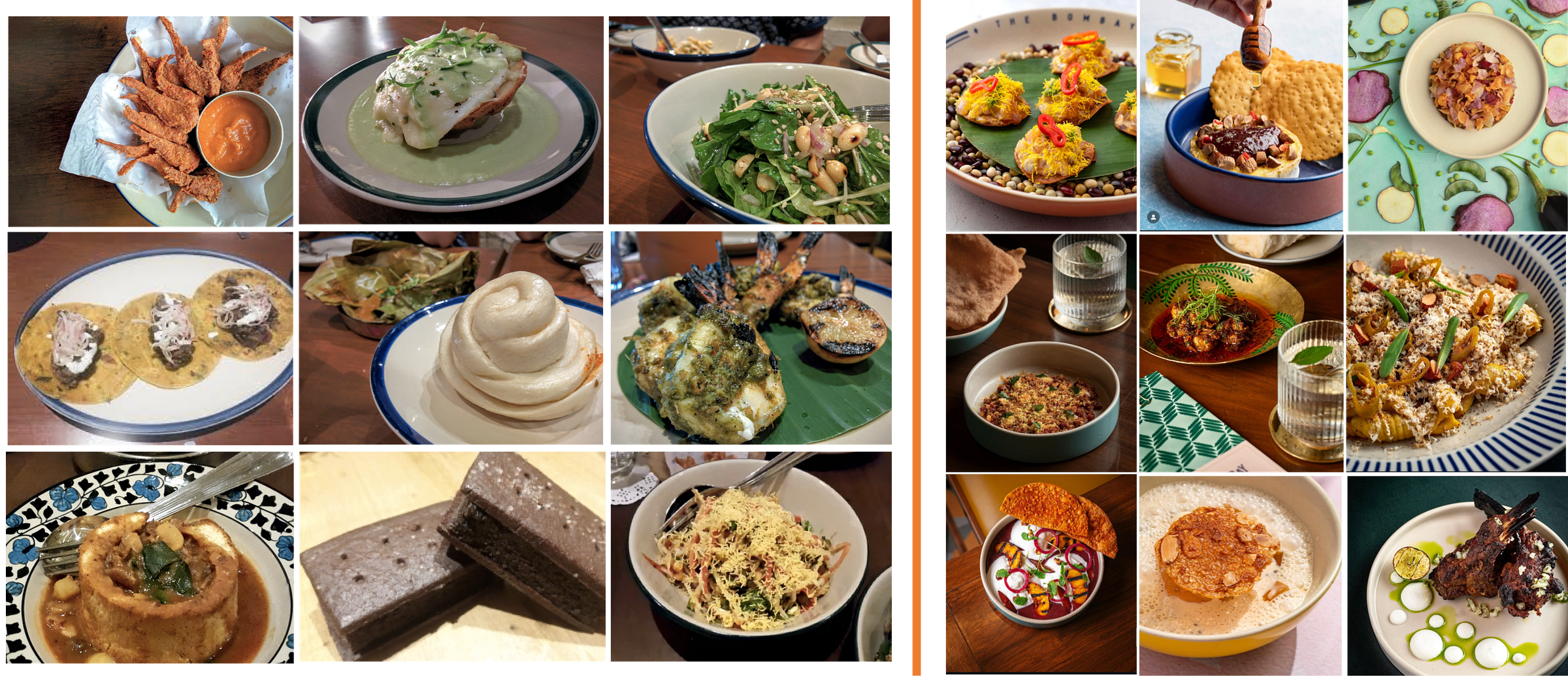
If you believe that the Indian restaurant scene is in a promising place today; and that urban India has cultivated a genuine food curiosity (for both Indian and foreign cuisines); and talented Indian chefs, restauranteurs, and entrepreneurs have a license to experiment with a wider culinary canvas than they’ve ever had; with Indian regional cuisines and Indian chefs finally getting their due on a global stage; it would be entirely reasonable to attribute this state of play in some small or large part to the success of The Bombay Canteen.
TBC was first named India's best restaurant by Condé Nast Traveller in 2018, and continues to feature prominently on lists of the best restaurants in Mumbai, India, and Asia even in its 10th year, including snagging top spot in the country again for 2024 by the World Culinary Awards. While restaurant awards can be a capricious, fickle measure of quality, that kind of sustained excellence reveals the potency of the Hunger Inc formula. Beyond the obvious ingredients of good food, great service, nice drinks, and good vibes, there are two unique chapters from their TBC playbook that deserve unspooling—not just for aspiring restaurateurs, but for anyone looking to build a product or experience that inspires a cult-like appreciation.
11. Form & Flavour
At the core of TBC’s food philosophy is an idea the team has since christened as ‘Form v/s Flavour’. It’s the not-so-secret secret ingredient sprinkled onto each dish that’s made their food so endearing to their patrons over the last ten years. Because they knew they were introducing restaurant-goers to dishes they’d likely never tried before, much less seen before on a restaurant menu, the culinary brains at Hunger Inc had to find a way to make their offerings still seem relatable to their customers.
“It’s about balancing surprise and comfort,” explains Sameer. “You can think of Form v/s Flavour almost like a quadrant. For any dish we either experiment with the form or the flavour, so there’s an element of surprise that makes things interesting, but it’s rooted in something familiar - a memory or an association that people can grab onto. If you stretch things too far on both form and flavour, you don’t give people anything to connect with. That’s when you start losing them.”
Take, for example, the conception of one of TBC’s iconic dishes that was on the original menu in 2015 - the Gulab Nut.
“The Gulab Nut is basically a gulab jamun shaped like a doughnut, dipped in Old Monk and served with fresh pistachio cream,” says Yash. “The dish was originally inspired by the Baba Au Rhum, a traditional French dessert where a brioche bun is soaked in rum. Now if you put a Baba Au Rhum on an Indian restaurant menu, no one will be able to even pronounce it, much less relate to it. But by calling it a ‘Gulab Nut’ you create that callback to a gulab jamun and a doughnut. When people bite into it, they get the same familiar texture and flavour of a gulab jamun, and then the nostalgic hit of Old Monk. The muscle memory kicks in and their brain says ‘oh it’s like this!’”
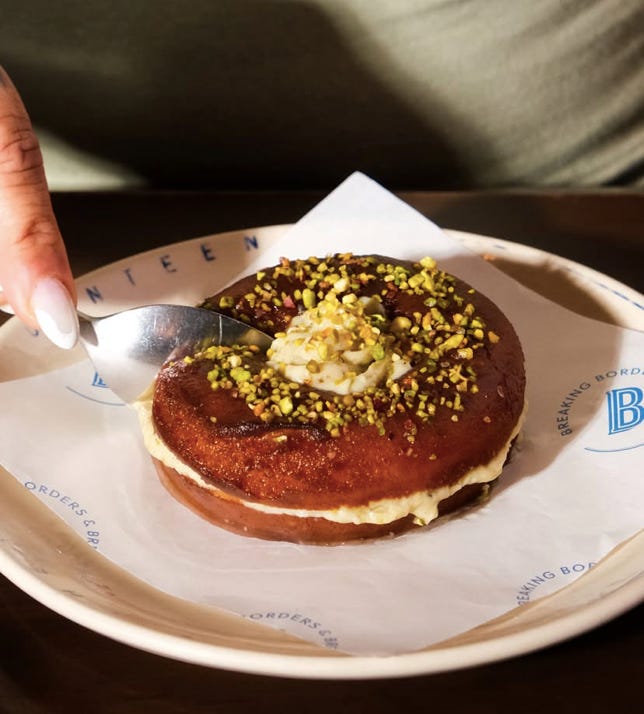
Or consider a dish that didn’t have the same kind of success. Sameer recounts the tale of the infamous Spaghetti Prawn Rasam.
“So we had this dish that we were confident would be a big hit, but it just didn't land with our guests. It was a prawn-head rasam with spaghetti. In our minds, it made perfect sense – the peppery, umami flavour of the rasam was similar to that nostalgic Maggi noodle masala, so pasta seemed like a logical accompaniment for the dish. But no one could make sense of it. Even though we loved it and the flavours were sound, customers couldn’t find that point of connection.”
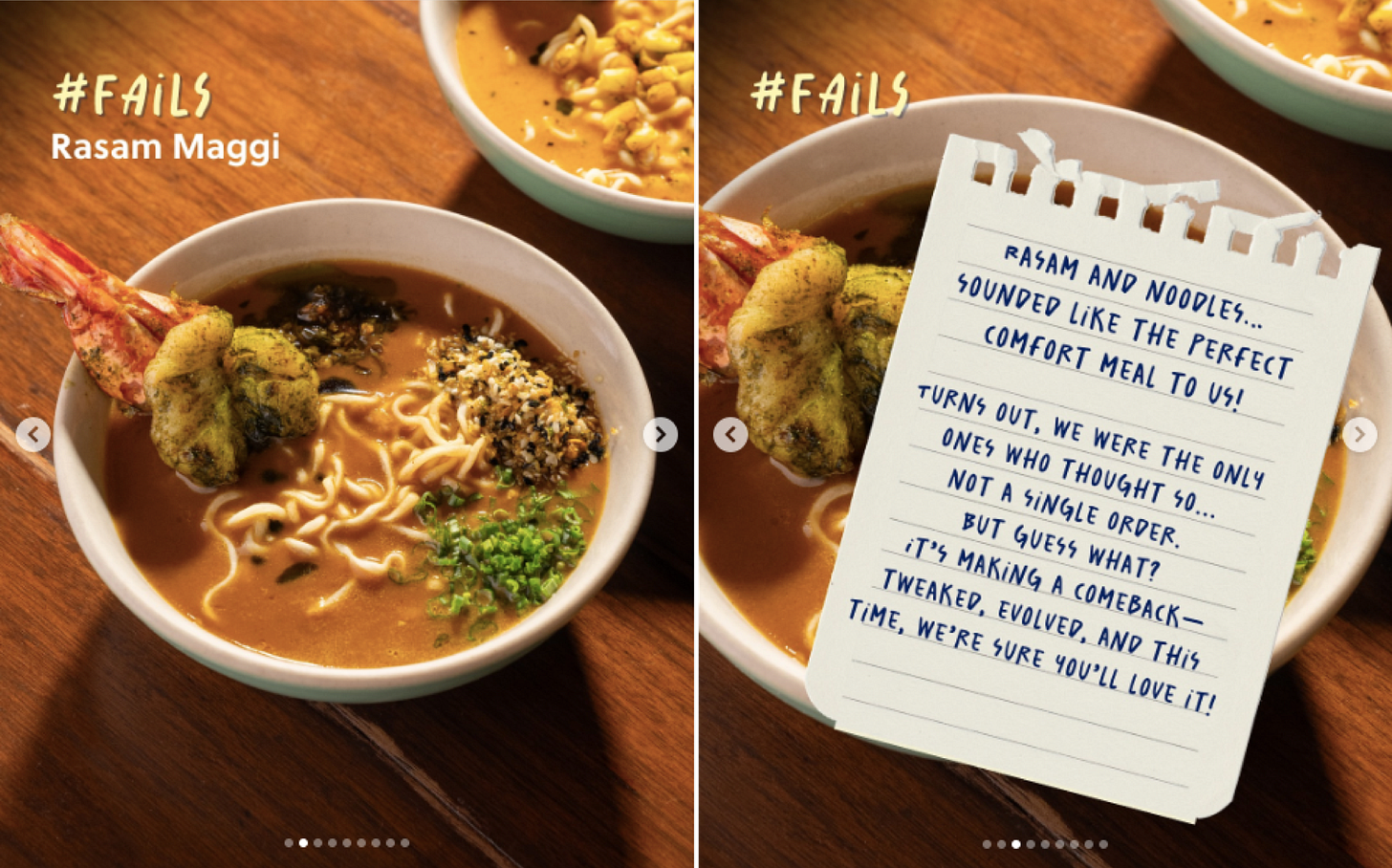
It’s taken a decade for the team to fine-tune that approach, and even to give proper coinage to something they were intuitively trying to get right in the early days. For every successful reincarnation there’s been accusations of defiling someone’s childhood favourite. That’s part of the gig. “To be creative is to take risks,” says Yash. “We’d much rather create things that people either love or hate than just play in the middle”
Form v/s Flavour. It’s about giving people an “it’s like” that they can grab onto, something they can compare a new experience to. “It makes it easier for our staff to explain a dish to a customer as well,” says Yash. Look up and down the Bombay Canteen menu and you’ll find that each of their inventive creations is saddled with either a name, a presentation, or a flavour designed to trigger a feeling or a memory from their customers.
Quick detour here. The first time I heard the team talk about Form v/s Flavour, a lot of the intangibles of The Bombay Canteen’s success became a little more concrete for me. Here’s why.
Last year I read Derek Thompson’s Hit Makers, an excellent book about the ‘science of popularity’, devoted to understanding what it is about certain things (songs, movies, products, names, fashion items, marketing strategies etc) that allowed them to become hits, and what is it about people that draws us to certain things.
One of the most pervasive theses of the book is that human beings are simultaneously neophilic (drawn to novelty) and neophobic (afraid of the unfamiliar). This tension has a remarkable track record of shaping our preferences across different domains. We crave stimulation and surprise, but only within the boundaries of what we can comfortably process. Thompson describes this as the "aesthetic aha" - that satisfying moment when something initially challenging suddenly clicks into understanding. He explains how the most compelling cultural products don't just give us what we already know; they create a dialogue between "I get it" and "I want to know more."
It explains why the biggest hits across different fields tend to balance innovation with recognition. They resolve anxiety with familiarity (i.e. “surprise me, but don’t scare me”). It’s why one of the most well-worn paths to making hits is by pairing curiosity with comfort, by smuggling the new in with something old, or dressing the old in something new.
It’s an idea so pervasive that your brain has probably started churning out examples of where you’ve seen this play out. It’s the reason why sequels are so popular. It’s why IPL teams retain a few marquee players when refreshing their squads during each auction. It’s the reason new companies use old celebrities as ambassadors of their products. It’s why Donald Trump repurposed Ronald Reagan’s iconic slogan to boost his campaign. It’s why pop songs have two similar verses and choruses, but a different bridge at the end. It’s why so many hit songs have been built around the same four chords. It’s why so many stories are structured around the archetype of The Hero’s Journey. It’s practically baked into the structure of every romcom ever. It’s literally the whole point of your Youtube algorithm, to give you something a little different based on the things you like.
Same, but different. New, in an old mask. Form v/s Flavour. In the case of The Bombay Canteen, it would be silly to reduce its decade long success to any simple formula (if it were that easy then every restaurant would be a hit). However, the intuitive way the team has harnessed that tension - between the familiar and unfamiliar - speaks to their savviness as creators and commercial operators.
Even outside of the fact that the very philosophy of the restaurant is about honouring Indian food traditions and reimagining them in a contemporary setting, you see the ripples of this approach even at a micro level.
It’s in the ethos of their seasonal offering - where most of the menu is made up of ever-present crowd favourites, but every few months the roster gets shaken up by seasonal additions. “People told us that a seasonal menu would never work in India,” says Yash. “We kept hearing that people like coming back for the same thing, so don’t change it. But in a way, the fact that there’s always something new gives people a reason to keep coming back to The Bombay Canteen. They can make a case for visiting regularly rather than occasionally, because the menu keeps changing.”

Or take the structure of the menu at TBC. In the current iteration there are Chhotas (small plates), Badas (big plates), and Sweet Dishes (desserts). The team leaves the flamboyance for the ends of the meal, but keeps a relatively straight bat for the middle overs — i.e. Novelty - Comfort - Surprise.
“We realised that people like experimenting with their appetisers, so that’s where we allow a longer leash on our creativity,” says Sameer. “For the middle of the menu, the big plates, we try not to get too crazy here, because people defer to what’s familiar for the main portion of their meal. If these dishes are too eclectic people tend to leave a restaurant unsatisfied. And then desserts again is where diners don’t mind taking a chance on something new, so we dial up the playfulness again.”

The identity of the restaurant was shaped by the same thesis too. Yash says “When we were about to open The Bombay Canteen, we sat for hours with our PR and marketing team debating this tagline that they had come up with. It said ‘Indian cafe and bar’, and we even had it on the signboard outside the restaurant in the early days (but nobody really noticed it). It went out with all our PR and comms to journalists, reporters, food writers etc. The reason for the tagline was that we needed to give people a way to understand what we were doing. We needed to find some real estate in their mental landscape. Because this was not an ‘Indian’ restaurant in the traditional sense, we needed to have that be a part of the messaging so people would know what to expect. Our logic was that the tagline would get them through the door, and once they were inside our walls, we could then sell them on who we really are.”
This need to find a place in people’s psyches was a big part of why so much of TBC’s identity in its first few years was shaped by nostalgia - in the food, the decor, the messaging, the design. But as the restaurant found its feet, it didn’t need to lean on gimmicks to make its point. Today’s iteration of TBC is much more confident in its own skin. The brand itself is the anchor. The team has earned the trust to experiment and innovate and play around. “When people come to Bombay Canteen now they expect creativity and surprise and the best of India’s food and flavours presented in a respectful, contemporary way,” says Yash.
It all started with finding a way to get through to people despite offering something they’d never seen before. Above all, this foray into form and flavour taught the team that if you want to bring people along for the ride, you need to give them something to connect with. You need to give them a story.
12. Storytelling
"Entrepreneur is a synonym for salesperson, and salesperson is the pedestrian term for storyteller"
- Scott Galloway
Outside the ordinary, perhaps what most distinguishes the Hunger Inc team as restauranteurs and founders is their penchant for storytelling.
‘Storytelling’ doesn’t mean someone from the team will come out and literally narrate the saga of each dish for their guests. No, in the context of their restaurants, TBC in particular, storytelling means having a coherent, consistent narrative that is reinforced in every touchpoint with their customers. “Storytelling is about how you set the context for someone,” says Yash. “It’s about having and expressing a point of view that people can relate to.”
Ronnie Fieg, the founder of American fashion and lifestyle brand KITH has a great way of distilling this idea. KITH has earned a cult-like audience around its exceptionally designed and creatively marketed products. He attributes 50% of the success of his brand to the quality of his products, and 50% to the storytelling that goes into each product. His explanation of storytelling is being able to convince your customers of ‘why’ you’re doing what you’re doing, and translate that at every level of your product - “The ‘why’ is so important, and we've become professionals at the ‘why’”.

With TBC, the story the team wanted to tell was about ‘celebrating the India of today’, in a way that faithfully honoured the past while staying true to the present time and place, while making sure that every individual passing through its doors felt at ease. When you think of the name of the restaurant, the location, the uniforms of the servers, the water jugs, the type of stone used in the walls, the names of the dishes, the prices on the menu, the different playlists that play at different times of the day - there’s a clear ‘why’ for every single choice, and it always goes back to the story. It’s a big reason why people connect with their restaurants, because we’re wired to gravitate towards well told stories. Like the founding myth of the Eggs Kejriwal, a good story means that people will ‘get’ what you’re trying to accomplish.
“We first realised the power of storytelling on The Bombay Canteen’s one year anniversary,” says Sameer. “We came up with this idea for a special collab (long before collabs were even a thing). Think about the best part of your birthday when you’re a kid. It’s that your mom would cook you your favourite meal, right? So, for The Bombay Canteen’s birthday we invited our moms to come into the restaurant and cook two signature dishes each. The five of us from the leadership group - each of us is from a different part of the country - so our five moms flew in and made food that was rooted in nostalgia, regionally diverse, and delicious. We called it ‘The Mother of All Menus’, and we designed it like a notepad and encouraged guests to write down their own mothers' favourite dishes. The response to that menu made us realise that how you tell the story of the food is as important as what’s on the plate”.
The same insight reared its head again when they were brainstorming TBC’s cocktail menus. The team noticed after the first year that people weren’t really ordering the signature cocktails on their menu. “We had come back from the US and Singapore obsessed with the negronis and Manhattans of the world - classic alcohol-forward cocktails,” says Sameer.
But the India of 2015 wasn’t ready for those drinks. People were looking for fruity mixes like mojitos and caprioskas, or I’m-trying-to-get-somewhere-quickly party-favourites like Long Island Ice Teas and simple hard-drink-soft-drink combos. But during Christmas at TBC in 2016 they noticed something interesting happening.
“We had made these fun pop-up menus for our Christmas specials (based on a similar idea from one of our favourite bars in San Francisco). People loved them, and they would flick through those menus while enjoying their meals. So we thought that maybe there was an idea there we could use for our cocktails too, to make the experience of ordering cocktails more fun and engaging.”
Rather than diluting their drinks program, they decided to enhance the storytelling around it. Working with their branding agency Please See, they developed their first cocktail book, transforming the menu into an experience in itself. The first edition told the story of Mumbai's most iconic Art Deco buildings that featured cocktails that matched each building in hue and spirit.
Each subsequent edition explored different facets of Bombay with cocktails that took inspiration from those vignettes—from the city's signature lingo, to the people that populate its Marine Drive promenade, to its iconic single-screen ‘talkies’, and finally this year’s version celebrating ‘10 years of fails and faves’. Their bartenders guide guests through the stories behind each drink, creating conversation pieces that encourage exploration (and ordering). "That's how the cocktail books came about,” says Sameer. "It allowed us to subtly make a sales pitch without customers realising it. That's the magic of storytelling."
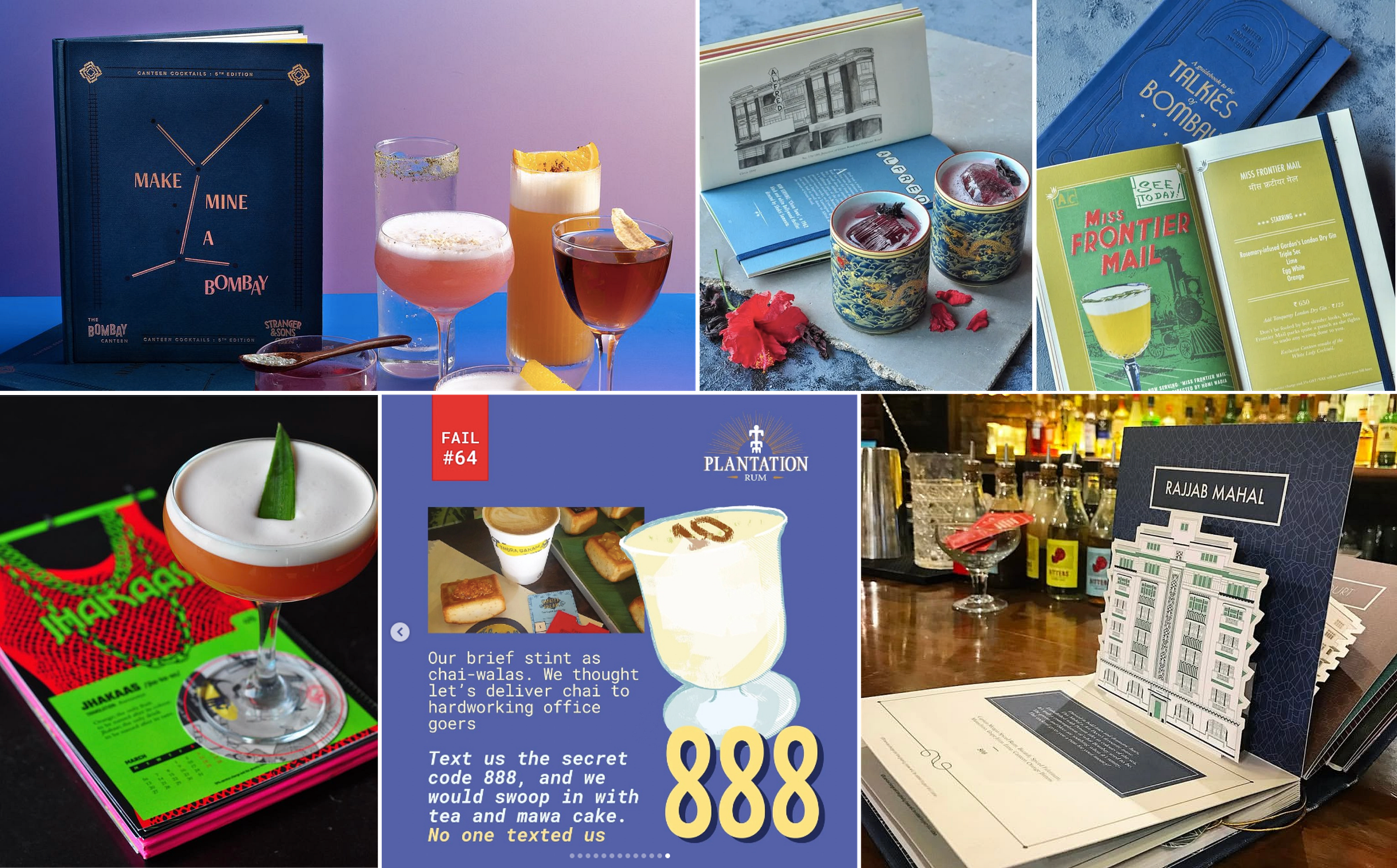
But they don’t just employ storytelling to increase their top line. In their quest to celebrate India and progress the conversation around Indian hospitality, their ‘point of view’ has inspired the kinds of rituals that endear people to their favourite brands, going beyond a simple commercial relationship.
One of the company’s most cherished traditions began as a question of how to back up their mission with action. "We were trying to think about what we could do for Independence Day in the first year of The Bombay Canteen,” says Sameer. “Independence Day always felt great growing up - going to school on August 15th had this special feeling. We wanted to recreate that feeling while also giving something back to our community."
The winning idea came from Avinash of Please See. Taking inspiration from the Sikh tradition of langar (community kitchen), they created the ‘Independence Day Daawat’. On the 15th of August, for one day only, TBC closes the restaurant for regular operations. They join the tables together and serve a special thali on a banana leaf featuring dishes from across India, where guests can pay whatever they want, with all proceeds going to charity. Each year the number of guests and volunteers goes up.
What started with 100 people served in the first year has grown to over 1,000 participants, with donations swelling from 1.5 lakhs to more than 20 lakhs annually. Over the years, they've supported causes ranging from education through Teach For India and the Miracle Foundation, to sustainable agriculture initiatives with Araku farmers, to this year’s ‘Make Bombay Green Again!’ initiative with the RPG Foundation. "It's about using our platform to give a loudspeaker to causes we believe in," says Yash. To date, they've raised over Rs. 1.5 crore through this single annual event, backing up their commitment to making hospitality a force for positive change.
They walk the talk on that mission on a monthly basis too. Yash and Sameer had always lamented the quality of education at hospitality colleges in India, the kind of education that bred graduates devoid of passion for the industry. On the back of a suggestion from Please See’s Pritha, they kicked off a programme in Year 1 called Canteen Classes. On one Saturday every month, they invite hospitality students from across Mumbai to attend free workshops at TBC, led by members of their team or by industry veterans at the top of their profession.
The sessions cover everything from knife skills to restaurant financing to mithai making, filling gaps left by theoretical curricula. What started as an intimate gathering grew substantially."We have 300 students who show up each time now," says Yash. The classes serve multiple purposes, like giving back to the community; elevating industry standards; allowing students on a budget to visit a premium restaurant they might not have otherwise frequented; and creating a pipeline of talent who understand their approach to food and hospitality. “It’s natural that people start to think of us as the right employer post graduation.”
In the context of any other restaurant, initiatives like the Daawat or the Canteen Class might seem like a distraction. But in the context of the story that Hunger Inc is trying to tell, these make perfect sense. Humans are programmed to respond to a well told story. The story of The Bombay Canteen has been critical to their staying power over the last decade. It’s helped by the fact that the company has continued to evolve this story with the times, in response to how the country, the city, the people, and the tastes around it have evolved.
“For one, we don’t lean as heavily on nostalgia now,” says Yash. “The first version of TBC look a lot of design inspiration from old magazines, recipe books, product packaging, posters - things like that. Today it has a much more contemporary outlook, reflected in everything from the crockery, the menu, the interiors etc. The food philosophy has evolved too. Hussain [the current Executive Chef] has no qualms about using non-traditional ingredients like avocado or burrata. In the early days we were wedded to the idea of only showcasing indigenous ingredients. But Hussain’s view is that if it grows in Indian soil, or it’s made by Indian hands in India, that’s fair game, even if it’s not considered ‘traditionally Indian’ - and that’s leaving aside the fact that most of what we consider ‘traditionally’ Indian ingredients only arrived in the Subcontinent in the last 200 years.”

As to why TBC is still packed during every service just like it was in 2015, I think it’s due to a very different kind of story. Riyaaz Amlani, the CEO of Impresario Entertainment & Hospitality, serial restauranteur and doyen of cafe culture in Mumbai, says that any good restauranteur hoping to set up an enduring establishment should ask themselves “…can you be a small part player in the epic movie that is the life of your customer. Can you be a little character in that saga?”
In filling in a niche for ‘premium casual dining’ in Mumbai, the Hunger Inc team allowed themselves to become a versatile character in a broad genre of customer productions. With TBC, they painted a shapeshifting canvas that could become the backdrop for basically any kind of story. A first date. A tenth date. A job interview. A quick lunch. A boozy dinner. An occasion. A walk in. Whatever.
As long as it continues to be a welcoming space for people’s stories, TBC will have a place in Mumbai’s dining landscape. The Hunger Inc story, of course, doesn’t end with TBC but starts with it. With a successful opening salvo in their back pocket, the team turned their attention outside of Mumbai (sort of) to write their next chapter.
13. A Happy Place
I had the chance to chat with Radhika Misra, an independent PR consultant who, like the founders of Please See, has been a core part of the extended team since well before Day 1. Affectionately referred to as “our Ari Gold”, she recalls how, even in the early days of TBC, the team had already set its sights on something loftier. “What we wanted to do was tell a much bigger story,” she says. “The discussions always centred on what we could build rather than what we could sell. The team didn’t want to just be known for one restaurant. The aspiration was a brand like the Tatas, where you had this umbrella on top - in our case the ‘Hunger Inc Hospitality’ umbrella. Under that we would have all these distinct brands with their own distinct identities, that would still make sense as a cohesive whole.”
After a charmed first few months at The Bombay Canteen, the team fielded plenty of offers to expand their empire. But they were certain they didn’t want to rush into their second effort. Their logic was coloured by Sameer’s earlier experience with the restaurant group in New Delhi. He’d been disillusioned by the revolving-door nature of the industry, where new concepts that were hurried in to launch had a tendency of being ushered out at the same unflattering speed.
A patient, methodical approach was necessary to avoid becoming another casualty of the brutal math of the restaurant game. It meant it would take another two years before they would expand the family. Like many of the pivotal chapters in their story, this came as a result of having an intuitive understanding of what thing should belong in a particular time in a particular place.
“Way before we actually opened our second restaurant, we had begun looking at potential spots all over the city,” remembers Yash. “Our broker had found us this space in BKC [the central business district and financial nerve centre of the city]. It was exactly the kind of place we liked - lots of natural light, a nice frontage, lots of ready customers in the area. There were some frangipani trees outside which added some greenery too, which is always a plus in Mumbai. And there were restaurants already in BKC so we knew the area had potential. We started thinking about what kind of place would work here.”
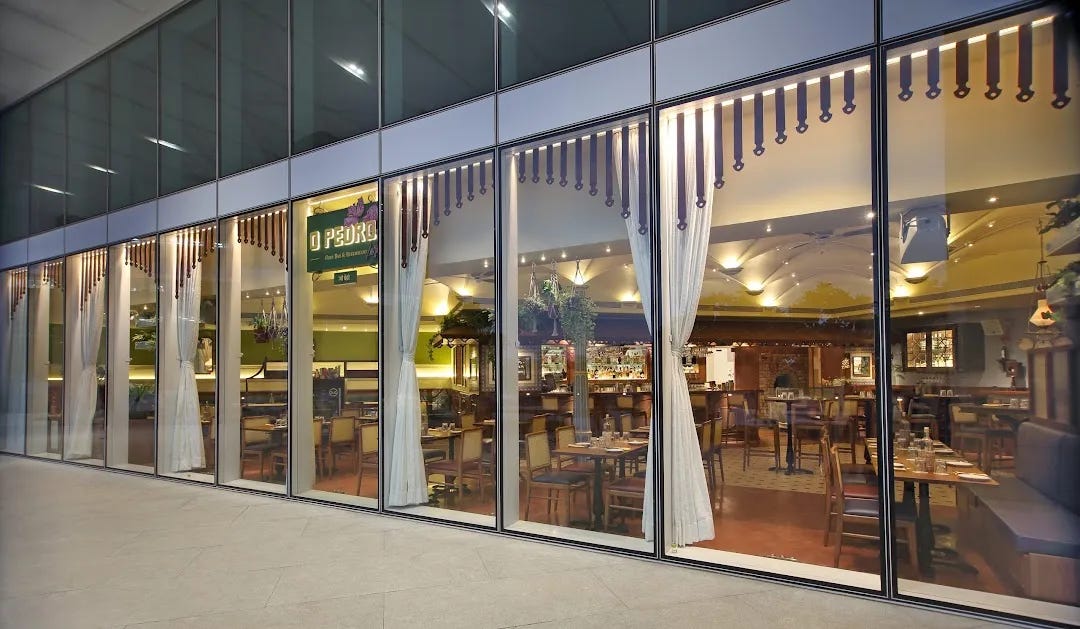
Flipping the script from The Bombay Canteen, where they already had a concept in mind but needed to find the right location, this time around they had found a location that ticked all their boxes, and now had to figure out what to do with it. The decision on how to animate that initial skeleton in BKC speaks to one of Hunger Inc’s soundest virtues on how to do business - “you have to think of the context.”
“Our original idea, as soon as we saw the space, was to do a Mexican restaurant,” says Sameer. “In any part of world the idea of ‘Mexico’ and ‘fun’ always go hand in hand. Tacos, nachos, margaritas - what’s not to like, right? A Mexican restaurant seemed like it would be a nice respite for the white-collar crowd in BKC. It was the fastest we had all agreed on anything before. But later on when we really started to think about it, we realised that the association that most people in India have with Mexican food is really Tex-Mex food - basically creamy corn and nachos with cheese sauce. We realised we would have to do a lot of legwork to educate people on the intricacies of ‘authentic’ Mexican cuisine. Plus, it turns out avocados are really expensive.”
Yash adds “So we tried to put ourselves in the shoes of someone working in one of those glitzy office buildings in BKC. We imagined that, for people commuting into this man-made island every morning, working in a corporate office, stuck inside, staring at a screen all day, eventually they would be desperate for an escape. And when they started daydreaming of that escape, what’s the place that was most likely to pop into their heads? For Americans, who might spend their holidays and spring breaks and honeymoons south of the border, Mexico would likely fill that image. But for most Indians, that place is probably Goa.”
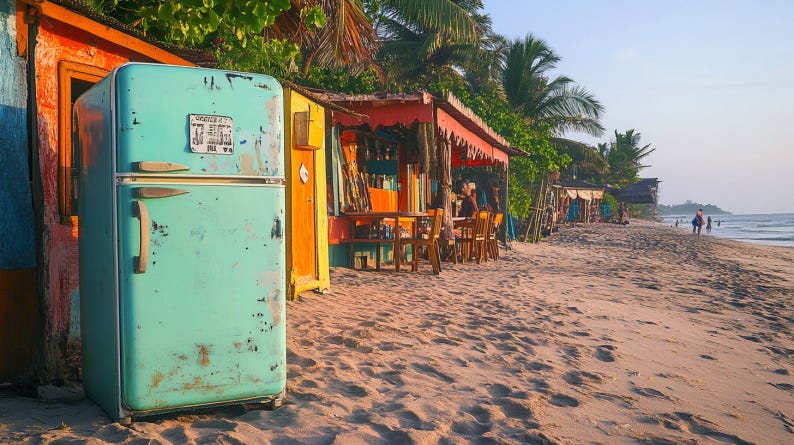
The team knew that one of the reasons The Bombay Canteen had worked was because it had been relatable to their guests. They reasoned that, while Mexico might represent a ‘happy place’ for someone living in the US - sun-drenched, vibrant, musical, packed with flavour, a parallel technicolour universe that was a direct flight or drive away - Indians didn’t really have the same contextual attachment with Mexico.
Goa, on the other hand, was designed in a lab to be India’s pressure-release valve. Indians are almost genetically pre-disposed to have a good time in Goa. Yash confirms “Regardless of what time in your life you visit Goa, it might represent different things at different times, but you always leave with a smile on your face.”
It helped that Mumbai, despite its proximity to Goa and its sizeable Goan Catholic community, didn't really have a definitive modern Goan restaurant at the time. It was a fact made doubly stark considering the rich source material that represents Goan culture and Goan food, both of which are entirely unique in the wider context of India given the collision of Portuguese colonial influence, Konkani coastal traditions, and Catholic culinary heritage that have marinated together for over 400 years.
It helped that each of the founders could call on strong memories of Goa. Yash had studied there. And Floyd, importantly, had spent much of his childhood there. Goa was his ancestral home, where his family had lived for generations before he was born in Mumbai. He'd spent countless vacations there as a child, absorbing its flavours and traditions. So when the idea of a Goan restaurant emerged, the team saw an opportunity to tell the story of Goa and Goan food beyond the stereotypical beach-shack specialities of prawn curry, Goan sausage, and beer.
That settled it. Their second restaurant would be inspired by Goa, not Mexico. The intent? To capture not just the food but the entire feeling of Goa—its languid pace, its colonial architecture, its multicultural inheritance, and most importantly, its ability to make anyone feel instantly at ease.
14. Knead To Know
Part of the reason why the team felt confident about expanding their portfolio was because the talent on their roster was ready to step up. Chef Hussain Shahzad, who had come on board as sous chef (second in command) to Thomas Zacharias at The Bombay Canteen, was now thrown the keys to the kitchen as the Executive Chef of their second restaurant.
“When they first told me they wanted to do a Goan restaurant I thought they were nuts,” recalls Hussain. “It’s like, you have this ocean of cuisines to play with at The Bombay Canteen, and now you want to dive into a bucket. My idea of Goa at the time was chicken cafreal, cheap beer, and brownies on Baga beach that didn’t let you sleep for 30 hours. I didn’t have a reference for Goan food besides the usual xacuti and vindaloo, and definitely no hands-on experience cooking it. But I was up for the challenge.”

As has become customary to their process, in order to earn the right to have an opinion on the cuisine they wanted to showcase, the team embarked on an intensive 8-month culinary expedition. “I used to think that to make a restaurant menu it meant you went to college and learnt something, then you flipped through a few cookbooks, and then you’d draw up a menu based on what you knew. I didn’t know food could be researched like this,” admitted Hussain.
The entire team, from the chefs to the bartenders to the architects to the designers, made multiple trips to Goa. They conducted themselves like anthropologists, eating 8-9 meals a day at establishments ranging from fine dining restaurants to people's homes to roadside vendors. They collected stories, recipes, and memories - documenting a culinary tradition that had been largely passed down orally rather than written in cookbooks. “I made friends with a million Goan aunties,” Hussain says. “Everywhere I went I begged them to share their recipes, to teach me how to cook. Now they’re all big supporters of ours.”
The team found that Portugal's legacy in Indian cuisine extends far beyond what most people realise. While vindaloo might be the poster child of this cross-pollination, the Portuguese influence runs through the very foundation of what we consider "Indian food." Tomatoes, potatoes, cashews, chillies, and pineapples - now fundamental to Indian cooking - all arrived with Portuguese ships. "Goa was the portal to the West," Hussain explains. “Practices like cooking with wine, salting, curing, cheesemaking, leavened bread-baking for pao and poee, all of that was unique to Goan cuisine courtesy of the Portuguese.”
The last of those traditions - the art of leavened bread-baking - took centre-stage during their research. It’s one that Floyd later said was their most important investment because of how important bread is to Goan culture. For the uninitiated, leavened breads are made with ingredients that cause the dough to rise by producing gas bubbles, creating a lighter, airy texture. In the context of Goan bread tradition, leavened breads like poee (a fluffy flatbread with a hollow centre) and pao (the OG Indian dinner-roll) represent a distinct culinary practice not commonly found in other parts of India, where unleavened flatbreads like roti and paratha predominate. Even in Goa, it’s tough to find present day practitioners of the art, unless you know what you’re looking for.
“I had heard about a man in Ribandar, near Panjim - a baker, who was still making poee everyday according to the traditional method,” Hussain recounted. “This guy had been taught by his dad who had run this bakery for many years. I was connected to him by a friend of a friend, who spoke to him in Konkani and told him I was coming by to learn the art of poee-making.”
“I was told to show up at 4 pm with a chiplet of butter (to lather on to the fresh poees to eat when they come out from the oven). I thought I would be the only idiot turning up outside this bakery with a stick of butter in my hand, but there were 25 people in the line already. After some conversation between us in broken English, he agreed to teach me. He had a classic laidback Goa attitude. He wouldn’t measure anything with an instrument - all intuitively, all by hand. He would place the dough in a large bathtub in his bakery and leave it to proof for 3 hours while he napped. By the time he woke up the dough would be ready to go in the oven, and customers and vendors would show up soon after.”
Hussain managed to pick up the broad strokes of poee-making from these laidback sessions, essentially monkey-see-monkey-doing the various steps of the process. “We got back to the Bombay Canteen kitchen and tried recreating it, even though I had no idea what the actual quantities of anything were. It took us 47 tries to get it right, tweaking this thing and that thing till we had the perfectly fluffy poee.”
This reverence for tradition is why, right from Day 1 at their future restaurant, they still take the pains of baking poee in a traditional wood oven. “It would obviously be easier to cook in a modern Rational oven, but if we don’t do it in the original way, this art is going to get lost. All of these indigenous techniques still exist in Goa today but people don’t pay attention. We need to understand that no one else is coming to preserve our traditions if we don’t. As Indians, it’s on us to take that responsibility.”
It was perhaps inevitable that this deep desire to unearth the culinary secrets of Goan colonisation would take them straight to the source. “I may or may not have scammed them into organising a trip to Portugal,” says Hussain.
Tapping into Floyd’s industry connections, the Hunger Inc team took their food safari to the cities of Porto and Lisbon in Portugal. Hussain stayed back after the rest of the team left to get a hands-on education on Portuguese cooking:
“I spent a few weeks working in a two-Michelin star restaurant called Belcanto in Lisbon, and then a few weeks working in some local taverns. So I got to see both sides of the spectrum - what modern, elevated Portuguese dishes looked like, as well as the kind of traditional food that people ate everyday. It was so important to draw those links to Goan cuisine, to see the difference between the Portuguese version of a dish and the Goan version. People tend not to think about dishes on a menu from the perspective of history and culture - to think about what was happening during that time, what ingredients or resources were available, or why a certain dish is the way it is - but that narrative adds weight to your cooking. It gives it character, when you have a coherent story that binds your food to its flavours and its surroundings.”
Armed with a deeper understanding of the source material, the team spent most of 2017 between Mumbai and Goa, fleshing out the diagram of their new restaurant. Later that year, Hunger Inc’s much-anticipated "oasis in the glass jungle" would finally open for business.
15. O Pedro
O Pedro opened its doors in October 2017.
The name came with a built-in wink. It’s a nod to Floyd’s father’s nickname, and also to the name of an old ‘Aunty Bar’ in Mumbai’s Byculla neighbourhood. Aunty Bars were the colloquial name for speakeasy-esque establishments that were discreetly run by Goan and East Indian women out of their homes. They were a reprieve for parched Mumbaikars in search of their tipple in the 1950s and 60s, during the heights of the city’s post-Independence Prohibition era.
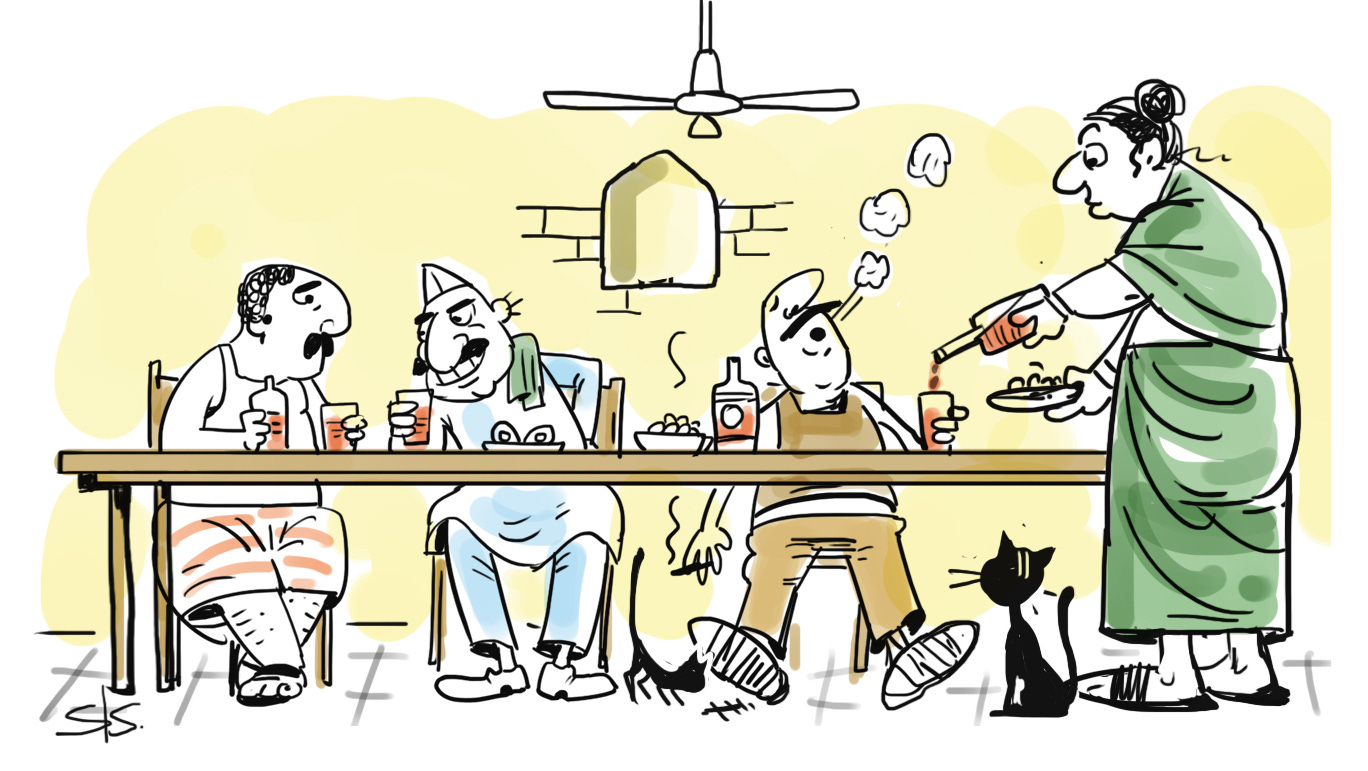
‘O Pedro’ - a little cheeky, a little personal, a little boozy - it nailed the brief.
Inside, the interiors eschewed the clichés of Goan beach shacks – no fishing nets hanging from the ceiling, no Mario Miranda cartoons, no tacky shells adorning the walls. Instead, Ayaz Basrai's designs transported diners to a sunlit Portuguese-Goan tavern. Vaulted ceilings reminiscent of old churches created airy height, while cane-backed chairs, wooden tables, and tiled floors added nostalgic warmth. Splashes of blue and white nodded to Panjim's Latin Quarter of Fontainhas, with potted bougainvillea adding pops of colour. The bar, built of cane, timber and glass, anchored the space with a distinctly laid-back colonial aesthetic.
Even after its renovation in August 2024, the space still retains its original charm, a design philosophy engineered to help corporate warriors escape the spreadsheet wilderness of BKC, reinforced by quirky signs and cheery servers that are integral to setting the mood.
The menu is what brings it all together. Chef Hussain, popping his cherry as head chef, felt the pressure to deliver on the expectations from diners following the success of The Bombay Canteen. Growing up in a Bohri household in Chennai, he felt an added responsibility to properly honour and showcase a cuisine to which he was an outsider. In this he had the luxury of being able to lean on the ultimate insider. "Having Floyd as my GPS on this journey was the best part. He said 'the destination is yours, I'm just here to guide you.'"
The result was a menu that was ‘inspired’ by Goan cuisine rather than ‘authentically’ Goan. “Authenticity is subjective,” says Hussain. “Those kinds of words - ‘authentic’, ‘traditional’, ‘fusion’, ‘modern’ - they mean different things to different people. We are not here to compete on whether our dishes are more authentic than anyone else’s. These are our versions of Goan and Portuguese dishes. They are guided more by flavour profiles, techniques, memories, and ingredients, rather than recipes. And where we do try and take on Goan classics, we don’t try to fix something that’s not broken. We’ll just try to make it the most delicious version of that dish according to us.”
That mandate allowed the team to pull from a much wider net of culinary influences. It meant that the inaugural O Pedro menu was a fresh take on Goan food, revealing many of the hidden corners of the state’s gastronomy.
There were familiar landmarks like sorpotel and vindaloo, and playful renditions of Goan favourites like xec xex, kismur, and balchao, but the menu ventured much further. It showcased the vegetarian bounty of Gaud Saraswat Brahmin kitchens – a local Hindu community whose meatless traditions are often overshadowed by Goa's seafood reputation. It explored traditionally Portuguese fare, along with Goan Catholic family recipes passed down through generations, and even ventured into flavours commonly found in places like Macau and Brazil, which share the same Portuguese colonial footprint as Goa.
Even today the menu reveals itself partly as a family album, full of personal tributes to those who were kind enough to share their treasured heirloom recipes. Beryl's Fish Curry is Floyd's mother's recipe, a coconut-based curry with hints of raw mango that tastes of Sunday dinners at the Cardoz home. The Margao Choriz and Bacon Pulao was the last meal that Floyd remembered his grandmother making. Maria’s Tuna Toast, Cardoz’ Chilli Chicken Fry, Aunty Li’s Serradura, Aunty Braganza's Rissois and several other standouts - new and old - turn the O Pedro experience into something more intimate, letting guests participate in a web of memories and relationships that spans generations. It's a heartfelt acknowledgment that behind every great restaurant dish stands someone's grandmother, mother, or aunt who perfected it first in a home kitchen.
And, not to be forgotten, courtesy of a custom built wood-fire oven, there is always plenty of freshly baked poee.
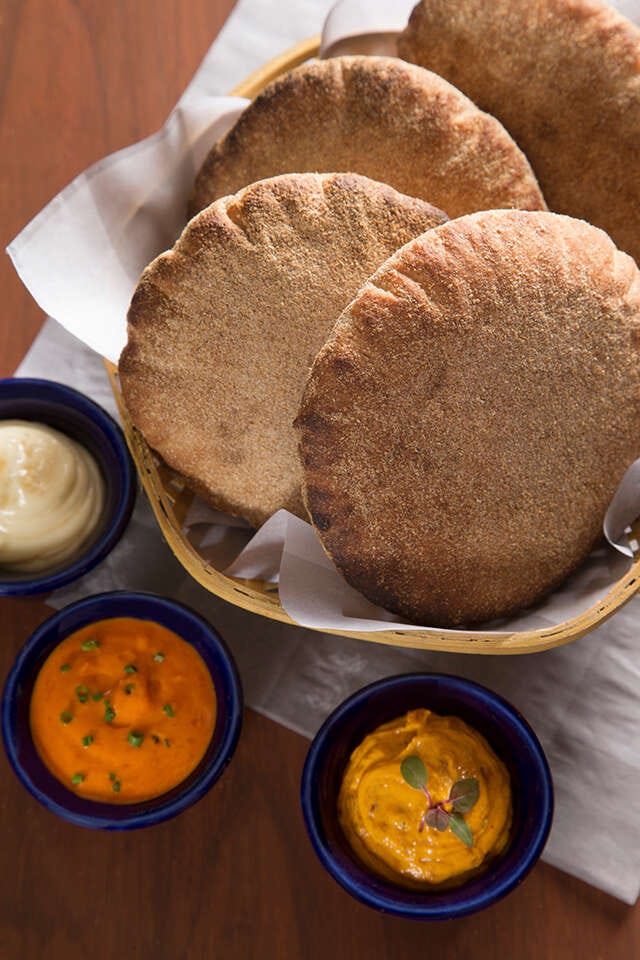
No Goan-inspired place would be complete without some attention to revelry. For the drinks programme, Sameer explained how the team studied Goa's liquid culture: “Rahul, our manager, spent time going to people’s homes to understand the culture around alcohol in Goa. We learned about everything from the traditions of drinking feni and urak, to how fruit macerations were carried out to take away the harshness of the local liquor,” This research yielded a cocktail menu that captured Goa's tropical spirit without falling into tiki-bar clichés.
The now-signature Pedro's G&T changes colour from blue to purple when mixed, for a bit of liquid theatre. Other creations like Kokum Stings (kokum-infused rum, ginger, curry leaves, lime) and Vasco Sour (featuring Goan toddy vinegar shrub) round out the offerings. Over the years, the team has taken liberty to experiment with their beverage offerings. For instance, since Goa's famed Kings Beer couldn't legally cross state lines, they collaborated with Great State Ale Works to create local alternatives – a coconut pale ale called "Pedro's Nariyal Paani" and a tamarind-infused beer called "Nak Nok," reinforcing their commitment to bringing Goa's spirit, not just its letter, to Mumbai.

The outcome of a project that began by thinking ‘context-first’, then followed up with meticulous no-stone-left-unturned research, and infused throughout with heart and flavour is a restaurant that has become a mainstay in Mumbai’s premium dining scene. Accolades - like routinely being featured on the lists of best restaurants and bars in India and Asia have followed.
O Pedro ultimately turned out to be a satisfying second chapter for Hunger Inc. The next one would be even sweeter.
16. A Product of India
“In order to succeed, you need to apply—simultaneously—exceptional skills in selecting real estate, negotiating, hiring, training, motivating, purchasing, budgeting, designing, manufacturing, cooking, tasting, pricing, selling, servicing, marketing, and hosting. And the purpose of all this is a product that provides pleasure and that people trust is safe to ingest into their bodies. ”
- Danny Meyer (Setting The Table)
After going a perfect two for two with The Bombay Canteen and O Pedro, the Hunger Inc team would have been forgiven for thinking that they had solved the restaurant puzzle, that they could just show up to any new location with a divine right to success. But in late 2017, they found themselves confronted with the worst kept secret in the Mumbai food services industry.

Sameer explained that “When you actually take inventory of the real estate in Mumbai, you realise that there are really only a literal handful of areas that are conducive to running a successful restaurant.” Fundamentally, a restaurant is a business of selling tables, i.e. of selling real estate, and maximising the revenue per square foot of your space so you can cover your cost of rent. “But when you think of the kind of restaurants we want to run - finding a spot that’s in the right location at the right size with the right rental cost in Mumbai is close to impossible,” says Yash.
In India’s largest metro cities, the cost per square foot of commercial real estate can rival those of the glitziest cities on the planet. But unlike New York, London or Paris, a city like Mumbai or Delhi cannot count on a consistent year-round inflow of tourists to spruce up the demand for seats at its restaurants. (And unlike in those other places, our restauranteurs have to deal with all the nonsense that comes with doing business in India - nosy inspectors, an irrational GST regime, and a pernicious, extractive, absurd system of permissions that mean it is easier to obtain a gun than open a restaurant in India).
With the culture of eating out still in its nascent stages here, higher-end restaurants are scrapping for the attention of a relatively tiny pool of frequent diners (that typically chase novelty rather than loyalty), all while feeling the heat from aggressive rental costs that leave them with only scraps of margin to play with. It’s no surprise that 60% of restaurants go out of business in the first year, and 80% in the first five. You can get everything right with your food, your ambience and your service, but if your rent is unsustainable (generally meaning >15% of your costs), you will be perpetually swimming against the tide. When it comes to restaurants, the old adage of ‘location, location, location’ probably still underplays this importance by at least a couple of ‘locations’.
For Hunger Inc, in 2017 the ballooning cost of commercial real estate in Mumbai had tempered their enthusiasm to scale rapidly. There just weren’t that many places that came with a large enough catchment area for consistent foot traffic that could justify the exorbitant cost of rent without compromising their ability to run a sustainable enterprise.
The team was also honest about the fact that they had so far embarked on a path of inherent unscalability. The Bombay Canteen and O Pedro were both in-situ establishments - both products of and for their communities. They couldn’t just be copied and pasted in other neighbourhoods, much less other cities (despite the fact that the team had fielded plenty of offers to open a Delhi Canteen, a Bangalore Canteen, a Dubai Canteen and so on). The context would have been lost in any copy-paste style expansion, typified by the old adage that “cuisines and tastebuds in India change every 100 km”.
So they began thinking of alternate ways to scale the company while simultaneously future-proofing it against the caprice of Mumbai’s real estate market. “We wanted to find a different route into our customers’ homes, outside of just doing food deliveries from our restaurants,” says Sameer. “So we started thinking about products.”
At the time, restaurants that expanded into food products typically went the route of selling a packaged version of a sauce or condiment used as part of a dish on their menu - chilli oil, tikka masala, marinara sauce - that type of thing. But that route didn’t excite the Hunger Inc braintrust. “We wanted something that would be truer to our mission,” said Yash, “to celebrate India through its food traditions.” Oddly, the inspiration for the winning idea would come from a baklava vendor in Istanbul, and Maria Sharapova.

Yash recounted three incidents that have now become entrenched in Hunger Inc lore. “In 2016, I was flying back and forth from New York to help Floyd with the launch of Paowalla [his new restaurant]. For the first trip I flew through Paris, and I picked up this jar of Dijon mustard from the airport Duty Free for my girlfriend. I remember thinking how nice it was that you could pick up a high quality product like this which was like picking up a piece of that country to take home with you. I thought it was a shame that we didn’t have anything like that in India. We tend to give our visitors a bottle of Old Monk or tea to take home, or some packets of spices that they’ll never know how to use properly.”
“Then on the next trip, I flew through Istanbul airport. I remember there was this guy selling baklava and Turkish delights, fully dressed up in traditional wear. There was a big crowd of people lining up at his stall, listening to him speak so passionately about these traditional Turkish sweets, almost like his life depended on it. He was trying to get me to try it, and you could tell that his heart was fully invested in it. You could see the pride on his face when he was talking about this thing that represented his homeland. It triggered my reflections on why we don’t take the same pride in our own sweets, why we we don’t talk about mithai with that same enthusiasm.”
“Around the same time I went to this Forbes conference in New York. Maria Sharapova was talking about her candy brand Sugarpova. She told this story about how she grew up in Chernobyl, and as a young girl playing tennis she would get a piece of candy as a reward for doing well in practice. She talked about how, as a child growing up in poverty, a Snickers bar would give her so much joy, so she wanted to give people the same happiness with her own chocolate brand.”
On the journey back home from that trip, Yash typed up a note to Sameer summing up where his head was at. He reasoned that if their goal was to really celebrate India through its food traditions, it was time to start thinking about sweets.
17. Project 50
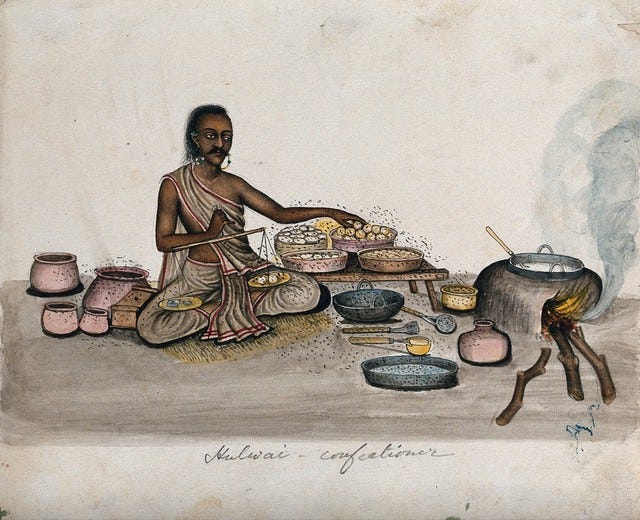
Centuries before French patisserie or Swiss chocolate emerged on any kind of global food map, Indian sweet-makers had long mastered the physics of sugar. While Europe was still limited to drizzling honey over its food, India had developed an entire taxonomy of sugar avatars, from gossamer-thin threads to taffy-thick ribbons to crystal blocks that could survive long trips along the Silk Road. Indian mithai-making was really Indian engineering disguised as culinary craft.
This mastery over sugar-manipulation birthed distinct schools of confectionery across the country: Bengal's obsession with chhena (cheese) birthed the sandesh; Gujarat's dairy abundance gave us barfi; and Rajasthan's desert climate inspired preservation-friendly treats like ghevar.
Today these are more than just festive treats. They’re archives of local ingenuity, cultural exchange, and centuries of refinement that merit proper chronicling - and especially more reverence than they’re given in this chart from Buzzfeed India below.
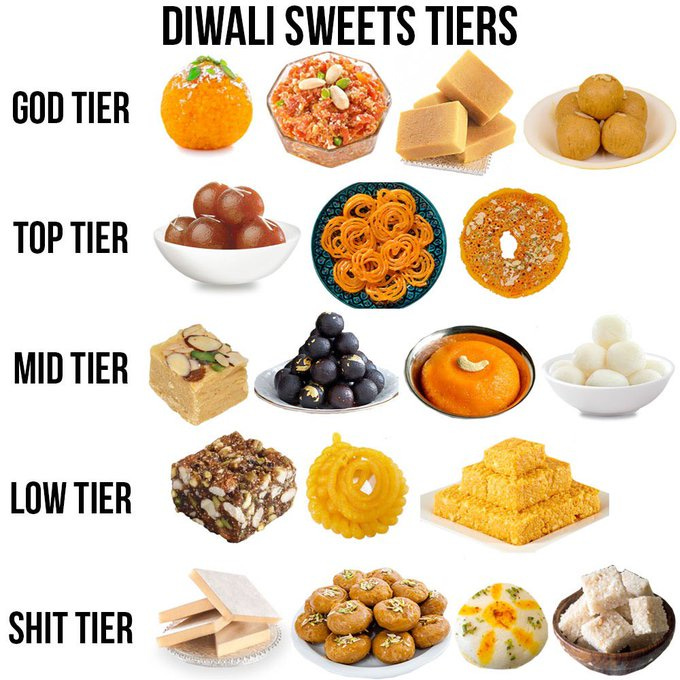
Although it took a chance layover in a Turkish airport to spark the idea, Indian sweets were an obvious candidate to be recruited to the Hunger Inc cause. Here you had this vast repository of culinary craftsmanship, defined by intricate techniques perfected over centuries in different corners of India, that was losing a battle for relevance in the hearts and minds of younger generations. “No one had applied a contemporary lens to Indian sweets,” says Sameer. “In a sense, mithai represented the same ‘white space’ that we had found with Indian regional cuisine in 2015.”
The team approached this conundrum in the same way they typically did, with a visceral irritation of accepted convention, interrogating the status quo to weed out all the incongruities that didn’t fit in with their desired version of reality. They wondered:
Why was it that, on special occasions like Diwali or Rakhi, premium foreign chocolate boxes had replaced traditional Indian sweets as status symbols?
Why were Indian sweets not talked about, thought about, or seen as aspirational in the same way as Western desserts?
Why did we sell KitKats and Toblerone and Milka chocolates in our airport Duty Free stores, and not Indian mithai (“We’re not Swiss!!!”)?
Why didn’t we celebrate our tradition of sweet-making like other countries did?
“When I came back to Mumbai and discussed the idea with the team, everyone was on board,” recalls Yash. “I remember in my first presentation I had a slide with a piece of chikki dressed like a candy bar. That was the aim - to figure out how to modernise Indian sweets, how to make them fun and relatable for the present day.”

That thesis marked the start of ‘Project 50’ (appropriately named after 50 Cent’s Candy Shop), to craft a mithai experience that was relevant to the India of today. However, it would take another four years for it to come to life. Even though it was apparent that the idea had legs, the team had to park the project for the time being. This was partly because O Pedro was next up on the agenda, but primarily because nobody in the company had any specialised experience or knowledge of Indian mithai.
Enter Chef Girish.
18. Chief Mithaiwala
To borrow a phrase I love from Patrick O’Shaughnessy, in Girish Nayak the Hunger Inc team found another “maniac on a mission”.
A Manipal native who graduated from the Welcomgroup Graduate School of Hotel Administration (WGSHA), Girish had the luxury of knowing early on that pastry and baking was his calling. For the unacquainted, pastry is a branch of culinary arts that blends cooking, chemistry, and craftsmanship - where success hinges on precision, patience, and an almost architectural understanding of how ingredients transform through heat and time. It’s how cakes, cookies, custards, croissants, candies and chocolates get born.
Girish’s first brush with traditional sweetmaking came after graduating from WGSHA, when, at his mother's suggestion (mostly to get him out of the house), he spent six months working at a local mithai shop called Kamath Sweets in Udupi, learning the basics of jackfruit halwa and Mysore Pak.
He then spent two years training at the Culinary Institute of America and honed his skills at upscale kitchens in New York, learning “the restaurant side of pastry making”. He returned to India in 2012 to join the Olive Group in Bangalore, and later worked with Olive’s Chef Manu Chandra on his new venture Toast & Tonic.
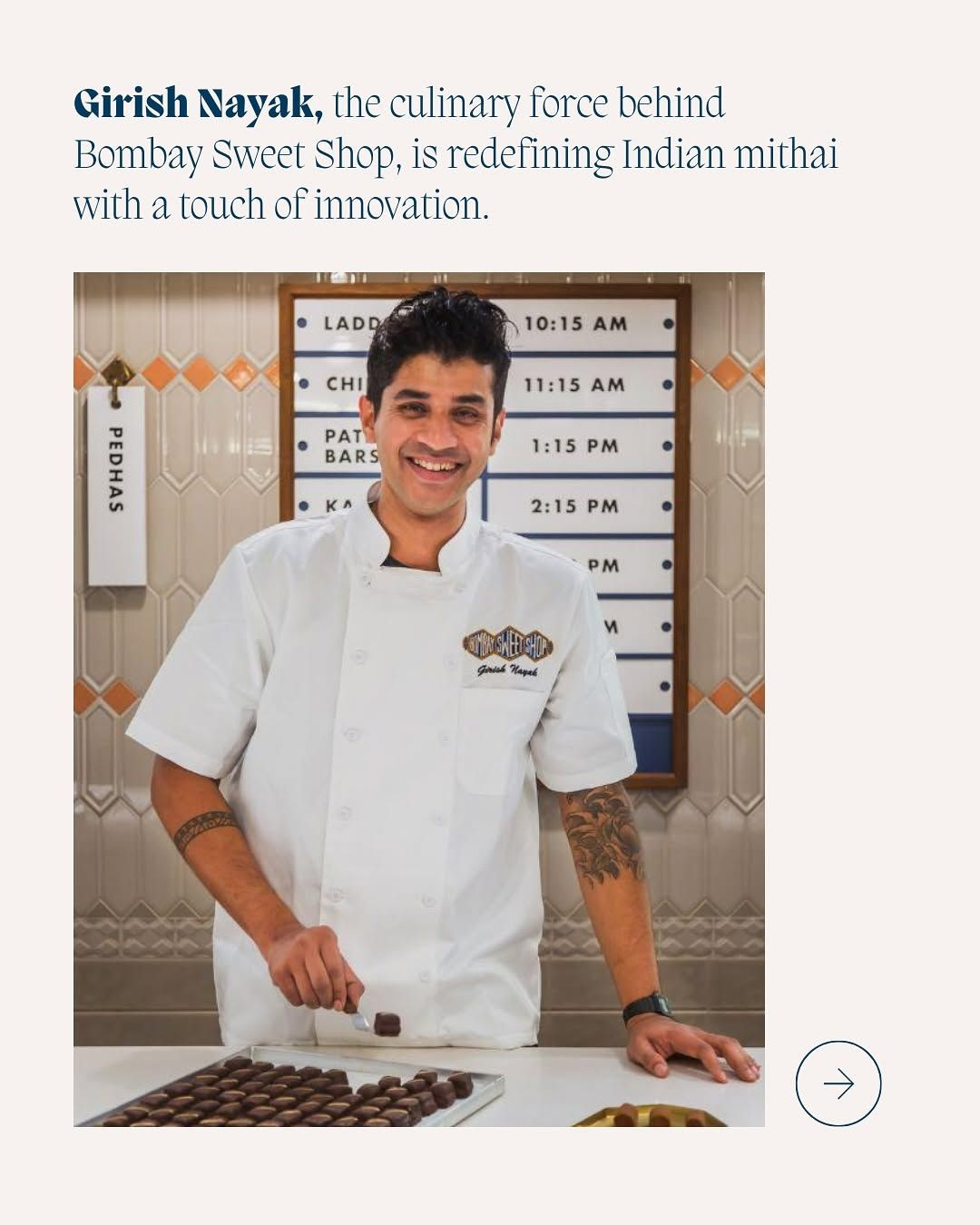
By 2015, still in his 20s, Girish was already regarded as one of the finest pastry chefs in the country. But as he carved his path in the kinds of restaurants that were bringing European dining sensibilities to India, he went through a familiar reckoning of his own culinary identity. Like many Indian chefs trained in Western techniques, he realised he had a giant blind spot with regards to the practices of his own homeland.
“There are a few incidents that stand out,” he recalls. “The first was when I was at Olive and a chef friend asked me for a recipe for kaju katli. When I said I didn’t have one he said ‘how can you not know your own sweets?’. The second was at Toast & Tonic, when I was trying to make ghevar [a traditional, disc-shaped Rajasthani sweet made with ghee, flour, and sugar syrup] for one of our plated desserts. I had tried looking for recipes online and videos on Youtube but there was really nothing there and so it didn’t turn out great.”
“Finally in 2016, I had gotten this consulting job as a pastry chef in San Francisco. One of the chefs there asked me to make moong dal halwa, and I told him I didn’t know how. On the flight back to India, I remember thinking how embarrassing that was, that I didn't know my own sweets. I could make canelés, croissants, macarons, and sourdough bread, all these fancy things, but they weren’t mine."
Girish lamented how Indian hospitality schools, particularly in the 2000s, never taught their students about Indian food traditions, much less Indian sweets. It was the norm for the stature of an Indian chef to be measured against his or her mastery over foreign cuisine. The consequence was a generation of Indian culinary graduates who were trained to ignore the bounties of their own surroundings.
Returning to India in the midst of his own culinary crisis, Girish quit his job in 2017, with a plan to track down and apprentice with mithai artisans across India. Serendipitously, Sameer and Yash met with him in mid-2017 for a casual lunch. Yash recalls that “He told us he was interested in seeing if you could apply French pastry technique to Indian mithai. We asked him what his dream was and he said he wanted to create the modern Iyengar bakery.”
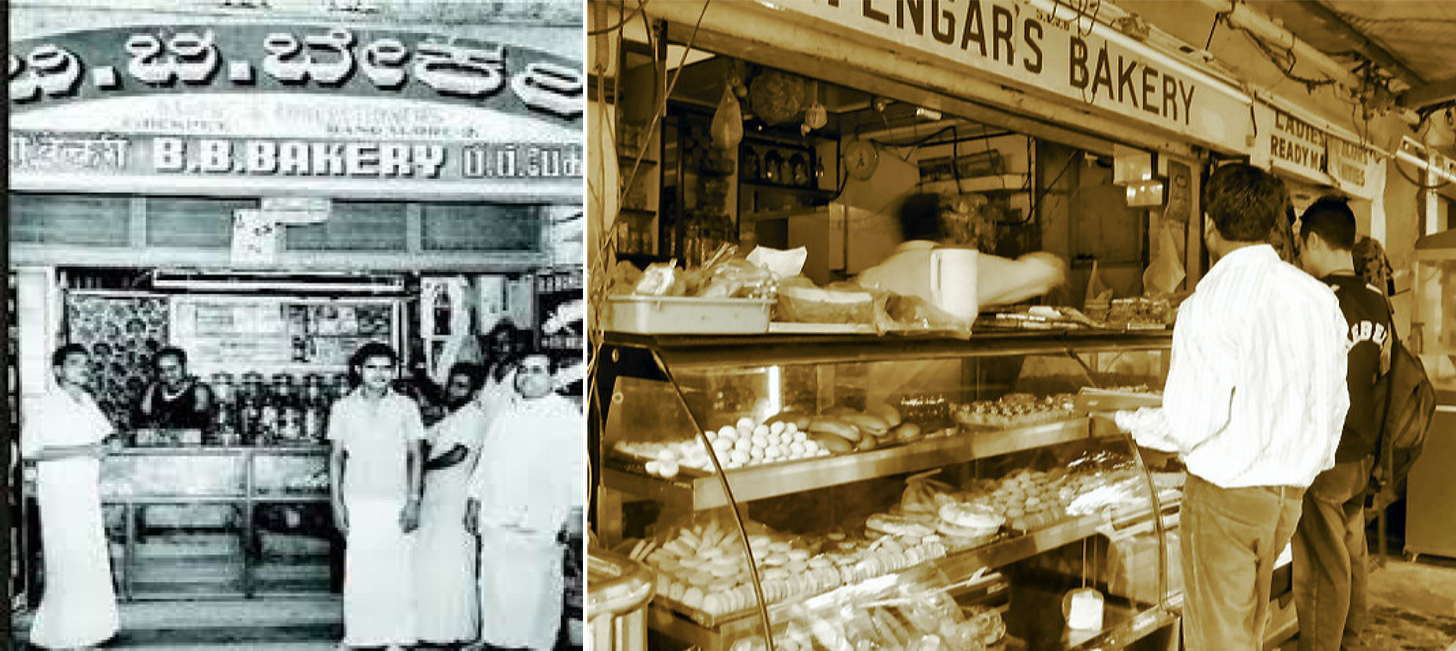
The team had found their Chief Mithaiwala.
Girish came on board in 2018 to lead their foray into the world of Indian sweets. In classic Hunger Inc style, he would start with a two-year odyssey across the country to understand the secrets of India’s halwais and mithaiwalas. From standing outside a soan papdi workshop in Kolkata for hours before being allowed in, to mastering the art of pheni with Ram Lal Ji in Jodhpur, to perfecting the pearls of a motichoor ladoo in Lucknow, he absorbed techniques that had been passed down often over three, four, five generations of sweet-makers.
“It wasn’t just the mithais themselves, I learnt how to use a kadhai, how to deep clean your equipment, how to sit on the floor when making ladoos by hand, why cow manure is better fuel for making malpua than buffalo manure, why a specific tray is better to make mysore pak than one used to make kaju katli,” he says. At the end of each trip he would go back to The Bombay Canteen and try to replicate the processes, most of which were based on “andaaz” (intuition) rather than any precise formula.

“Indian mithais might look simple but the processes are deceptively arduous and time consuming, and there’s lots of feel and heart involved. You start with simple ingredients but it takes a lot of technique to get the perfect finished product. In so many cases you’re only using a combination of milk and sugar and ghee - with such few ingredients there’s really nowhere to hide. You have to get it exactly right. You can’t rush it. You have to have patience. If the process involves waiting and watching milk gently boiling for five hours, then that’s what it takes.”
Without any guidelines to follow or benchmarks to chase, it would sometimes take upto two to three months for him to get a recipe right. After weeks of repeated failures he told me he would even get superstitious (“I would take different roads home just to change my luck!). But that kind of investment was essential. The guiding principle of the company, one repeatedly hammered home for the team by Floyd, is that ‘unless you take the time you understand tradition, you’ll never be able to evolve it’. Girish had to first get the basics right before attempting to modernise mithai, which meant discarding his fancy thermometers and resetting his European pastry instincts.
“The approach I initially took when developing recipes was to try to create the textures of Western sweets with Indian ingredients. But that didn’t work. So then I tried the opposite way, but that didn’t work either. So I realised the first thing to do was to learn how to properly make the base of everything. How to make the perfect peda, the perfect milk cake, motichoor, patisa etc. Then you can figure out what Western flavours and ingredients pair well with it. Once we figured that out then we flipped the process. We started with a Western base and played around with Indian flavours and ingredients. This was the philosophy we used to create our products.”
Having slowly figured out ‘what’ they were going to serve, the other piece of the puzzle was to figure out where to serve it.
19. Bombay Sweet Shop
While Girish was gathering intel on his mithai quest, the team began coloring in the outlines of their sweet shop concept, wrestling with questions about what a modern Indian mithai experience should look like. They tried to understand why Indian sweets had been relegated to token offerings during pujas and festivals, rather than an aspirational commodity, or even a daily indulgence.
Yash recalled that “When we started telling people what we were working on, there were three main pieces of feedback we received. People said that:
1. Indian sweets were boring
2. Indian sweets were too sweet
3. Indian sweet shops were unhygienic”
The first two were relatively easy to tackle. The team were confident in their research and development chops, and could bank on the calculus of form-vs-flavour to create distinctive products that people would connect with.

“The ‘too sweet’ problem is because sugar is used as a natural preservative. Traditional mithai stores use excess sugar because it increases the shelf life of their products,” explains Yash. In theory, mithai didn’t have to be as sweet if it was being made for short-term consumption.
The third bit of feedback presented a more exciting challenge. The team saw an opportunity to tackle both the ‘unhygienic’ and the ‘boring’ conundrums in one go. They realised that a big reason why Indian sweets failed to commandeer the same adulation as cupcakes or cheesecakes or macarons in modern times was because the process was shrouded in secrecy. “If you go to Paris you’ll walk by hundreds of bakeries where you can watch a croissant or a chocolate bar being made. That experience actually counts for a lot when it comes to appreciating what’s being sold inside,” says Sameer. “But when’s the last time you saw a motichoor ladoo being made? That process is also a form of art. It’s equally beautiful and technical, but it’s not as cool or sexy to talk about.”
“The reason Western desserts are recognised and appreciated the world over is because the West is so much better at showcasing its products,” says Girish. “And growing up influenced by Western media we’re never taught to be curious about our own mithais.” This is exacerbated by the fact that our finest practitioners tend to be closely guarded about processes and ingredients, and that traditional sweet shops have done little to elevate the experience beyond the functional - with open displays that gather dust and flies, products that have been sitting on the shelves for too long, and no window into the actual craft that produces these treats.
For Hunger Inc, the solution to this became apparent. Aside from applying a touch of innovation to mithai itself, the experience needed to be repackaged in a way that changed people’s perceptions. “We asked ourselves,” says Sameer, “what would it look like if Willy Wonka owned a mithai factory?”
The team found the former site of an old factory in the neighbourhood of Byculla, slightly off the beaten path. “We knew we needed a big space that doubled as a production facility and an experience centre,” recalled Yash. “Nothing like that existed in Mumbai as yet. We didn’t want to fall into the trap of thinking that just because our first two places had been successful that this one would be also. So our way of mitigating that risk was to choose a location outside of a prime neighbourhood with a lower rental cost. We were confident that the space itself would be enough of a draw.”
That site became ground zero for the group’s third venture.
20. Grand Opening
Piece by piece, they willed their dream sweet shop into existence. Partnering with L.A.B. (Language Architecture Body), led by founder and architect Shonan Purie Trehan, they envisioned a space that would hit visitors with the same sense of awe and childlike joy they might have if they were walking into Willy Wonka’s chocolate factory.
“What we typically do with any new concept is make a list of all the potential facets of that thing - it can be a list of a hundred different features, in this case, of a mithai store,” says Sameer, “and then we cross out all the things we don’t like, to get to our desired end state.”
In the case of Bombay Sweet Shop, for instance, they wanted to close the distance between their artisans and their customers. No more peering at sweets through greasy glass counters or pointing at anonymous trays. They envisioned a theatrical experience where customers could witness the entire process from cooking to presentation to packaging.
The rose-hued, art deco-inspired space that emerged in Byculla took inspiration from the concession stalls of Mumbai’s old-school single-screen cinema halls. At its heart stood a grand 20-foot "Mithai Bar" framed by cast iron columns and curved glass encasements (and right next to it a DIY Chikki Bar). Behind a glass-walled kitchen emblazoned with a welcoming ‘Hello from the Halwai Side!’ staff in cheeky slogan t-shirts (‘Rolling in the Til,’ ‘Lean on Laddoo’) crafted confections in full view. The floor featured handcrafted terrazzo mosaic tiles with honeybees hovering around kaju katli-shaped flower petals, while the walls told stories through vibrant murals of mithai-loving monkeys.
Where the space stayed true to the make up of traditional mithai stores was in incorporating a chaat counter serving reimagined savoury snacks like Burmese Bhel and Avocado Papdi Chaat. “The mithai stores you used to go to as kids always had someone making samosas or kachoris on the side,” says Sameer. “Sweet and savoury, sweet and namkeen, it’s a perfect combination. That’s one of the attributes we wanted to keep.” A dedicated gifting station also acknowledged mithai's central role in marking special occasions in India, while their co-conspirators at Please See designed packaging that matched the contemporary flair and cultural heritage of the treats inside.
“The packaging is really important,” says Sameer. “Because unlike a restaurant where your food is being cooked a hundred feet away, with mithai most of the time you’re consuming the product at home. Or you’re gifting it to someone. A large part of the magic of the experience is translated through the packaging. It has to look and feel special, especially if we want to justify a premium price point. Plus it’s one of the few food categories that, even if half consumed, you’ll still keep it in the same box.”
The initial menu reflected the full range of the team's ambitious vision—an offering that spanned the traditional, the twists-on-the-familiar, and the totally reimagined.
On the familiar end were classics that (mostly) stayed faithful to the originals: motichoor laddoos (AKA Might Motichoors), gulab jamuns, ras malai, and kaju katli (served as ‘cutting katlis’ in half-portions for guilt-free-ish consumption). Then came the contemporary interpretations: Drunken Motichoor laddoos spiked with rum and dark chocolate; Kaju Bon Bons with a salted caramel center; and the best-selling Coconut Caramel Patissa Fingers layered with pepper caramel and coconut fluff. Most inventive were their playful new creations: penguin-shaped ‘Pingu Pop’ popsicles inspired by the penguins at the neighbouring Byculla Zoo, kulfi ‘Softees’ churned to order in a soft-serve machine, and Indian ‘Gummies’ made from Karachi halwa.
These products might seem blasphemous to mithai purists, but Floyd summed up their approach beautifully at the time, saying that "We've stayed true to the way mithai is traditionally made, but presented it in a different light. When you close your eyes and eat it, you know what it is, but when you look at it, it is different."
By now the playbook will be familiar. The team uses ‘authenticity’ as a springboard rather than a dead end. By taking the time to understand tradition, they buy themselves the confidence to innovate without any cultural baggage, without fear of threatening any sacred cows. It’s innovation, with a strong sense of purpose. In this case, in order to convince younger Indians to take a second look at mithai, it was important to speak their language - a culinary vocabulary that includes chocolate ganache, mascarpone cheese, matcha tea, hazelnut spreads and Lotus Biscoff paste; and acknowledge new age lifestyle priorities reflected in ‘guilt free’ sugar alternatives like jaggery, coconut sugar, and dates.
With Bombay Sweet Shop, as with The Bombay Canteen and O Pedro, the goal was to craft an experience that was ‘authentic’ to this time and place. That means freely incorporating Western ingredients and techniques that aren’t typically found in traditional mithai shops. From their perspective, traditional halwais were innovative once for making magic out of the milk, ghee, sugar, fruits and nuts that was available for them to work with. It would be silly to expect next-gen sweetmakers not to use the full extent of the modern confectionary palette at their disposal.
For the Hunger Inc team, this openness to defining a new set of rules around the where, what, and why-not of mithai allows them to imagine a much bigger future for Bombay Sweet Shop - the brand - than just as a local mithai shop. "We want a sweet from India to be as recognisable the world over as a Swiss chocolate. If a country like Turkey can get global recognition for Turkish delights and baklava, why can’t we do the same with Indian mithai?"
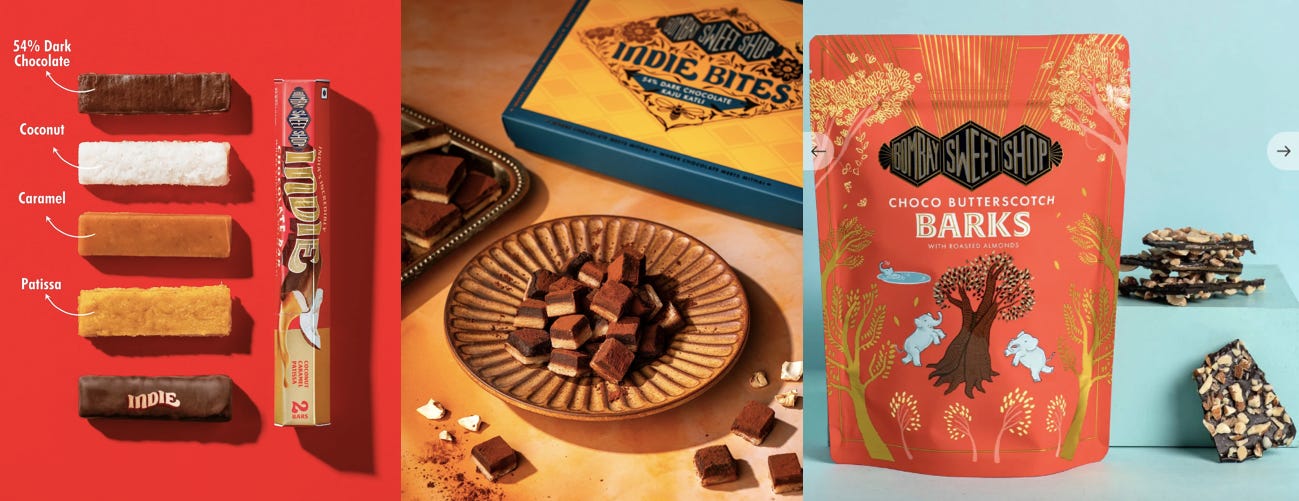
With that lofty goal in mind, after two years of toil, Hunger Inc prepared to introduce Mumbai to their latest, sweetest venture. After being incubated for a year in Girish’s apartment (AKA the unofficial test kitchen), Bombay Sweet Shop was officially opened to the public on 10th March 2020.
2020
On the 24th of March 2020, just two weeks after Hunger Inc had started hosting Magical Mithai Tours at their spanking new sweet factory, Prime Minister Narendra Modi announced a nationwide lockdown to combat the spread of Covid-19.
The day after, the team received news that Floyd Cardoz, their partner, mentor, friend and fiercest champion, had passed away.
Floyd had been in Mumbai earlier in the month celebrating The Bombay Canteen’s five-year anniversary and helping the team gear up for the launch of Bombay Sweet Shop. He had left for New York on the 8th of March as the world began shutting down. Shortly after returning to the US, he announced via Instagram that he had picked up a fever and checked himself into hospital as precaution. After testing positive for Covid-19 on 18th March, he sadly succumbed to the virus a week later on 25th March 2020.
Because Floyd was a titanic figure in the global hospitality industry, and the founder of two of India’s best restaurants, his death made international headlines at the time. Many of the world’s most renowned chefs saluted him as not just a pioneer of Indian cooking, but someone who made it fashionable to bear one’s entire culinary soul on a plate, without any fear.
As it tends to happen with beloved figures that are gone too early, people expended far more words eulogising Floyd Cardoz - the man, than Floyd Cardoz - the chef. His colleagues, friends and former employees talked about how generous he was with his warmth. They mentioned his streak for mischief, his love of a good (or bad) joke, and how he’d never lost his cheeky smile or the signature twinkle in his eye throughout his 59 years. Many young Indian chefs and restauranteurs talked about how he’d always come through with words of encouragement when they’d needed it most, even if they barely knew him.
For the senior group at Hunger Inc, they were forced to swap the unbridled joy of opening Bombay Sweet Shop for the cruel unreality of navigating a world that had locked down, without the guidance of their North Star.
2020: Onwards
"Sometimes the greatest meals on vacations are the ones you find when Plan A falls through."
–Anthony Bourdain
"Excellence is the capacity to take pain"
- Isadore Sharp (founder of Four Seasons Hotels)
The team spent the first few weeks of the pandemic cycling through various stages of shock and grief. They had already taken the painful decision to shut down all three of their restaurants as a precautionary measure, even before India’s official lockdown had been announced.
When it became apparent that Covid wasn’t going away anytime soon, they realised they had to quickly rejig to face their current predicament, a requirement made all the more dire given the Hunger Inc organisation now numbered around 180 people. Outside of dealing with the loss of Floyd, they had to also reckon with the kind of heartbreaking personnel decisions that every restauranteur had to weigh up in 2020, tempered slightly by the fact that much of their staff had left Mumbai to wait out the pandemic in their original hometowns.
“We spent the first lockdown mostly operating out of fear, just trying to keep our heads above water and survive,” admitted Sameer. “We realised pretty fast that we weren’t going to make any profits in Covid, or likely even break even, so we said the next best thing we could do was stay in the hearts and minds of our community, and maybe give people a reason to be happy during those dark times.”
That goal translated to Instagram-based Canteen Classes and ticketed online workshops for things like poee making and mixology. It meant they team took orders for cocktail mixes, Christmas Roast Duck, 5 Spice Suckling Pig, and whatever else they could package and manage with their remaining skeleton crew, doing whatever it took to increase the the odds of the company’s survival.
Eventually this included running a limited delivery menu of Bombay Canteen and O Pedro favourites, which Sameer and Yash took pains to deliver to customers themselves (along with handwritten notes of gratitude).
Even though they were down to just 5% of their usual monthly revenue, they were able to keep things ticking along. Both Sameer and Yash gladly admit that they wouldn’t have made it through this period without the support of their families, their team, their landlords, and their customers, who ordered in from their restaurants far more than would have been reasonable in normal times - each order a reminder to them to hang in there.

After the loss of Floyd, it would be pointless to refer to anything that happened during the pandemic as a silver lining. Rather, a by-product of lockdown was that it forced the company’s hand to become more digitally savvy and delivery-friendly. For a group whose end products drew so much from the design of the physical spaces in which they were consumed, this change demanded a different set of muscles than they’d so far developed. It was the catalyst to them becoming a more agile and resilient organisation in the long run. Nowhere was this transformation more profound than Bombay Sweet Shop.
“In July we looked at our big sweet-factory site that had only been open for two weeks - that was just sitting there - and said ‘let’s do something with this,” recalls Yash. Nikoulina Berg, who heads sales and marketing for Bombay Sweet Shop (and also happens to be Yash’s longtime partner) spun up a quick-and-dirty Shopify website for the brand, and launched it as an e-commerce store on 20th July. For the company, it was a ‘soft’ pivot from being whimsical sweet-factory operators, to becoming something more akin to ‘happiness dealers’, delivering mithai-shaped hugs to people across Mumbai.
“People began ordering mithai to send as care packages to each other’s homes,” recalls Yash. “We initially started with small batches that sold really well. We knew we were onto something during Rakhi season, when we made a large special-edition festive batch that sold out almost instantly.” By Diwali of 2020 they were doing 2000 orders per day.
The metamorphosis from dine-in to order-out brand required them to redesign their packaging to be more practical and user-friendly, and tweak their recipes to have a longer natural shelf life. They organised a fleet of 18 bikes and delivery vehicles that were managed in-house by the team. They created 'Boondi,' a WhatsApp bot infused with its own personality, that answered customers' questions about their offerings. Ultimately the Byculla store was converted into a makeshift Amazon warehouse with all hands on deck helping with the cooking, cutting, packing and delivering of mithai.
The success of the delivery experiment pushed them to launch their first ‘dark’ store in the suburb of Powai at the end of the year. A dark store is basically an inconspicuous delivery-only kitchen without a retail space that is typically situated in a low-rent area. The company would make their mithai fresh everyday centrally from the Byculla location and then transport it to the dark store, from where third party delivery apps could deliver their products to a different geography.
In a weird way, the pandemic revealed Hunger Inc’s true engine of scale. This first dark store set the template for how Bombay Sweet Shop would operate going forward, even today. The difference is that now they operate a total of 18 stores in Mumbai, with only three full fledged ‘experience’ centres in the vein of their original vision (with jazzy additions like Namkeen Dispensers and street-facing Gulab-Jamun-Churro stations). Each day fresh mithai is made in Byculla and distributed to each outlet on the back of a proprietary data model that estimates demand by day and location. The company even sets up Bombay Sweet Shop kiosks in its other restaurants to account for additional demand during festival season.
2020 helped to turn their local mithai shop into a formidable direct-to-consumer brand, delivering to anywhere in Mumbai in 20 minutes, and to most pincodes nationwide. It crossed 50 cr in annual sales for the financial year ended 2024 and now contributes almost 40% of the group’s total revenue.
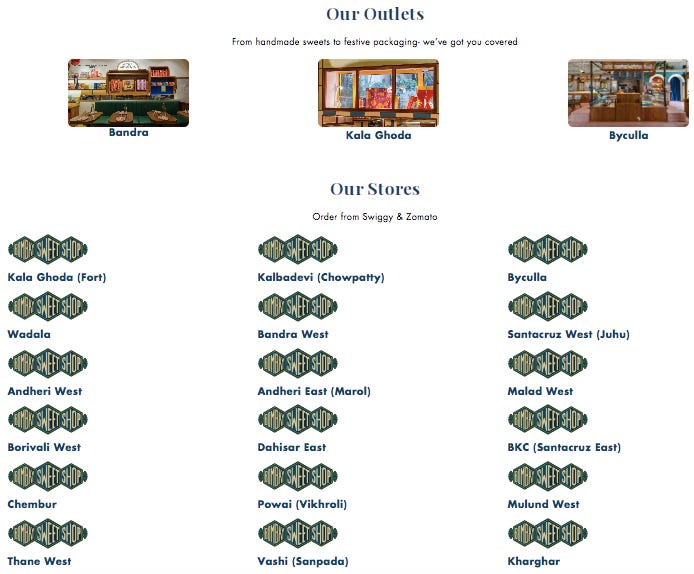
Bombay Sweet Shop emerged as a steadying influence for the entire company (and largely kept it afloat through the pandemic). But 2020 still had more turbulence to offer. In December of 2020, their Executive Chef and original founding partner Thomas Zacharias left the company for pastures new (later announced as a platform called The Locavore to champion indigenous food traditions in India). Hussain Shahzad took over as head chef of The Bombay Canteen in addition to his duties at O Pedro, and was promoted to Executive Chef for the group as a whole.
Surprises would continue to buffet the company in the new year, as the pandemic returned with renewed force.
For those who’ve blocked it out from their memories, it’s worth remembering that India had one of the most stringent lockdowns anywhere on Earth. It meant restauranteurs were constantly on their toes, bobbing and weaving based on whatever new guideline was announced by the government. Although restaurants were allowed to open at 50% capacity by the end of the year, by April 2021, as the second wave wreaked havoc all over the world, India shut down once again.
“When the second lockdown was announced, we decided it was time to do things on our own terms” said Sameer. “We realised that the thing we loved to do most was create new products. So the entire leadership team - about 8-9 of us - huddled together in Yash’s apartment and decided that we were going to do whatever it takes to make sure we come out of this.”
That meeting made it apparent that they needed to temporarily depart from their core food philosophy. Despite their delivery activity, they felt like what people craved at home during that time wasn’t fancy restaurant food, but comfort food. “We started thinking about the food we wanted to eat during that time too,” says Yash. “So we said that each restaurant would now operate two brands - the original brand, and a delivery-only digital brand.”
These new brands were essentially just logos on Swiggy and Zomato, but they aimed to satisfy a humbler urge than the one for the polished dishes that usually came out of the kitchens at The Bombay Canteen and O Pedro. The roster eventually included King Fu Canteen (Indian-Chinese), Sandwich Shack (deli-style sandwiches), Pita Shack (Lebanese), Brun & Babka (an online bakehouse), and Same Same But Different (Thai food). Collectively they would help Hunger Inc make it out of the pandemic. “Aside from helping us to survive financially, far more important was that they kept the morale of the team high,” says Sameer.
They didn’t know it at the time, but one of those emergency brands would find a second wind, in the bargain helping the company to turn the page onto their next chapter.
23. Sandwich Shack
Sandwich Shack had been a pandemic-born necessity, not a lifelong dream. It was eight simple, ‘crave-worthy’ sandwiches available for delivery out of the O Pedro kitchen. Based on the response from homebound diners, the team realised they were on to something.
One response in particular stood out. After the lockdown eased off and restaurants could open at 50% capacity, one of Sandwich Shack’s loyal customers showed up at O Pedro in search for his favourite lockdown indulgence. Yash recalled how “He said ‘I order from here on Swiggy and I know it comes from this kitchen because I track it on the map!’ So we realised this had potential.”
Outside of the virtues of pastrami, the pandemic had also exposed the soft underbelly of their current set up. The company had managed to keep their heads above water largely because Bombay Sweet Shop had emerged as a delivery-friendly brand. Its success had made it apparent that they needed to build a moat around their business that could fend off another lockdown, which was a very real possibility at the time. Their next brand needed to be pandemic-proof.
What Sandwich Shack had going for it - aside from offering comfort and deliciousness - is that sandwiches travelled rather well. It’s a food group purpose-built for mobility. So the team decided that their next venture would be a delivery-focused brand, and sandwiches would be their next bet.
The original plan was to find a small space - something unassuming and functional, far from prime property, more akin to a 200 square foot garage. That’s all they really needed to operate a delivery-only kitchen. But fate (and their real estate agent) had other plans. “Our agent called us about this other space that was available,” says Yash. “It was in a dilapidated condition, much bigger, with a much higher rent than what we were planning for, but it was also the site of the old St Jude’s Bakery.”
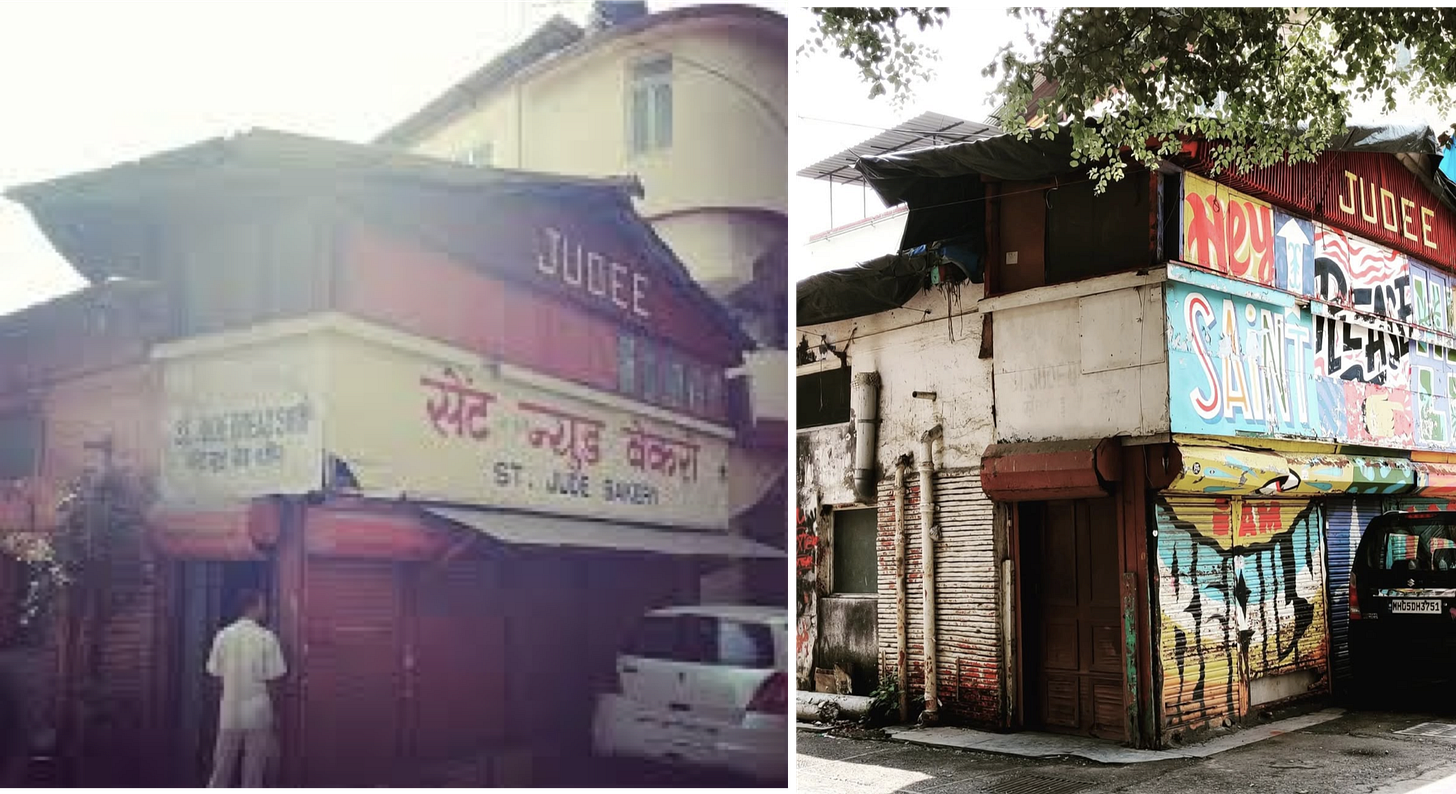
St. Jude's Bakery wasn't just any old bakery. Tucked away in one of the quaint by-lanes in the honeycomb of Bandra’s Ranwar village, Jude’s was a neighbourhood institution. For decades, it served as Bandra's communal oven, where local families who didn't have ovens at home would drop off their doughs and batters for baking. One of those local families was the Cardoz’s.
“Floyd grew up literally down the road from Jude’s,” says Sameer. “His mother still lives 200 metres away. She told us that in the 60s and 70s it’s where she would send the kids to drop off the dough for baking, and even the Christmas chicken for roasting before they had an oven at home.”
Floyd loved bread. He was literally known as the Paowalla in the US. He ran a ‘bread bar’ on the ground floor under Tabla where he would share his love of Indian breads with his guests, eventually opening The Bombay Bread Bar in New York City. The prospect of opening a sandwich shop in place of Jude’s, an iconic bakery in the same neighbourhood as Floyd’s childhood home, as a way to celebrate the memory of their mentor, was a prospect too good to pass up.
Given it was situated on Veronica Street, the name came ready-made too.
24. Veronica’s
In February 2023, a series of mysterious posters began appearing across various surfaces in Bandra.
A few weeks later the shutters were officially raised to unveil Veronica’s, the third restaurant from Hunger Inc (fourth if you include the original Bombay Sweet Shop location in Byculla).
With the help of L.A.B. (Language Architecture Body) and Shonan Purie Trehan—who's become an integral part of the extended Hunger Inc family— they were able to preserve the bones of the old bakery while giving it new life: the roof was opened up to let natural light flood in; original glazed dado tiles with floral motifs were kept intact alongside modern epoxy flooring; and the building's original walls were reinforced rather than replaced.
The colour palette—mint green, turmeric yellow, and sunset orange—echoes the homes in Ranwar village, connecting the space to its surroundings. Like all Hunger Inc’s venues, Veronica's is both a product of and for its environment.

What makes Veronica's stand out in the Hunger Inc portfolio is that it's not explicitly celebrating India, but rather celebrating a neighbourhood. While The Bombay Canteen explores regional Indian cuisine and O Pedro focuses on Goan-Portuguese inspired fare, Veronica's is an ode to Bandra itself—its winding lanes, its old-world charm, its mix of communities, and its adorable (and sometimes feisty) cat-ladies.
"O Pedro and The Bombay Canteen are places you might go to once in three weeks. But Veronica's is designed to be a place you can come to twice or thrice a week - which might be for a different reason each time. You might want to pick up a coffee or you might come here for a date or you just want a great salad for lunch,” explains Yash. It's a different kind of ambition—not to be an ‘occasional’ destination, but to be a watering hole for a community, to become part of the neighbourhood's rhythm.
The team reinforced this with small touches: the ‘Bandra Bulletin’ pin board where locals post everything from dog adoption alerts to job openings; a handsome communal table in the centre of the dining room; a bright orange post-box for ‘Feedback and Feelings’; a retail space selling Bombay Sweet Shop essentials and ‘Bean Bags’ of coffee (a playful nod to the guerrilla advertising for bean bags that used to be splashed across Bombay).

Veronica's was conceptualised to be 'a sandwich shop with the personality of a cocktail bar' (though that specific verbiage would come to them much later).
"We had six slides about what we wanted Veronica's to be and what we didn't want it to be," Yash says. "For example: we wanted a great specialty coffee program but we didn’t want to bore guests with pretentious details like how many times the coffee had been fermented.”

"Bombay is making some of the best coffee in the world right now”—you could make the argument that just Bandra alone is making the some of the best coffee in the world right now—“Our coffee at Bombay Canteen and O Pedro was always basic machine coffee, so we knew we needed to up our game,” says Yash.
Same with wine. “We wanted an easy, fun, versatile wine list—but we didn’t want to make it intimidating for our guests."
The Veronica’s wine menu, Sameer says, is “designed to put a smile on your face”. It’s organised by moods and palates, skipping the typical fanciness entirely.
With the rest of the menu, Hussain's focus was straightforward: simple food that makes people happy, done with a little bit of flair.
Crowd favourites include ‘The Big Floyd,’ a tribute to Floyd featuring fried chicken, tamarind ranch sauce, and pickles on a pillowy Japanese Hokkaido-style milk bun; ‘The Avo Snob,’ which layers marinated tomatoes, avocado, and burrata between perfectly toasted ciabatta; and the ‘Hangover Tacos,’ which deliver much-needed relief with bacon rashers, scrambled eggs, and habanero salsa atop a flour tortilla.
There are classic Hunger Inc creations too - like the ‘Everything Bandra Bagel,’ a New York-style bagel seasoned with traditional East Indian Bottle Masala, or ‘Morning Momos" (dumplings stuffed with chicken sausage and aged cheese), inspired by Hussain’s breakfast in Kolkata's Tiretta Bazaar years ago.
Located in the most Bohemian of Bombay suburbs, Veronica's also ticked off all the usual hipster essentials: ceremonial-grade matcha from Japan, kombucha on tap from Bombay Duck Brewery, craft beer from Gateway Brewing Co., and single-origin coffee beans from estates in Chikmagalur.
Aside from the menu, what’s notable is the business model: Veronica's shape-shifts throughout the day, tailoring its offerings to different customers at different hours. On weekdays, there's Breakfast from 8-11 am, followed by an hour of coffee and cakes till noon. The afternoon features Sandwiches, Coffee, Kombucha & Wine. Evening brings another coffee break before the full menu returns till 11 pm. This strategy is designed to maximise revenue from the same square footage across different times of day—a neat unlock in Mumbai's brutal real estate market. As Sameer and Yash put it - "It’s important to make your real estate ‘sweat’ through the day."
A consequence of being a place with constant footfall is that it commands the attention of a wide and diverse cast of customers. The Veronica's team has chosen to redirect this attention to several Indian food products and brands—from kombuchas to coffee estates to brewers to graphic designers—actioning their belief that "a restaurant must serve its community."
Veronica's might have been the outcome of leading by heart rather than head, but it’s made for a good business. Launched into the blast-crater left by Covid, it wasn’t surprising that a place purpose built for good vibes through the day would have queues upto 2-3-4-hours long to get in for much of its first year.
Everyone that put up with snaking lines around the corner to get a meal at Veronica’s in its first year would have been forgiven for just getting straight to the menu once they got their spot inside. It means they likely wouldn’t have clocked the short flight of stairs tucked into one side of the room, leading to an attic-like space overlooking the main dining area.
In this sandwich-shop-with-the-personality-of-a-cocktail-bar, they wouldn’t have realised that just above their heads, the chef that runs the place was making arrangements to host the greatest dinner party in Mumbai right there in his living room.
25. Papa’s
In my second conversation with Sameer and Yash, at a nondescript table at Veronica’s, they showed me their original ‘concept video’ for what they wanted to do with the cozy mezzanine floor above the restaurant. The video was essentially a short Instagram-Reel with a series of flashing words, phrases and images (kind of like a Cold War-era Soviet propaganda film). The frame that caught my eye had a little graphic of a cartoon bear that looked like this:
When I stopped to ask them about it, they said “It’s because we wanted the space to feel like a warm bear hug”.
Papa’s, launched in February 2024, was envisioned as an “intimate yet loud” chef’s counter-style restaurant situated in the space above Veronica’s. It’s the culmination of a decade-long quest to reimagine what dining out in India could be. It’s also the logical end-point for the conversation about creating ‘the Indian restaurant of today’ that the team started back in 2015. For Sameer, Yash, and Hussain, Papa’s is their opus — their fantasy restaurant brought to life.
"Imagine a sandwich shop in Bandra where the chef runs the shop but lives upstairs—and throws a dinner party for 12 people on four nights of the week,” Hussain explains.

If you manage to snag a spot as one of the 12 guests on any given night, your evening at Papa’s will start in the little bar opposite the chef’s counter - with a whimsical set of cocktails that are designed to be “Smashable” - similar to how you would first have a drink in a friend’s living room before heading over to the dining table. The countertop itself is made from repurposed wood from The Bombay Canteen’s first bar, one of several easter eggs that reveal the depth of thought and heart that has gone into crafting the experience.
Amongst the paraphernalia sits a miniature bobblehead of Floyd dressed in his beloved NY Giants jersey, alongside well-worn cookbooks from his collection—tiny tributes that keep his presence felt throughout the room. The name ‘Papa’s’ itself is an homage to Floyd, whom the team fondly referred to as ‘Papa-ji’.
“Floyd’s two big loves were bread and fine dining,” says Hussain. “So this space gave us the opportunity to celebrate to both.” True to form, Papa’s subverts any notion of conventional ‘fine dining’. There is a conspicuous absence of white tablecloths, stoic recitations of ingredients, hushed tones punctuated by gentle clinks of crystal, or an atmosphere that demands reverence over relaxation. “It’s fine dining without the fuss — more fun dining than fine dining” says Yash.
Having worked at some of the most celebrated culinary institutions in the world, the team had seen both sides of fine dining — the attention to detail, exacting standards, and technical precision that helped conjure transcendent food experiences, but also the stuffy atmosphere and formality that could drain the life out of a meal. At Papa's, they cherry-picked the elements that fit within their vision for fine dining that was relevant to India.
Hussain says that “What people often forget to ask with fine dining is ‘did you have fun?’. Fine dining is great, but it shouldn’t be cerebral. That takes the joy out of eating. You don’t need to know where this chicken was born, where it went to school, where it died etc. You just need to know that it’s delicious. What we wanted to do with Papa’s was put the joy back into that experience. Make it whimsical. Make it playful. Do things a little bit outside the lines.”
Hussain, by many counts considered the best chef in the country, is the steward of that soul himself. He’s the centre of gravity for the evening. He is part conductor, narrator, and lead performer (and, when he’s pouring shots of negroni for his guests from a concealed silver flask, he’s also chief enabler).
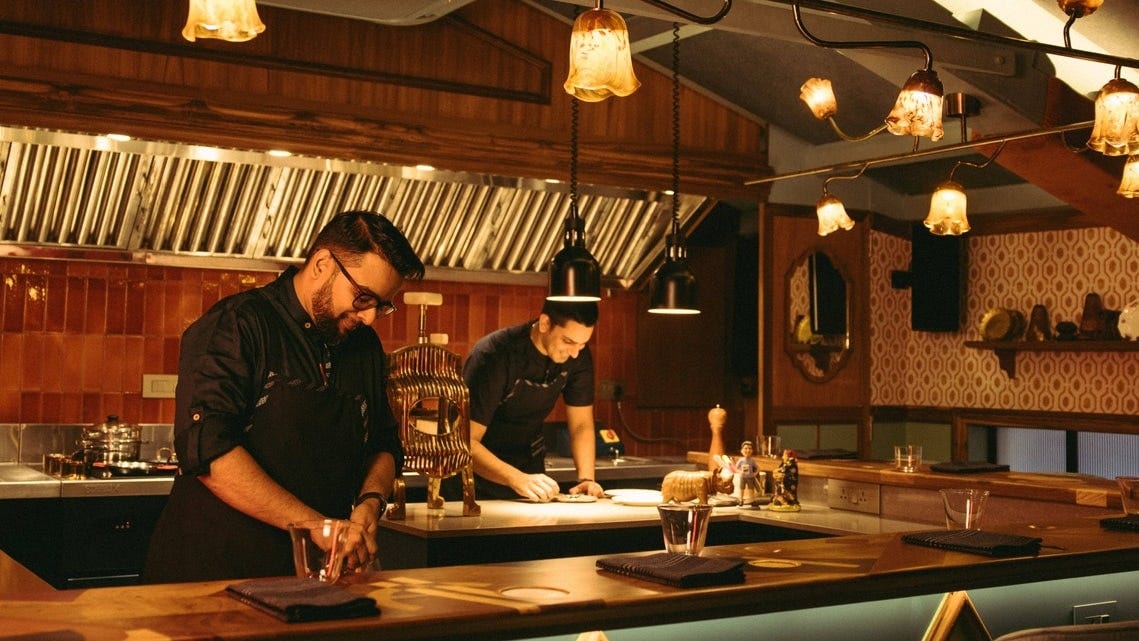
The food he serves at Papa’s - via a fixed 13-course tasting menu - is an autobiography. It’s a travelogue through his own life, his experience as a chef, and an ode to the team’s learnings, mistakes, and discoveries over the last ten years.
For instance, the meal starts with a chhena poda canelé—Hussain's nod to the Bohri Muslim tradition of beginning meals with something sweet. Or take the Thayir Sadam—the humble South Indian curd rice that’s elevated with sushi rice, goat cheese, and slow-cooked beetroot, garnished with pickle from Chennai's Mylapore Ganapathy store that grounds the dish in Hussain's childhood. Or my personal favourite, the Bugs Bunny—tender rabbit meat grilled over charcoal, brushed with a soy-based marinade infused with weaver ants - a nod to a centuries-old tradition still practiced by Odisha’s tribal communities.
Hussain admits he went through 8 months of crippling self doubt wrestling with the blank canvas of Papa’s menu, until he found his North Star - a dessert now christened as ‘Potato Chips’—a playful riff on darsaan, the honey-drenched crispy noodles found in Indian-Chinese restaurants. The dish is both a ‘texture and flavour bomb’ and also conjures his childhood memories of late-night Chinese restaurant outings, setting the tone for everything else that made its way onto Papas’ eventual menu."When you don't have a reference point in a cuisine, it helps to have a starting point that is an emotion. That was this dish," he says.
I won’t offer any more spoilers, but you get the picture. On the face of it, it’s tough to find an appropriate overarching label for Papa’s. I would hesitate to call it an Indian restaurant, or an Indian meal, or any of their dishes as traditionally Indian. That’s largely by design. As Hussain puts it “We cook for an India without borders.” That idea - of treating the entirety of the Subcontinent (and the world) as their culinary toy chest - is why their food doesn’t appear to conform to any singular cuisine, not one that’s been represented like this before anyway. Instead their approach was to begin with a starting point that was grounded in India and take it somewhere it hadn’t been before - “Not Indian cuisine but an Indian soul”.
In many cases that starting point was an overlooked indigenous practice or ingredient - like Yak’s cheese from Ladakh, weaver ants from Odisha, rasam from South India - and elevate it into the fine dining conversation. “Lavish ingredients are easy to cook with,” says Hussain. “Anyone can shave truffles on something and call it ‘fancy’. The real challenge is in recreating something like mooli and petha or curd rice to where it can be called glamorous, or reinterpreting some simple everyday ingredient to change the way people perceive it. So what you get at Papa’s is a journey from the lavish to the low-key that spans everything in between - part classy and part mass-y.”
That’s Papa’s - an entirely novel addition to the vocabulary of fine dining, brought to you by India™. Something that’s not just an ultra-refined or ultra-Westernised take on Indian crowd favourites (which was the hallmark of ‘Indian fine dining’ in the 2010s) - but something truly new, and truly Indian, just not in the way it’s been done so far. What they kept from their favourite memories of fine dining abroad was the intimacy of those meals, and the chance to guide their guests through a special evening.
The team freely admit that they wouldn’t have been able to pull off a restaurant like this when they first moved back to India. Papa’s is as much the outcome of a dialogue with Mumbai (and diners in Mumbai) as it is the fruits of the team's creativity. "Once you've built trust, your audience will let you take risks," says Hussain. The fact that diners can - as he puts it - "show up and forget about their worries for three hours because they know they're in good hands", without needing to know what’s on the menu, represents a notable evolution in India's dining culture. It’s also an endorsement of the team’s ability to read the room.
26. Party of Twelve
Where Papa's splits from its predecessors is not just in its experimental fare or a fixed menu or its higher price point, but in its constrained access. Twelve seats, four nights a week means that there's a perennial queue of hopefuls in a city that salivates over novelty. You can't simply decide to eat at Papa's tonight—or even this month. The restaurant operates on a ticketed model that would be familiar to concert-goers but remains disruptive as far as Indian dining goes.
Here’s how it works. On the first of every month at 11 am, the online reservation system for Papa’s will open for the following month (i.e. on 1st March it’ll open up bookings for April). You get the opportunity to select your desired date and number of seats. These are offered on a first-come-first-served basis, and you pay the full advance for your meal (Rs. 6000 per head) on the spot. This window is vanishingly small - less than 30 seconds to be exact. So by 11:01 am, Sameer and Yash’s DMs will be filled with hundreds of disappointed diners telling them they suck, that their system is rigged, that nobody wants to eat at their stupid restaurant anyway. It’s probably a good problem to have.
This scarcity turns what could be just another meal into an event worthy of anticipation - i.e. a thing to look forward to. The ticketed model solves several critical business problems that plague fine dining: it virtually eliminates no-shows (which can account for 10-20% of reservations in traditional set ups), allows precise ingredient ordering (dramatically reducing food waste), creates predictable cash flow, and gives the kitchen exact knowledge of who's coming and when. When diners have skin in the game via pre-payment, the restaurant can focus entirely on execution rather than hedging against uncertainty. As restaurateur Nick Kokonas discovered when pioneering this approach at Alinea in Chicago in the early 2010s, pre-paid ticketing can add hundreds of thousands of dollars in revenue annually for high-end restaurants with limited seating.
Papa's joins a global cohort of high-end restaurants like Noma, Eleven Madison Park, Disfrutar and others that have reframed dining as occasion rather than convenience. Closer to home, it's in conversation with places like Naru Noodle Bar and Guerilla Diner in Bangalore and Masque in Mumbai—restaurants that similarly understand they're selling experiences, not just food.

The model reflects a broader shift in urban India's relationship with consumption. When it comes to food and restaurants, for certain metro-dwelling, affluent sections of the populace, what was once about chasing calories eventually evolved into checking nutrients, and has now progressed to hunting experiences. This transformation is visible from the explosion of pop-up events, international collabs, destination dining, luxury dining, food festivals and immersive cocktail bars across India’s metro cities.
Just as Americans shifted from valuing material possessions to craving emotional experiences after the 2008 financial crisis, affluent Indians - particularly post-pandemic - are seeking connection and shared moments over mere consumption, giving rise to a burgeoning ‘experience economy’.
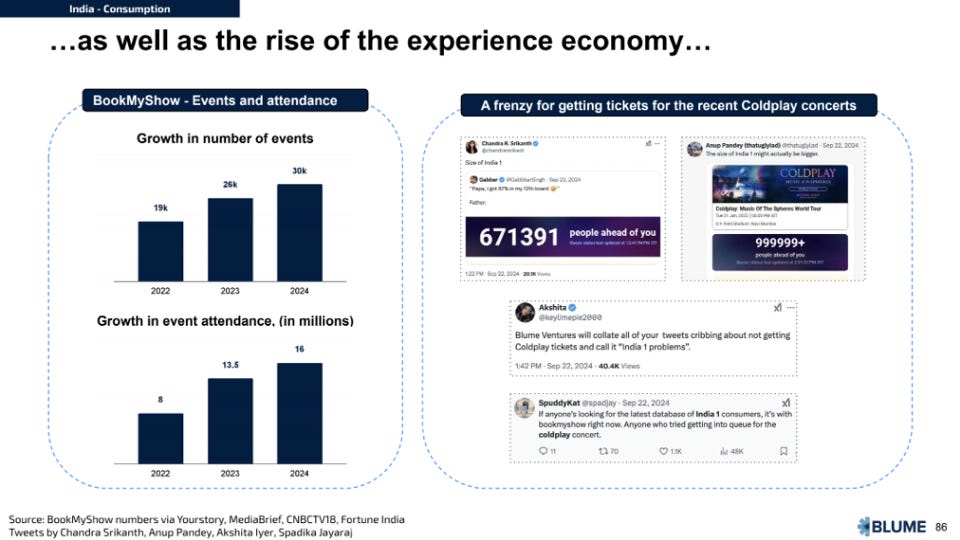
In Papa's case, the meal is theatrical in its most literal sense: ticketed, time-bound, with a set beginning and end. The context for the meal completely changes because of the price of admission: from the vantage point of consumers (whose expectations are heightened), and the performers (who have a greater responsibility to deliver something memorable). In this case, Hussain is both playwright and lead actor, ably supported by a stellar cast that includes GM and Chief Sommelier (and part-time magician) Madhusudan Kashyap, Head Bartender Harish Subramanian, and several others.
Sameer likes to say that "food is the new music". If so, Papa's offers an entirely unique concert experience, featuring a set of performers at their absolute peak.
It’s worth mentioning that despite the enthusiasm and creativity of restauranteurs thinking ever-bigger, the depth of the fine dining market in India still remains quite shallow. Given the proportionally high food, labour, and set up costs (in addition to expensive rent), a fine dining restaurant is anything but a slam dunk business proposition. Where Hunger Inc reveals their commercial acumen is in their clever utilisation of space. Papa’s leverages an economic sleight of hand in running a fine dining restaurant above a humble sandwich shop (which serves as many people in an afternoon as Papa’s serves in a month). It means that the typical costs of a fine dining establishment can be subsidised by the income from below. Veronica’s can do some of the economic heavy-lifting, which gives the Papa’s beancounters some breathing room, allowing their performers to focus on putting on the best possible show.
Despite being just over a year old, Papa's has already distinguished itself, becoming the only restaurant in Mumbai to receive 5 stars from Culinary Culture (which aims to create India's first Michelin-equivalent rating system), and earning a spot on Time Magazine's ‘World's Greatest Places of 2025’ list.
So, outside the obvious, what makes Papa's a great ‘experience’? It goes back to one of their defining superpowers - storytelling. In fact - if you aren’t averse to getting a little geeky here - the restaurant's entire setup perfectly mirrors what author and storytelling maestro Matthew Dicks suggests are the four essential ingredients of an epic story - stakes, surprise, suspense, and humour.
In watching Papa's unfold throughout the evening—starting from the lottery-like exclusivity of the booking process to the theatrical progression of dishes; from the unexpected ingredient combinations to Hussain's narration of the dishes - they've engineered a gripping narrative arc. The plot is enhanced by the secrecy of the entrance (through Veronica’s), the unassuming names of the small bites (‘samosa’, ‘rasam’, ‘modak’) and the lighthearted mains (What The Duck?, Bugs Bunny); the unexpected appearance of a gola machine; and the cheeky shot glasses, colouring books and card tricks that make their timely appearances.
Stakes, surprise, suspense and humour - think of your favourite movies, TV shows, political updates, or sporting events. Intuitively or otherwise, Hunger Inc found a way to tell the perfect story using a restaurant as their medium, and gave us neat way of concluding their own.
Now that we’re all caught up, we will close the loop on the story of Hunger Inc. If you’re still here, I hope you will indulge me these final paragraphs.
27. Okay, so what’s the story?
One of my all-time favourite pieces of Internet writing is a blogpost called ‘The Age of the Essay’ by Y Combinator’s Paul Graham. It sums up why the craft of writing is still important today, and why we write the kinds of essays we do at Tigerfeathers. Here’s two paragraphs that get to the heart of PG’s argument:
I started writing this piece, many months and words ago, to try to figure out what Hunger Inc had figured out. I wanted to understand what it was about them or their approach or their restaurants or about India itself that had allowed this restaurant company from Mumbai to capture lightning in a bottle in 2015, and seemingly wield it on command for the next ten years.
Some of these reasons should be apparent if you’ve followed along with the story in the paragraphs above.
Like how, right from the start, the team prided themselves on being masters of context. It’s meant honing an uncanny ability to dictate what does and doesn’t belong - whether that’s in a dish, on a menu, in a zip code, or on a countertop.
Or how there’s an unfakeable curiosity that surges through the group. It’s the kind of curiosity that seizes you when you’re walking through an airport in Istanbul and someone tries to sell you baklava; the kind that leads you to wonder what kind of culinary reprieve would tickle the reveries of a banker in BKC.
There was no business plan ten years ago that laid out the vision for a Goan restaurant, a mithai brand, a sandwich shop, or a fine dining chef’s table restaurant. These were consequences of leading with heart, of being switched on - situationally aware - with their antennae adjusted to catch those strange signals from the universe that someone else might have dismissed as background noise.
Speaking of antennae…
1. About them
Patrick Collison, co-founder of Stripe, has this idea that companies aren’t just business entities, but manifestation of specific worldly signals. He says “a company should be the resonant frequency of some tuning fork clearly rung. Presumably, the founders are chronologically the first people to respond to that wavelength. But I think…it's only going to work if it then becomes an agglomeration of people who share that idea…”
I love that characterisation because it sums up what Hunger Inc really is – a frequency that found its people. Much like how Steve Jobs and Apple drew legions of devotees who wanted to ‘build insanely good products’, or how Elon Musk is a lightning rod for ‘audacious technological optimism that refuses to accept traditional constraints’, the Hunger Inc mission of ‘celebrating India through its culinary traditions’ has been a magnet for people who believe that the story of Indian food deserves to be faithfully told.

So many of the missionaries who’ve been a key part of their journey - Yash, Sameer, Thomas, Hussain, Girish - even Floyd Cardoz back in 1990s - had at some point embarked on their own personal quests to understand their culinary heritage, and were pulled onto a common path by the belief in a shared purpose.
You could make the case that that journey has drawn in people that don’t even work at the company, like Radhika Misra, Ayaz (Busride), Shonan (LAB), Pritha and Avi (Please See), and others who’ve become part of the extended family. The company’s clarity of purpose continues to work like a tractor beam to find the right kind of talent in whatever shape or form it comes in.
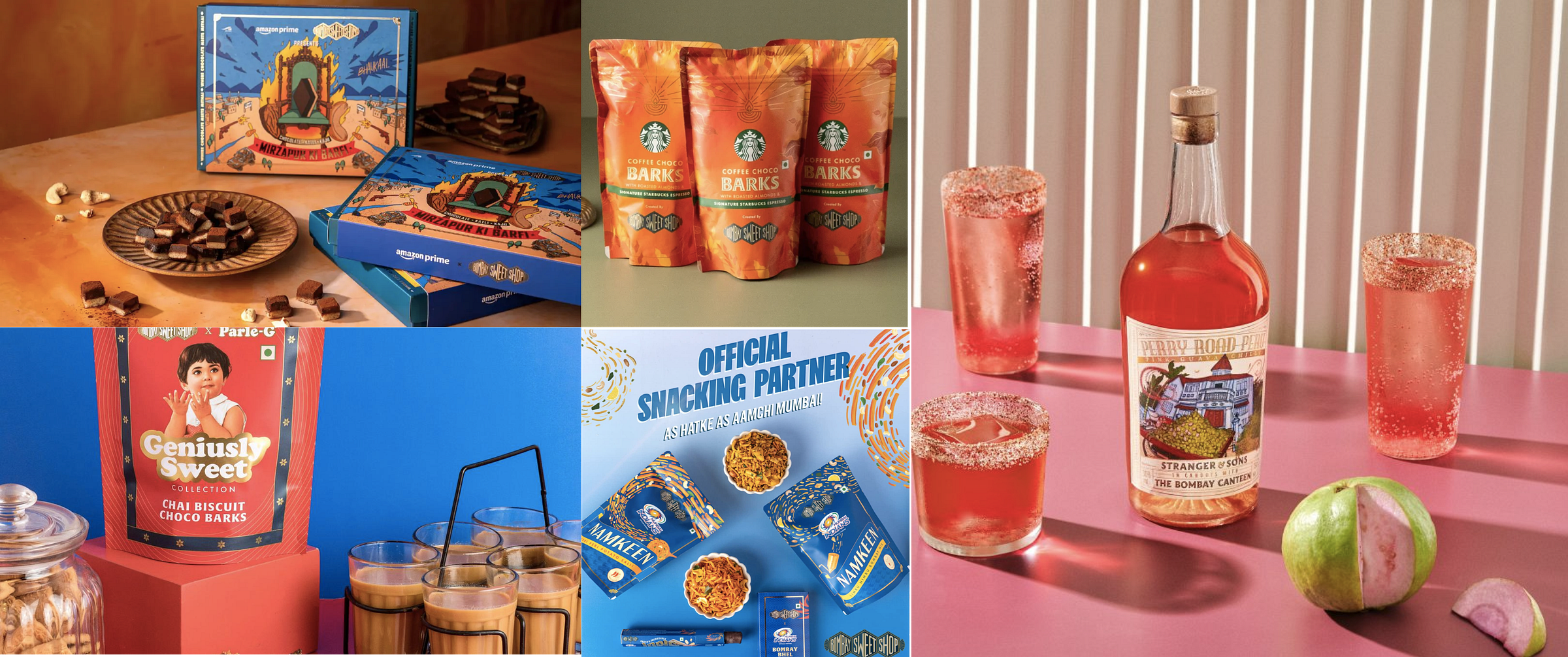
When it comes to personnel, what Hunger Inc understood before any other restaurant group in India is that hospitality is, at its core, a casting exercise - i.e. if your end goal is to stir a certain emotional reaction from your guests, you need to find, train, and retain the right ‘performers’ that are upto the task, which means investing as much in the actors outside the kitchen as the ones inside it.
“We were probably the first restauranteurs in the country to pay as much attention to the front of house function as we did to the back,” says Yash. “Yes, food is important. But hospitality is more than that. It’s about making people feel important. It’s about making your guests feel seen and heard. And if you want your customers to feel taken care of, first you need to take care of your own staff, so they in turn feel empowered and motivated to take care of the guests that walk through your door. That’s what makes the difference to a restaurant experience, and it starts with nurturing a team of people who want to take ownership over those small details - people who think ‘it’s cool to care’.”
A restaurant with ‘okay’ food and outstanding service will usually run laps around a restaurant with ‘good’ food and terrible service. So on the face of it, you might think it academic that any credible restauranteur would prioritise the training and nurturing of an elite hospitality team. You might think that any sensible dining establishment would seek to ensure the highest possible standard of service, especially to gain and maintain a competitive edge as the options to eat out, especially in major Indian cities, continue to explode.
But most of them don’t. Or, to be more accurate, most of them can’t. The numbers in this chart explain why:
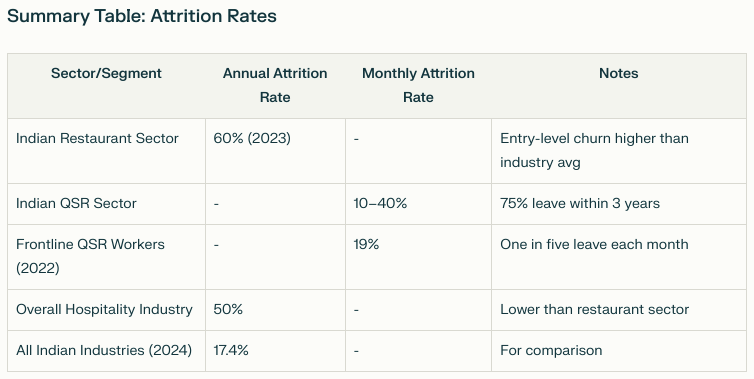
The Food & Beverage industry in India - much like the rest of the world - suffers from a chronic attrition problem. Restaurants tend to be a revolving door for personnel. It’s because these service roles are typically saddled with long hours, low pay, a lack of incentives and benefits, limited opportunity for career advancement, and - in India especially - are seen as lower down the prestige pole. New restaurants themselves constantly open and shut down. There’s very little reason for staff to stick around in one place for a long time, and most people don’t.
The ‘fungibility’ of these jobs means there’s a constant cycle of hiring and replacement of personnel. When coupled with the already-slim margins that even the best dining establishments have to play with, it makes the average restauranteur typically reluctant to invest any meaningful time, money and effort in training and development, which means they can’t offer the kind of differentiated service that would help them stand out in an increasingly crowded field. But because no training and development is offered, staff have no reason to stick around, and thus you have the conditions for a textbook vicious cycle.
As you’ve probably gathered by now, Hunger Inc places their own people in the penthouse of their organisational totem pole, prioritising their development and well-being above all else (eg: they’re one of the few restaurant groups to offer staff a 5-day workweek; they have a zero tolerance policy for rudeness towards staff from entitled patrons; or just glance through the Instagram pages of their restaurants and see their weekly tribute posts for different members of their team). So how are they able to do this? How do they escape the vicious cycle outlined in the paragraphs above? What gives them their operational edge?
It’s this:
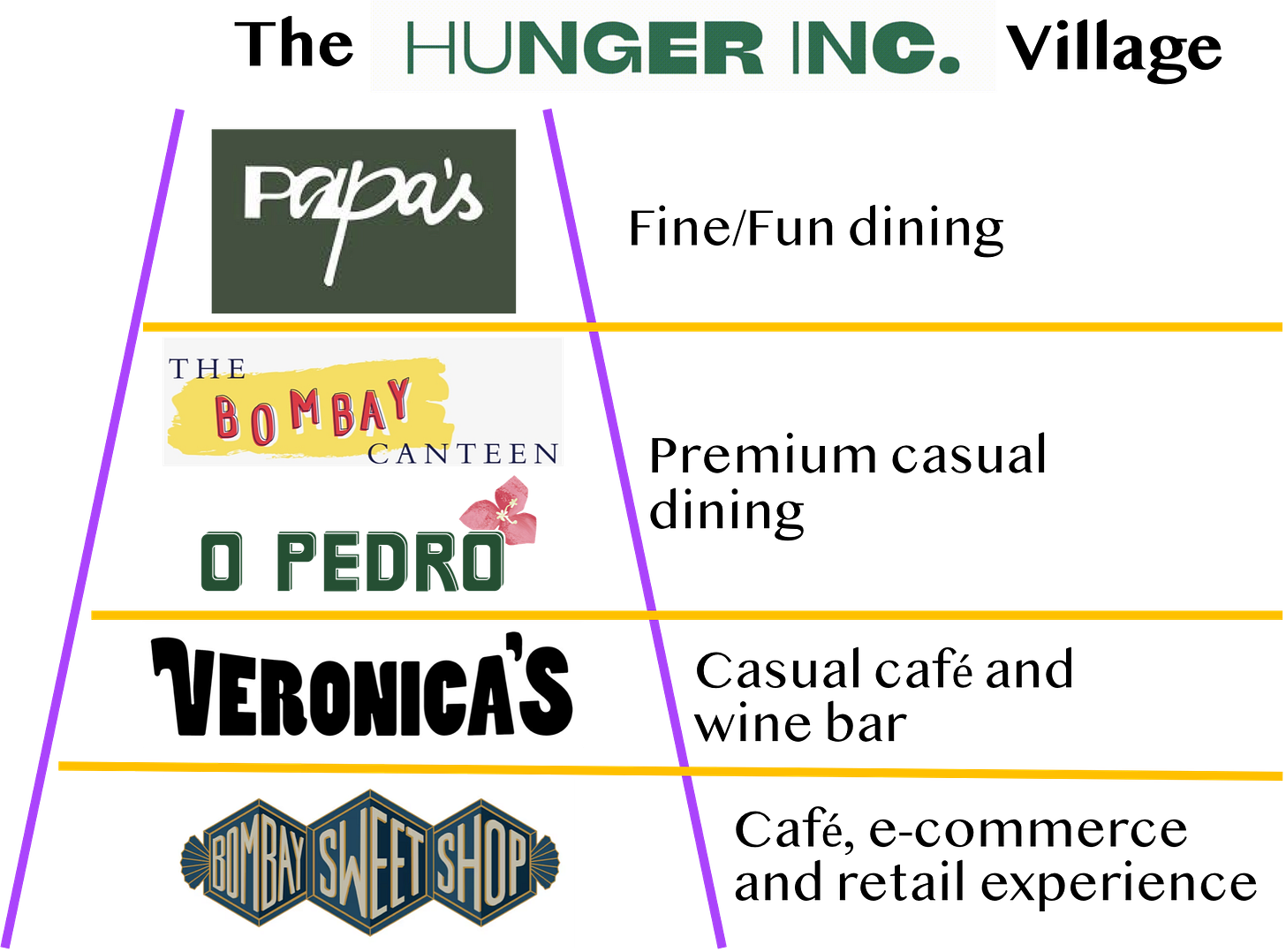
Operating a ‘house’ of F&B brands gives the company an operational cheat code. It means they can offer new joiners a long, colourful, multivariate path for career progression - a choose-your-own-adventure through different levels of the hospitality game. Hunger Inc’s Head of Operations, Devang Devsaria, explains:
“Our success comes down to hiring the right people and figuring out how to sustain them. We make it a point to show new joiners the bigger picture [of the company], help them to understand their place in it, and how they can grow through the organisation. If you look across the company today there are hundreds of examples of people who started in one place and ended up somewhere completely different. For example, someone might start as a server at Bombay Canteen and end up as a GM at O Pedro. Someone might start behind the bar at O Pedro and end up as a supervisor at Veronica’s. Someone might start as an intern at Veronica’s and end up managing a Bombay Sweet Shop outlet. We try to match the personalities of our people with the personalities of our restaurant brands.
At the basic level, we don’t test for technical skills when we hire front of house staff. Instead we’re looking for a genuine hunger to learn, and a passion to grow with us. It’s why we don’t ask any technical questions in their interviews, we ask situational questions that demonstrate their thought process and character. In a lot of cases we don’t even require a hospitality or hotel management education background. A lot of our staff are people new to restaurants who wanted a change in their careers. Skills can be taught, but you can’t teach a passion for hospitality. So first we ask everyone to come work with us for two days on a trial basis to see if they’re a good fit. Finally, once they’re inside our universe, we train them and help them to find the perfect role and the work they love.
It’s logical right? When you show people that you care about them and their well being, when you help them find what they love to do, they will be motivated to pass on that same care to our guests. And because people are doing what they love, they tend to stick around with us for many years. New joiners see examples all around them of people who were promoted and progressed through the organisation for great work, and they know they’ll similarly get the training and support to level up personally and professionally.”
With a wide and growing portfolio of brands, Hunger Inc has a structural advantage that supports a higher prioritisation of their people when compared to standalone restaurant operators. The ‘house of brands’ set up indirectly allows them to offer a differentiated brand of quality and personality in service. People stay longer (learning and working to find their ideal nesting spot), which means the company can invest more in their upskilling, knowing that it will reap the benefit of better trained staff over a longer term (vs someplace else).
Having a large and successful restaurant group means they also derive economies of scale via centralised teams for functions like Finance, Marketing, Procurement and Human Resources, freeing up more resources to invest in training (done on a weekly and monthly basis on everything from branding, product development, reservation systems, mock guest scenarios etc). Better training leads to better service which leads to happier guests which leads to successful restaurants. Successful restaurants mean business expansion which means more roles and room to grow for the most talented people. It’s an inversion of the typical vicious cycle (a…delicious cycle?).
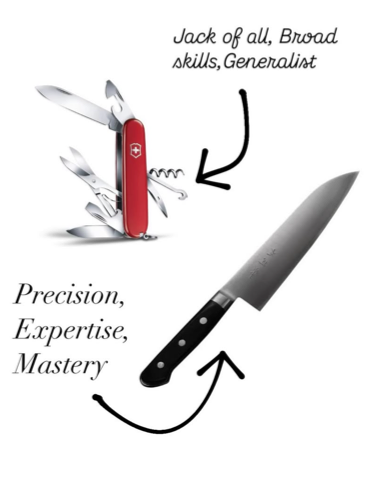
The company’s reputation and accolades already make them a favoured landing spot for talented graduates from hospitality and culinary institutes across the country. Coupled with the opportunities for growth, the best talent see Hunger Inc as less of a stepping stone and more of a permanent base on which to build their careers. With long tenured staff and “a deep bench”, they have the luxury of being able to plan ahead, focusing on expanding the empire instead of replacing personnel.
So, when people look at Bombay Canteen or O Pedro or Papa’s and attribute their success to innovation in food or service, they should spare a thought for the underlying key that unlocks all of this - i.e. the shape of the company. And if you’re looking to start your own restaurant today, instead of asking ‘what level of service do I want to provide?’, a better question to ask is ‘what does my business model need to look like to support the level of service I want to provide?’.
2. About the-thing-they-say-is-really-the-thing-that-makes-them-special
It would be incredibly lazy to attempt to reduce the success of Hunger Inc down to any single pithy reason or maxim. But that’s basically what I was fishing to do, when I asked Sameer and Yash if there was a ‘secret’ to their success that had escaped mainstream coverage of their company so far. Even in a line up of lazy questions, that question might qualify as laziest, but they were kind enough to humour me with an actual response:
“The secret is community”
‘Community’ ranks as one of those anodyne buzzwords that startups stick onto their fundraising decks just for vibes, but in Hunger Inc’s case, it sits at the core of their raison d'être. Food, to them, is ultimately just about people, and restaurants are really about bringing people together. That may sound like prime Hallmark-card material, but that notion has a very tangible bearing on how they orient themselves in relation to their surroundings.
Mainly, it acknowledges that their restaurants (or any restaurants) don’t exist in a vacuum. They are part of a broader ecosystem - a neighbourhood, a locality, a city, a country - comprising a web of relationships with diners, farmers, fisherfolk, suppliers, investors, blue collar workers, white collar workers, regulators and service professionals. There’s a give and take to these relationships i.e. a natural symbiosis. The truly enduring restaurants understand that they have a duty and responsibility for the welfare of their milieu, but at the same time this community represents an infinite wellspring of support and inspiration, if treated properly.
“All our restaurants are the result of paying attention to what was happening in those communities,” says Yash. For example, O Pedro was the offspring of steel and glass in BKC. Veronica’s was born from the neighbourhood around St Jude’s Bakery. The Bombay Canteen - true story - was informed by the founding team literally stalking people at Kamala Mills during lunchtime to see how and where they usually got their midday meals.
Even the culture of the company has been pulled from its surroundings. “We didn’t want to just have this superficial list of ‘values’ that we’d stick onto a poster but never really embody ourselves,” says Sameer.

“We always say that the thing that defines Hunger Inc is Bombay. So each of our six values has its origin in a story from Mumbai,” says Yash, “and we bring these to life for our team members using relevant in-house examples.”
For example, ‘Take Ownership’ draws from the story of Afroz Shah, a Mumbai based lawyer who, disgusted by the mountains of filth accumulated on Versova Beach, decided to take matters into his own hands (literally), sparking a movement of citizens who decided to clean the beach of debris themselves. Closer to home, Hunger Inc’s ‘Values’ deck to new staff similarly highlights the story of their Independence Day Daawat, which proactively takes aim at solving social challenges (clean air, green cities, rural empowerment, farmer upliftment etc) without waiting for government blessing or permission.
Another one - ‘Create Clarity’ - salutes the prowess of Mumbai’s Dabbawalas, who deliver over 200,000 lunchboxes to different corners of the city everyday, notoriously making less than 1 error per 6 million deliveries owing to a sophisticated system of colour-coding. The Hunger Inc team expects the same level of clarity for their servers, whose lax order capturing can cause a cascade of service misdelivery.

When it comes to their guests and customers i.e. the people of Mumbai and the people passing through Mumbai, there is a sense of growing together - of having made this ten-year journey together. Whether it’s the arrival of food curiosity and foodie-culture that’s now allowed a restaurant like Papa’s to exist, or the introduction of new dishes into the city’s culinary lexicon, Hussain tells me that “it’s the people of Mumbai themselves that add a layer of context to everything Hunger Inc does. Their assumptions and expectations and openness makes a difference to how we do things.”
More concretely, since 2022 Bombay Sweet Shop has been able to count on their ‘BSS Crew’, a group of hundreds of ostensible mithai enthusiasts who pay a monthly subscription to be part of a privileged inner circle. They get early access to new plans and products. The team hosts online events and workshops for this group (like on how to make barfi or how to design a mithai wrapper). Their suggestions and feedback on everything from ingredients to flavours to names is sought (most famously influencing the name change of the ‘Everything Chikki’ to the livelier ‘Bombay Bhel Chikki’, which turned it into a crowd favourite overnight). Girish says that several of the brand’s best ideas and initiatives have come from this loyal crew of mithai devotees.
‘Community’ initiatives like these might highlight how much people like talking about food. At the core of it, however, is the salient truth that deeply embedded within us is the enduring habit of talking around food. To that end, in 2022, Hunger Inc launched enthucutlet, a bi-monthly digital food magazine featuring unusual stories primarily about food in India.
“One of the things we’re most proud of at our restaurants, aside from the food, is the atmosphere we’ve created where people feel comfortable sitting down within our walls and sharing stories around our tables,” explains Sameer. “A few months into the pandemic, that got taken away, so we started thinking about how to replicate that same experience without those four walls. That was the genesis of enthucutlet - to create a platform for food stories, that could spur those same enthusiastic conversations in a digital setting.”
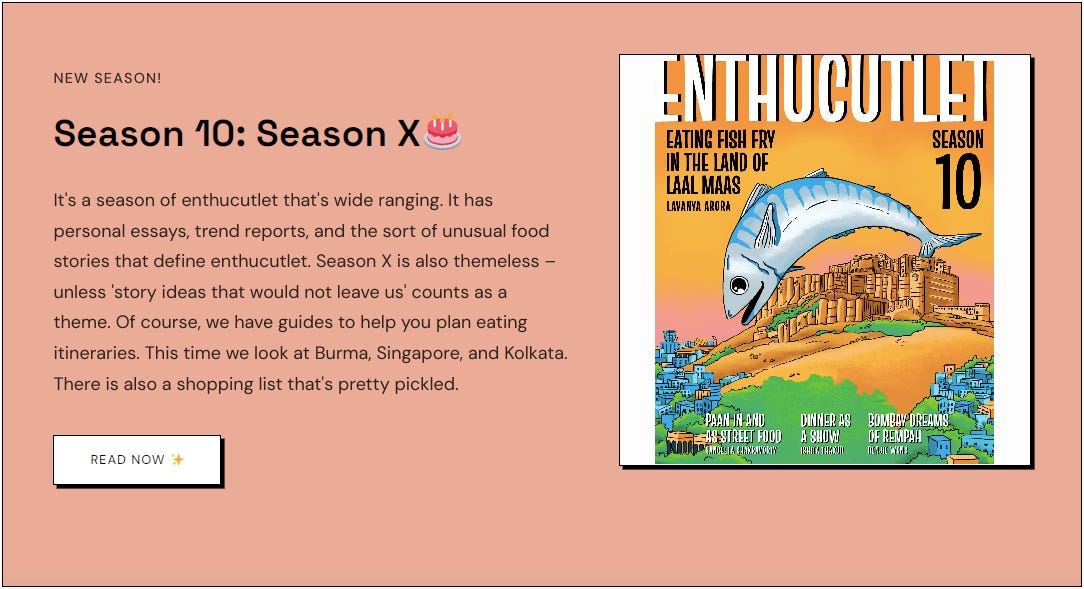
So, whether it’s a story about the design principles of a tandoor in enthucutlet; whether it’s the Independence Day Daawat or the Canteen Classes that bring together India’s brightest hospitality hopefuls; whether it’s the pop ups and bar takeovers with local and foreign restauranteurs and mixologists; for Hunger Inc food is just the vehicle to connect and celebrate the things that bind us.
“The secret is community”
What they continue to espouse is that, as a restauranteur, when you stop thinking about your relationship with your guests in purely transactional terms, you unlock a different level of the hospitality game, which is a neat segue to talking…
3. About their restaurants
“I've learned that people will forget what you said, people will forget what you did, but people will never forget how you made them feel.”
― Maya Angelou
“Pretend that every single person you meet has a sign around his or her neck that says, "Make me feel important." Not only will you succeed in sales, you will succeed in life.”
― Mary Kay Ash
A restaurant can be many things.
It can be a place for comfort. A place for novelty. A place for solace or serendipity. A place to escape. A place for celebration. A place to be seen.
Oh, and also a place to eat.
In a few special cases, though, when done right, a restaurant becomes a place for a point of view. Because special restauranteurs recognise that what they have with a successful restaurant is a captive audience. If you pay close attention when you’re dining at one of these vaunted institutions you can hear what they’re really trying to say.
I think what’s allowed Hunger Inc stand out in an increasingly crowded field of world class establishments in the country - and what makes them the perfect subject for a Tigerfeathers essay - is that they are in the business of creating restaurants with a point of view on India. For instance, there are lots of amazing places you can visit in Mumbai, especially today, which are trying to say “You could be anywhere in the world when you dine with us - New York, London, Paris, Dubai”. But what The Bombay Canteen asked when it opened its doors in 2015 is “Why would you want to be anywhere else but here?”
It should be apparent that it takes a ton of toil, time and research to earn that point of view. But their claim was that if you tell the story right, an Indian restaurant doesn’t have to be a compromise. It’s a story of India told in “and’s”, not “but’s” - exactly how it should be. The messaging is subtle. It’s not jammed down your throat. And to their credit, if you’re a regular, they’ve probably incepted you with that perspective without you even realising.
Since my first cold email to Sameer and Yash last July, I’ve been to The Bombay Canteen four times (once for dinner with my boys from school; another time for dinner and drinks for friend’s birthday; once for a Filipino food pop-up with my cousins; and once to show around a friend visiting India from the US for the first time). I’ve been to O Pedro once (for another pop-up), Veronica’s twice, and Papa’s once for my then-fiancé-now-wife’s birthday (ethically securing my spot FYI).
Not once did anyone say ‘let’s go out for Indian food’, or ‘let’s go out for Goan food’, or ‘let’s get disappointed when we don’t get a spot at Papa’s again’. It’s always ‘let’s go to Bombay Canteen’ or ‘let’s go to O Pedro’, because you know what you’re going to get. Inventive food and cocktails, dishes you won’t get anywhere else, served without fuss, consistently delivered in a relaxed setting. Judged against their original mission from a decade ago, they’ve succeeded in pulling ‘Indian food’ out of the narrow box it occupied in a restaurant-goers mind.
And that’s all before you even step foot on the premises. After, is a different story.
In the time I’ve been working on this piece, I’ve tried to pay more attention to what they’re actually doing on site to enhance your ‘experience’. If I’m being honest it’s made me kind of anal about noticing this stuff at every restaurant I’ve been to in the last six months (which my wife says is “a little annoying, actually”.)
With Hunger Inc, their staff really does pride itself on being friendly, approachable and accessible. Browse through the 10K+ Google reviews of any of their four restaurants and notice how many times the word ‘staff’ or ‘servers’ or ‘service’ comes up. Even my most finicky vegetarian friends who sometimes complain about the options at TBC or O Pedro will still happily join in for a night out because their team will make sure you’re having a good time. They pride themselves on delivering that same level of service every time. When you add that to the high bar they’ve set for what’s coming out of the kitchen, you get something special. “People think that restaurant success is about creativity,” says Yash, “but that’s like 10% of it. 90% of the game is about consistency. You’re only as good as the last meal you’ve served.”
For them there are no flukes or accidents when it comes to customer satisfaction. Devang tells me “Everything we do is in service of the ‘Guest Experience’. We are highly intentional about every aspect of the dining experience. For instance, take something really small that makes a difference - if you’ve make a booking with us before, the next time you call, our reservation desk will greet you with your first name (like a friend) because your number is saved on our system. Or take the fact that all of our servers are empowered to do things like give out complementary drinks if they see some of our regulars, or send out a free dessert if they overhear that someone’s having a special occasion, without asking for any prior permission. As long as it’s within reason, they have an open license to be creative, regardless of the cost, if it truly enhances our guests’ experience.”
Accordingly, the Hunger Inc crew expresses their hospitality, not in grand gestures, but in little acts of attentiveness. Like turning the volume down if they see you glance up at the speaker a couple of times. Getting an extra cushion for an older member of the party because they noticed someone struggling. Sending you a couple of off-menu items without you asking when it’s clear you’re hosting someone from out of town. Getting you a bowl of some obscure ingredient from the kitchen to try because you said you’d never heard of it before. Knocking the dessert off your cheque if you told them you really weren’t happy with one of the appetisers that evening.
It’s nothing fancy. And to be frank, I didn’t really have the words to contextualise the importance of all these tiny gestures until I read Setting The Table last year. There’s a quote from the book that’s been seared into my brain, because it pops into my head not just when I’m at a restaurant nowadays, but during any business transaction I’m on the other side of:
“Hospitality is the foundation of my business philosophy. Virtually nothing else is as important as how one is made to feel in any business transaction. Hospitality exists when you believe the other person is on your side.”
The staff at any Hunger Inc restaurant make an effort to let you know, through their actions, that they’re on your side. That’s not just a thing that “nice restaurants” do either. It’s also your favourite sev puri-wala tossing you an extra puri to mop up what’s left on your paper plate. It’s the barista at your local coffee shop getting your regular order ready before you’re done paying to save you some time in the morning.
Something odd happens when you’re eating out anywhere and the people making or serving your food make an effort to show that they’re on your team. You feel like you’re on their team too. You become more forgiving of mistakes. You’re more likely to give them a pass for a bad meal. You’re more likely to come back to give them another shot. Conversely, it’s very apparent when a company lets you know that they’re not on your team too (*cough* *cough* most airlines *cough* *cough*).
But, if you’re sure on the same team, you’re more likely to let your guard down. That’s when you start to get comfortable. That’s when a restaurant becomes ‘your restaurant’. That’s when you feel at home.
And that, I suppose, is the whole point of the hospitality business.
For ten years, that give-and-take has helped Hunger Inc’s restaurants become ‘Bombay’s restaurants’. It’s helped that their story has played out in a decade where India was ready for them too.
4. About India
In one of my conversations with the team, Yash showed me a slightly different version of the image you’ll see below. It was part of the slide deck he prepared when presenting the idea for Bombay Sweet Shop to the rest of the Hunger Inc braintrust. It depicts, uh, a lineage of aspirational confectionary that applies largely to the sensibilities of urban India. The biggest difference in his version was that the panel after the picture of the macarons was blank.
Yash’s thesis at the time was that a candy based on the traditions of Indian mithai could come next in that evolutionary chart of desirability. But I think he unwittingly mapped out a pretty accurate evolution of the Indian Consumption Story too, one that reveals why the Hunger Inc story is a case of right idea, right place, right time. This is my spin on how he explained it:
In the old days, Indian sweets like kaju katli were born out of Indian ingenuity and artisanship, and became affixed to traditional Indian celebrations. Then kids in India started pining for bright-and-shiny offerings like Cadbury’s iconic Dairy Milk, which were sold by a company that was quick to navigate the protectionist maze of post-Independence India. Tradition became outdated, because it couldn’t keep up with the times, and tastes moved on.
Meanwhile, the suppression of imported products during the tenure of the License Raj meant that you were always excited when somebody brought back something from the Land of Abroad, like a Hershey’s Kiss.
Post the 90s, after India’s economic liberalisation, when foreign companies (like Ferrero) were welcomed into the Subcontinent for the first time, a Ferrero Rocher became the new aspirational treat. You couldn’t find an Indian occasion that wasn’t dressed in a crinkly gold wrapper.
More recently, as Indian minds have opened up to the world, much like Indian markets in the decade prior, our perspectives have been shaped by the Internet, by travel, and by social media. Enterprising Indians studying abroad and shopping abroad have begun recreating and commercialising their favourite global treats - like the macaron - with perfect fidelity, aided by the local availability of previously hard-to-find ingredients and equipment.
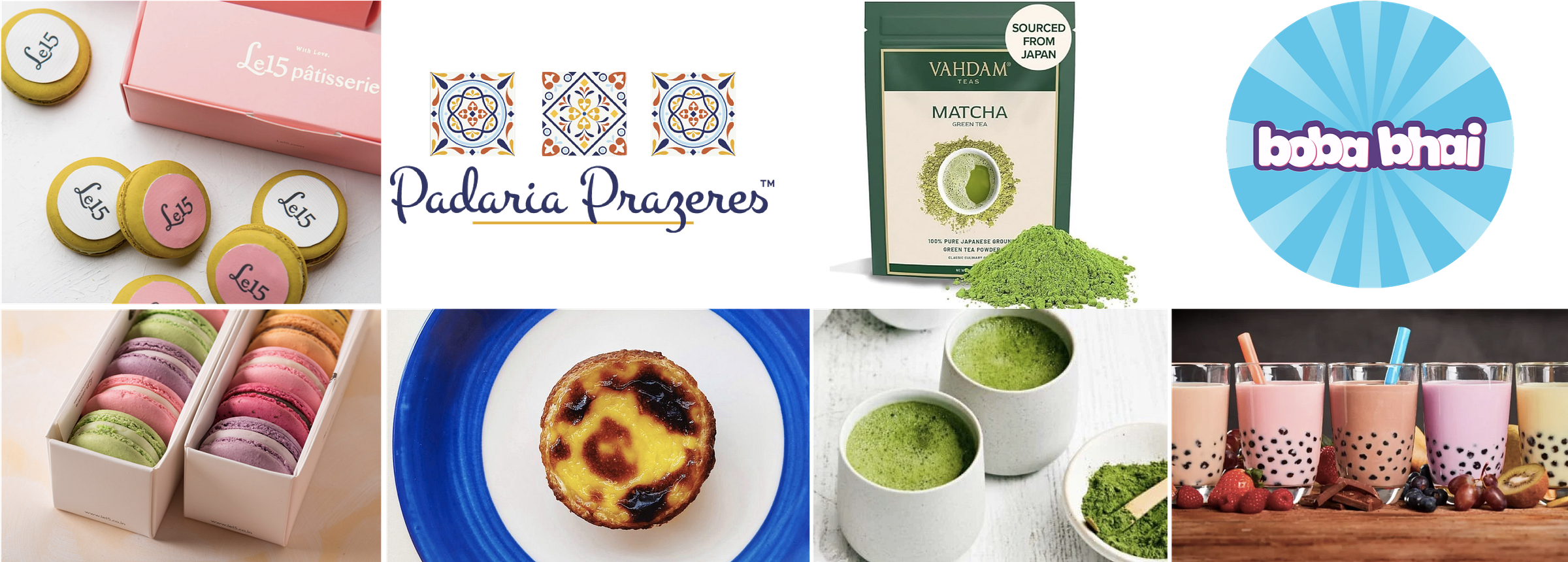
So, the question is, what comes next?
What happens when all the world’s offerings land on Indian shores? What happens when scarce foreign brands become locally ubiquitous? What happens when the novelty wears off of foreign traditions? What happens when everything we see on American or Korean Instagram feeds is available in India at the click of a button (likely in under ten minutes)?
I think our gaze turns inward.
Aside from being very good at what they do, I think what Hunger Inc got right in 2015 is correctly betting that once Indian consumers were satiated by all the bright and shiny objects from overseas, we would become curious about our own tastes, traditions and flavours.
Here’s another way to think about it. I once heard Rory Sutherland (Vice Chairman of Ogilvy) articulating a similar thesis, suggesting that ‘a trend is not a trend, it’s a vector’, meaning that a trend in one direction will usually create a vacuum for a trend in the other direction. Think of the resurgence of vinyl in the age of digital music; thrift shopping in the age of fast fashion; digital detoxes in an era of constant connectivity, and so on. It’s like the recoil of a gun. The trend itself creates the condition for the counter-trend.
When it comes to India, I think you can make a case that we’re on a century-scale pendulum shift from ‘foreign made infatuation’ towards ‘local pride’. It makes sense, right? If you can get everything everywhere, you might then be drawn to what we do best here. Given that we’re 25% of the way through this century, you can already see this manifesting in all sorts of ways.
Indian craft alcohols are having a moment.
Indian speciality coffee brands are eating Starbucks’ lunch.
Indian startups are invading territory that was previously the exclusive domain of foreign counterparts.
Indian traditions are being branded and repackaged in modern garb.
Monolithic Indianness is being replaced in the mainstream by a more nuanced appreciation of India’s diversity, both in India and abroad.
So, if you’ve been paying attention to which way the wind is blowing, the Hunger Inc story makes perfect sense. We are in the midst of a return to Indic curiosity. With it comes a willingness from Indian (and global) consumers to give Indian entrepreneurs, artisans and brands a chance to charm our hearts and wallets. It’s a shift away from the automatic deference to foreign things that characterised consumer mindsets here around the turn of the millennium.
We’ve lived through ‘made for India’ and we’ve trumpeted ‘made in India’. This time around the lyrics to the rallying cry seem to say ‘made of India’.
The Indian hospitality industry will have a load to carry as longtime envoys of that message, both at home and abroad. Indian cuisines have a real chance to become a source of national ‘soft power’ in the years to come. If you’re a chef or restauranteur, there’s never been a better time to tell your story. There’s never been a better time to return to your culinary roots, to the flavours of your childhood, to your most cherished food memories, to rediscover lost ingredients and forage for inspiration in your ghar ka khana. As a ~foodie~ it’s been heartening to see that in Mumbai alone some of the best culinary minds in the country have been busy doing just that.
Ten years ago it’s hard to imagine any of these places existing. The market just wasn’t ready. The dine-out crowd was still making it’s way through the flavours of the world - Japanese, Italian, Thai, Korean etc (and the likes of McDonalds, KFC and Domino’s in the generation prior). That’ll still continue to be the case, of course. The best global fare will continue to find its way into restaurants in India, reproduced faithfully by savvy entrepreneurs and increasingly skilled and well-travelled Indian chefs. These offerings will become more eclectic (dim sums, tacos, croffles?), accessible (QSRs, pop ups, tasting menus) and far reaching (Peruvian, Spanish, Cambodian, Philipino etc) as Indian diners swap out home cooking with more meals from outside.
It means the vacuum in ‘the other direction’, will also need filling; with food, flavours, and produce that is local, seasonal, and regional; with some of the best ingredients in the world - cheese, chocolate, coffee, honey, dairy, spices, whatever - that are being made right here on the Subcontinent. We have a billion homes that all do things a little differently in the kitchen, it’s going to be cool to see those traditions being given a share of the spotlight. It’s taken a couple of decades, but it finally feels like, when it comes to food, India is ready for India.
I will caveat that statement (and this entire section) by saying that it is inherently tricky and ironic to talk about ‘India’ as a whole when it comes to broad sweeping trends. India is a mishmash of (at least) 28 different countries living across (at least) three different centuries at the same time with vastly different sensibilities, dreams and aspirations. So I cannot speak for India, I can only speak for myself.
I’m excited that the story of food in India is now being told inside out. Not filtered through a colonial lens. Not dumbed down. Not mediated by a Western mouthpiece. I’m looking forward to having my own stereotypes of Indian food challenged and changed. Hunger Inc had a lot to do with kicking off this conversation, no doubt. But the company is also just one part of a changing zeitgeist. It’s one piece of an emerging ‘scenius’, that is touching everything from Indian food, fashion, art, design, and music. As musician Brian Eno once wrote:
"I became (and still am) more and more convinced that the important changes in cultural history were actually the product of very large numbers of people and circumstances conspiring to make something new. I call this ‘scenius’ - it means ‘the intelligence and intuition of a whole cultural scene’. It is the communal form of the concept of genius.
…the reality of how culture and ideas evolve is much closer to the one we as pop musicians are liable to accept - of a continuous toing and froing of ideas and imitations and misconstruals, of things becoming thinkable because they are suddenly technically possible, of action and reaction, than the traditional fine-art model which posits an inspired individual sorting it all out for himself and then delivering it unto a largely uncomprehending and ungrateful world.”
— Brian Eno
The scenius in India’s restaurant landscape is palpable, viscerally so for its most visible contributors. “I’m proud to be part of this new breed of Indian cooks who have arrived on the scene, that are breaking the mould,” says Hussain. “We are curious about the ‘what’ and ‘why’ of Indian cuisine. We question authenticity, but respectfully. We use tradition as a guardrail but not a limitation, breaking it down with care so we can create something new. That, to me, is special. Because it means India is finally opening itself up to interpretation. That’s why Indian cuisine is finally having its moment to shine on the world stage. We should have had it long ago, to be honest, but it’s our own fault that it’s taken this long. We didn’t take pride in our own food, in our own heritage - how could we expect anyone else to? But that is changing in a big way. We are digging deeper into our own cuisine, and now the world can truly appreciate what Indian food really is.”
Hunger Inc's original mission was to celebrate India and its traditions, using food as their canvas. Their success hints at a broader opportunity: that the same blend of reverence for tradition, creative innovation, and uncompromising execution could probably be fruitfully applied to other realms of Indian culture too - a ‘Hunger Inc-for-X’, if you will. Founders embarking on this path would be betting on the same thing that the Hunger Inc team understood a decade ago: that India's cultural inheritance, when viewed through a contemporary lens, becomes an inexhaustible wellspring of creative opportunity.
28. Closing Thoughts
If you’re still reading this, you’re probably sick of me. So am I. So, for dessert, I’m going to leave you with three thoughts - one is about the future of Hunger Inc, the other is about the founders, and the last is about the company’s legacy, ten years into its journey. Neither are from me.
The first is from Radhika Misra, who, by her own admission, has simultaneously played the role of PR consultant, nanny, policewoman, ringleader, and circus clown for the team, lending her services since well before TBC even opened its doors. I asked her what the logical next chapter of the company was. She said:
“The boys always joke that they’re ‘done’ whenever people ask them about opening something new, but they’re always thinking about what’s next. Yes, scaling Bombay Sweet Shop will take a lot of the priority in the immediate future, but their original mission is still as alive as ever. When you think of the story [about India] that Hunger Inc started telling in 2015, there are so many layers that are yet to be peeled back. Mumbai is now very familiar with this story, but the next step is to share their message with the rest of India, and with the rest of the world too. With the Bombay Canteen, and Papa’s especially now, we have the perfect vehicle to spread the gospel of ‘new Indian hospitality’ overseas, and show the world what Indian food is really all about.”
The second is from Pritha Thadani, the co-founder and Creative Director of Please See. Given that she’s seen the entire Hunger Inc story play out firsthand, as both a business partner and comrade, I asked her what it was about Sameer and Yash that made them special entrepreneurs. After repeatedly badgering (re: annoying) her for a better answer than what she’d given already, she paused for a few seconds and finally said this:
“Because they always ask why it can’t be better.
They came back from the US and Singapore and looked at how Indian food was being represented in restaurants, and they wondered why it couldn’t better. If you were a server at an Indian restaurant, they thought you deserved better. They think that for the prices people pay for food in five-star hotels, they deserve better. They noticed that we were giving out Swiss chocolates and Ferrero Rocher on Rakhi, and they thought the tradition deserved better. They do the Canteen Classes on Saturdays because they think Indian students deserve better. They opened Veronica’s in a tiny lane in Bandra because they thought that that neighbourhood deserved better.
To them it’s not just about food. They don’t want to be just another restaurant company. They are telling a story of where they think India should be, and they’re inviting you as a guest to contribute to that story. That’s what guides them.”
The last is from Palash Kulkarni - good friend of Tigerfeathers and creator of All Risk Is Creative. He also happens to be a Mumbaikar, a Bombay Canteen loyalist, and one of the sharpest thinkers on Indian media, history and culture. I asked him if he could put the Hunger Inc story in appropriate context. He wrote back:
"Food is where India's amorphousness becomes net creative - the mishmashing of traditions and practices of the subcontinent has precipitated a cuisine that may be singular in some sense, yet varies vastly internally. Unfortunately, this complexity has made the task of storytelling difficult, without reducing Indian food to the lowest common denominator of Butter Chicken, Garlic Naan and Mango Lassi. It is too complex to be represented reductively as a whole - on a page or a plate. Maybe that’s the point, that the complexity *is* the story. It's no wonder, then, that a company like Hunger Inc has found success by embracing that story for what it is.
It’s like how Salman Rushdie once broke through the world of post-colonial literature. When Rushdie wrote Midnight's Children, it was the first time an Indian writer writing in English didn't attempt to explain India to the West. He didn’t italicise Hindi words or treat them as foreign intrusions into his English prose. Instead, he presented India's contradictions and multiplicities as they were, without apology or simplification. Indian food, too, perhaps needs to be presented with an 'it is what it is' attitude—embracing its complexity rather than diluting it for easier consumption. Hunger Inc's decade-long success suggests that this unapologetic honesty is indeed a winning recipe."
It is that loathing to reduce India to the lowest common denominator that is most conspicuous at any of their restaurants. Visit, and you will find that they’re not just churning out trusty age-old hits. They’re not playing from the same dusty songsheet. Instead they will have you quickly humming along to a new tune. One that sounds fresh, yet feels oddly familiar.
But don’t just take my word for it.
Come to Bombay and see for yourself.
More reading/listening on Hunger Inc; the food business; and the restaurant industry in India
Setting The Table by Danny Meyer
Unreasonable Hospitality by Will Guidara
Masala Lab - The Science of Indian Cooking by Krish Ashok
Flavorwalla by Floyd Cardoz
Chillies and Porridge: Writing Food by Mita Kapur
Kitchen Confidential: Adventures in the Culinary Underbelly by Anthony Bourdain
Chapter 15: What’s your Naatu? by Reshma Sanghi
Make Me a Canteen for My Soul via The Seen and The Unseen with Amit Varma
#NoSugarCoat with Pooja Dhingra - Featuring Yash Bhanage and Sameer Seth
How Hunger Inc battled the pandemic via Forbes
How Hunger Inc is looking to win the race slow and steady via Forbes
'Don't cook to be cool or cute': Floyd Cardoz in one of his last interviews via Forbes
Flavour of the City by Madhavankutty Pillai
WTF is The Restaurant Game? via ‘WTF is?’ with Nikhil Kamath
WTF, Alcohol is a $70B Business in India? via ‘WTF is?’ with Nikhil Kamath
WTF are Craft Beverages? via ‘WTF is?’ with Nikhil Kamath
The ULTIMATE PLAYBOOK for Building a FOOD EMPIRE in India in 2024: Technology, Trends & More! via The Barbershop with Shantanu
How India Eats; by Swiggy and Bain & Co
The Layers of Americano | Alex Sanchez at Projects | Process
The Secret To An Award Winning Bar Is… via the Big Food Energy Podcast
How does The Bombay Canteen tell a story through its food? via the Big Food Energy Podcast
Speak Greasy with Gauri Devidayal & Pritha Thadani | Ep 2.9 | The Power of Storytelling in Branding
RESTAURANT DESIGN IS STORYTELLING by Ayaz Busrai for enthucutlet
The Designing of Dining by INSCAPE
🎙Mastering Restaurant Real Estate with Yash Bhanage via Properties United
Hussain Shahzad: Making spices sing via CreativeMorningsHQ
Chef Hussain Shahzad at Chefs Conclave 2019, WGSHA
Chef Thomas Zacharias at Chefs Conclave 2019, WGSHA
Chef Girish Nayak at Chefs Conclave 2019, WGSHA
Girish Nayak on Food From Here and There
Breaking bread with the Paowalla by Smitha Menon
The Lost Art of Goan Bread Making by Emma Ryan
Why India’s Food Is the Best in the World by Tyler Cowen
Welcome to the Experience Economy by B. Joseph Pine II and James H. Gilmore
India “wants” experiences by Anmol Maini
What The Experience Economy In India Looks Like Right Now by Sai Aditya
Aligning Business Models to Markets by Kevin Kwok
Tock and New Reservation Paradigms by Eli w/ Nick Kokonas
Tickets for Restaurants by Nick Kokonas
Tired of diners who ghost last minute, restaurants in India are charging a reservation fee by Shradha Shahani
The Economy of Desire via MAD
Why Restaurants Fail by Shashank Mehta
The Financial Reality of Restaurant Ownership by Charlie Anthe
Refactoring Restaurants by Byrne Hobart
The Rise of Affluent India via Goldman Sachs
Reinventing the Restaurant Business w/ Sean Feeney on Invest Like The Best
Ronnie Fieg - Building Kith on Invest Like The Best
Nick Kokonas - Know What You Are Selling on Invest Like The Best
The Power of Hospitality w/ Danny Meyer on Invest Like The Best
If you made it all the way here and you thought this was a good use of your time, it would mean a lot to us if you took a couple of seconds to share this post.
ACKNOWLEDGEMENTS
I owe a massive thank you to the Hunger Inc team for trusting me with their story, and to Yash, Sameer, Hussain, Girish and Devang for taking the time to chat with me and being so generous with their insights. Thank you to Niveditha for the tour around Bombay Sweet Shop’s new Kala Ghoda location. A big thank you also to Radhika and Pritha for taking me through the Hunger Inc journey from their respective vantage points. Also a shoutout to my mom and sister - the two best chefs I know - for reviewing early drafts of this piece and helping get it over the line. And finally to Palash Kulkarni for the perfect quote to end this essay - you can find more of his writing here.
ABOUT THE AUTHOR
Rahul Sanghi is the co-founder of Tigerfeathers, where he’s building a time capsule for 21st century India. He previously served as Fintech Lead for Visa in India & South Asia. He began his career as a consultant with KPMG in London, spending a majority of his time helping the firm set up its global enterprise blockchain and crypto asset advisory practice. He moved back to India in 2018 and joined Koinex (then India’s largest cryptocurrency exchange) as Director of Business and Strategy, before assuming the same role at B2B-SaaS startup FloBiz. He most recently spent 2024 working as an Amorphous Blob with O’Shaughnessy Ventures. He doesn’t know why he’s writing this in third person, but whatever.




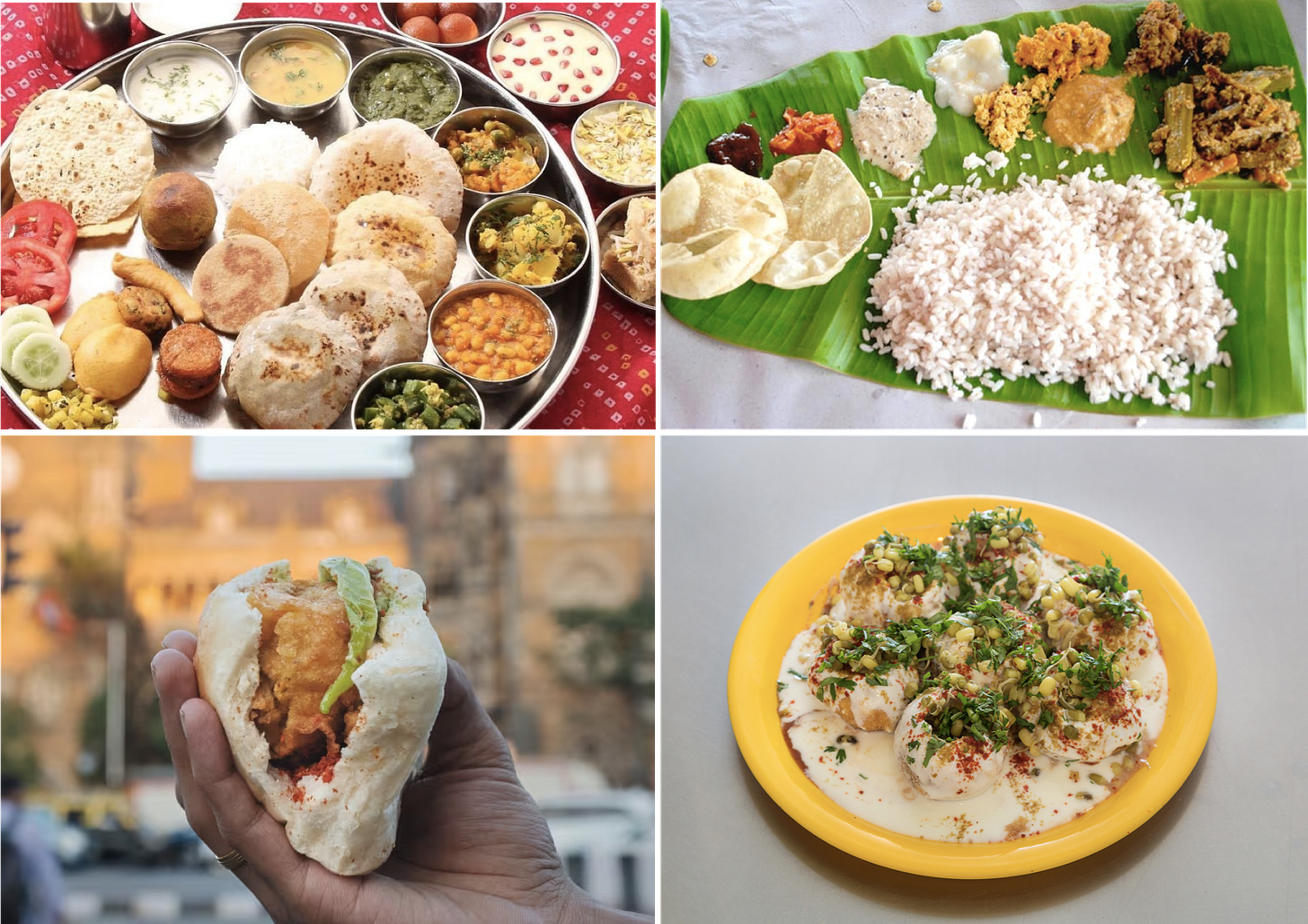
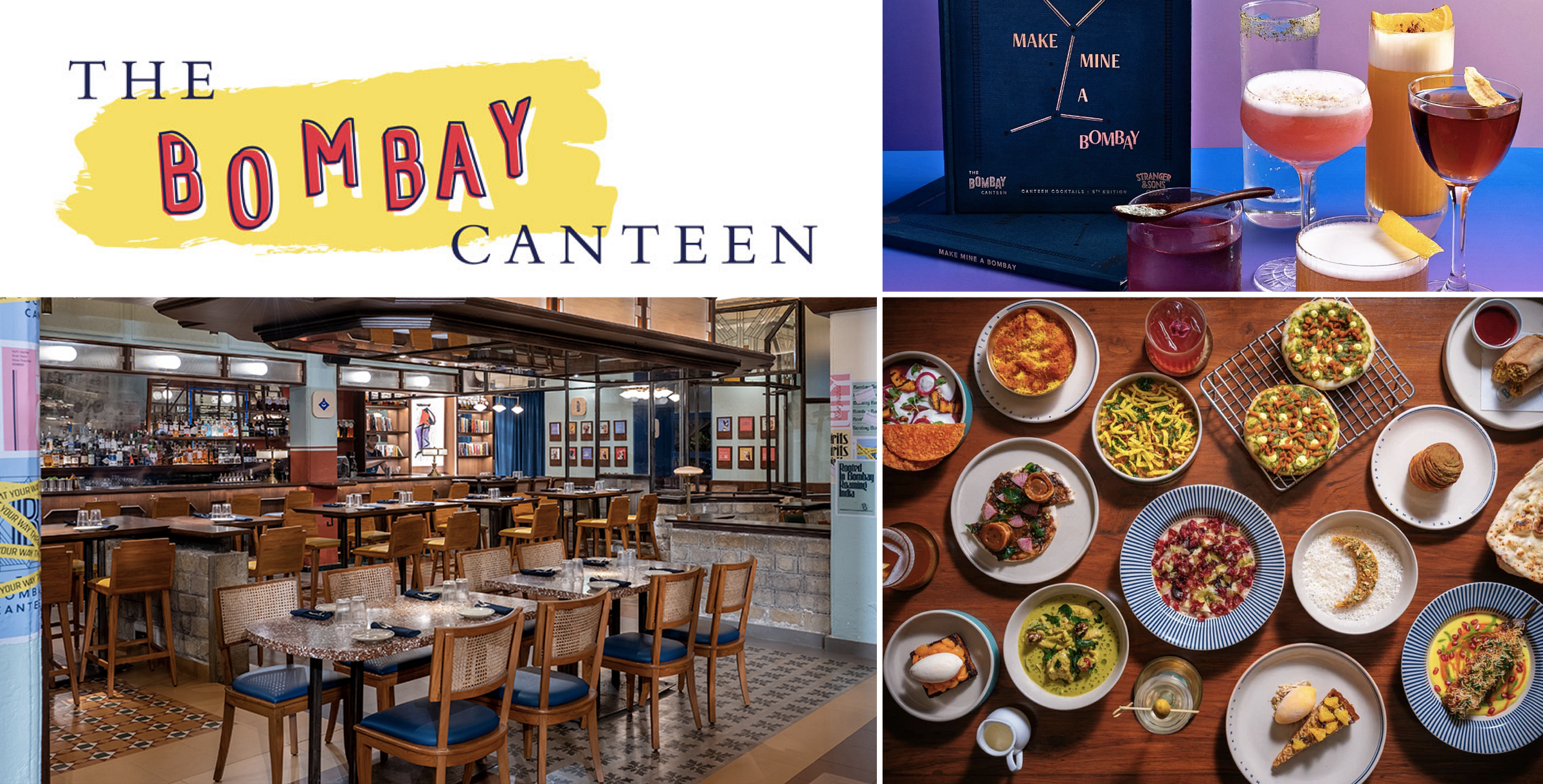



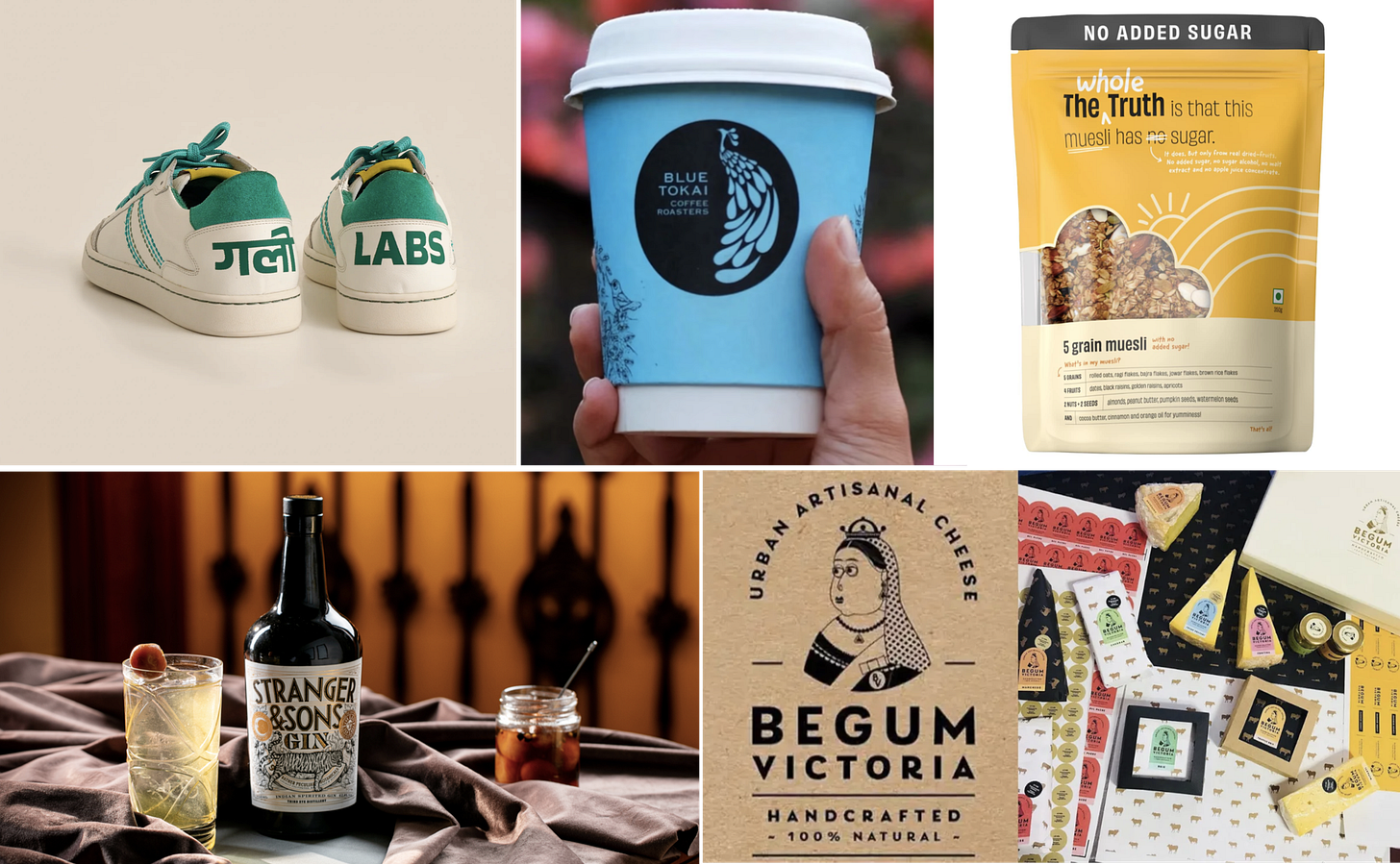

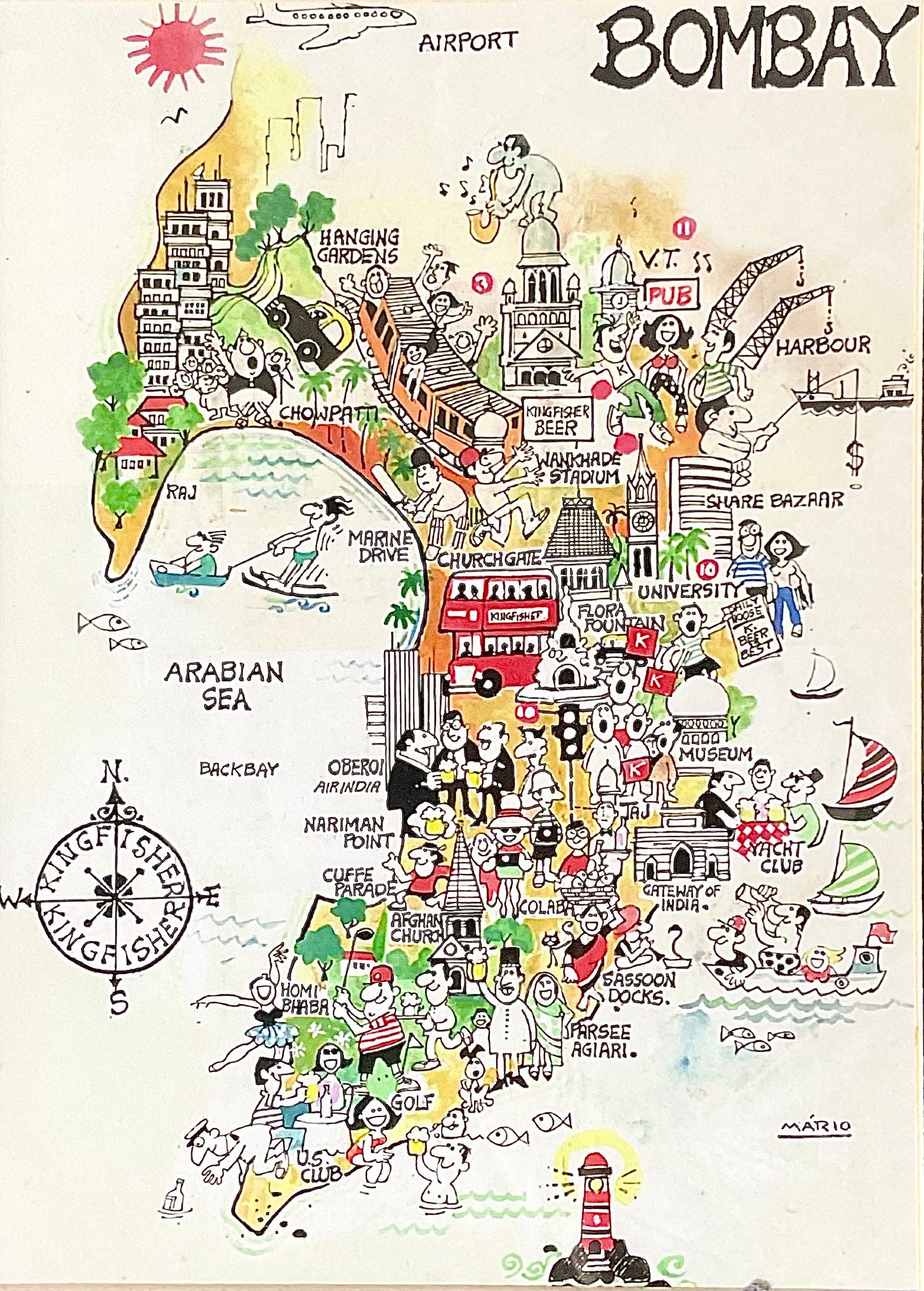
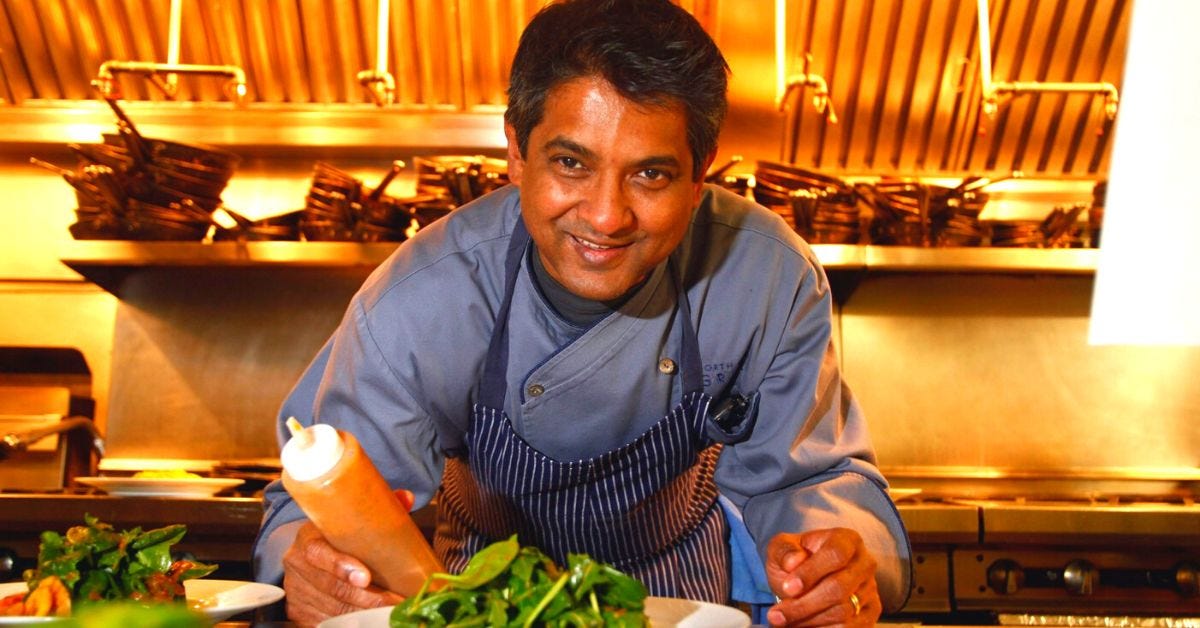


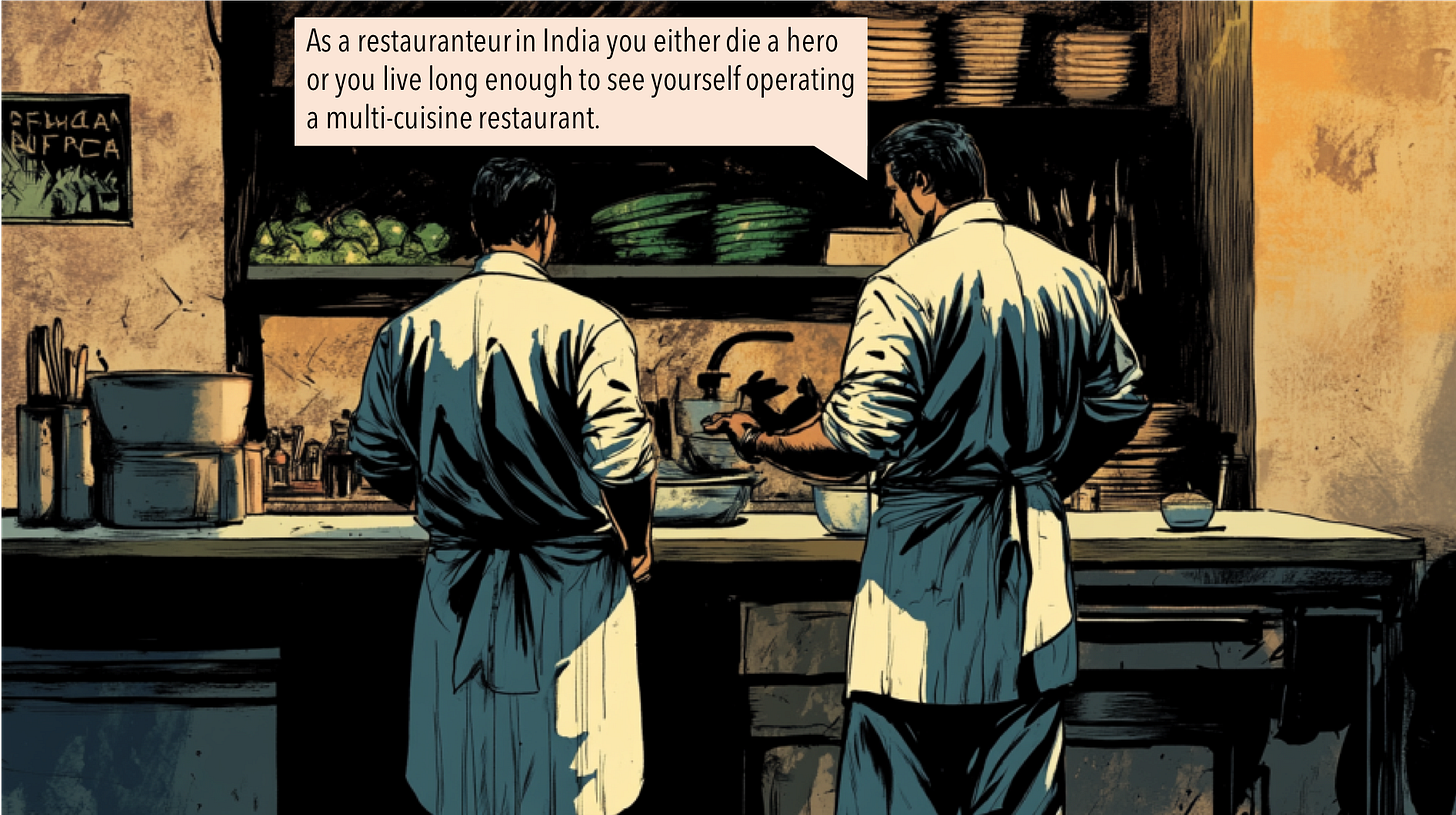
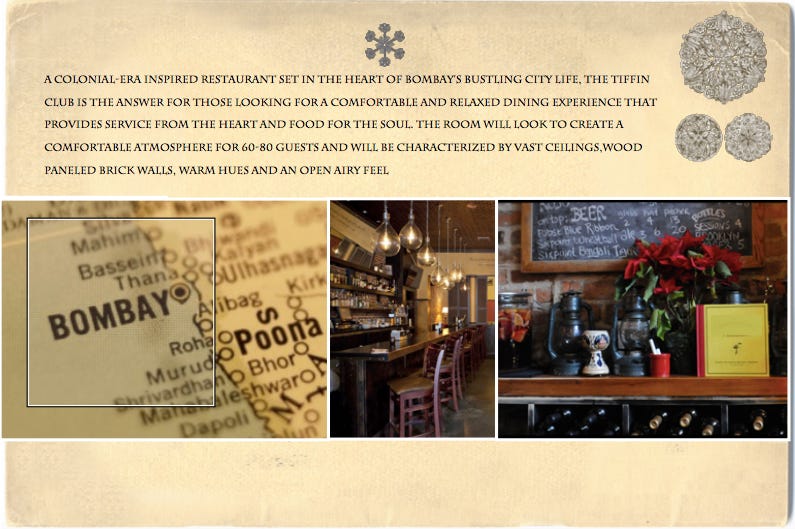

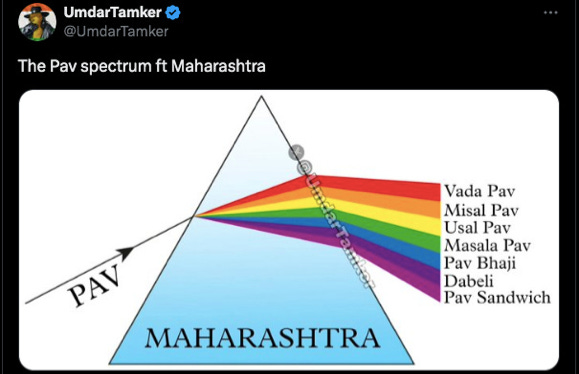

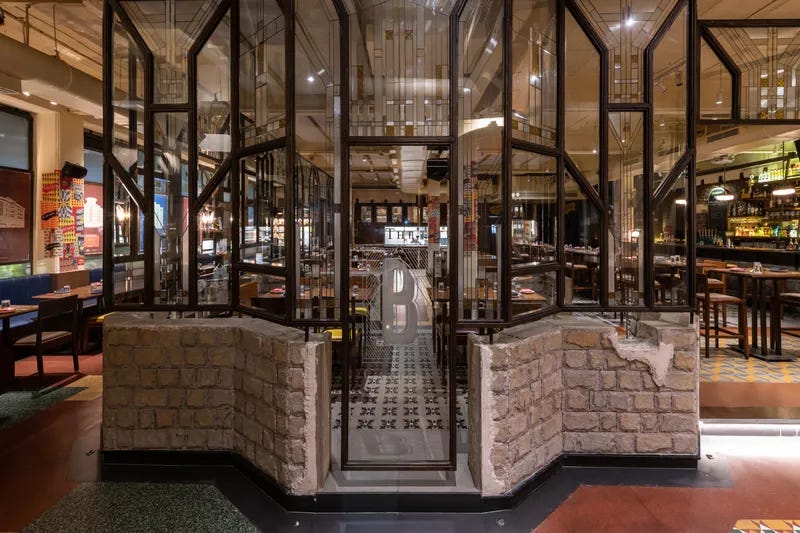

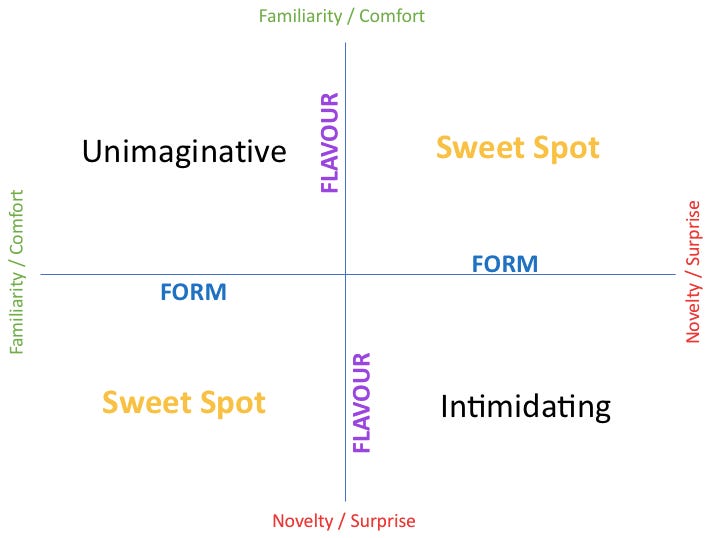

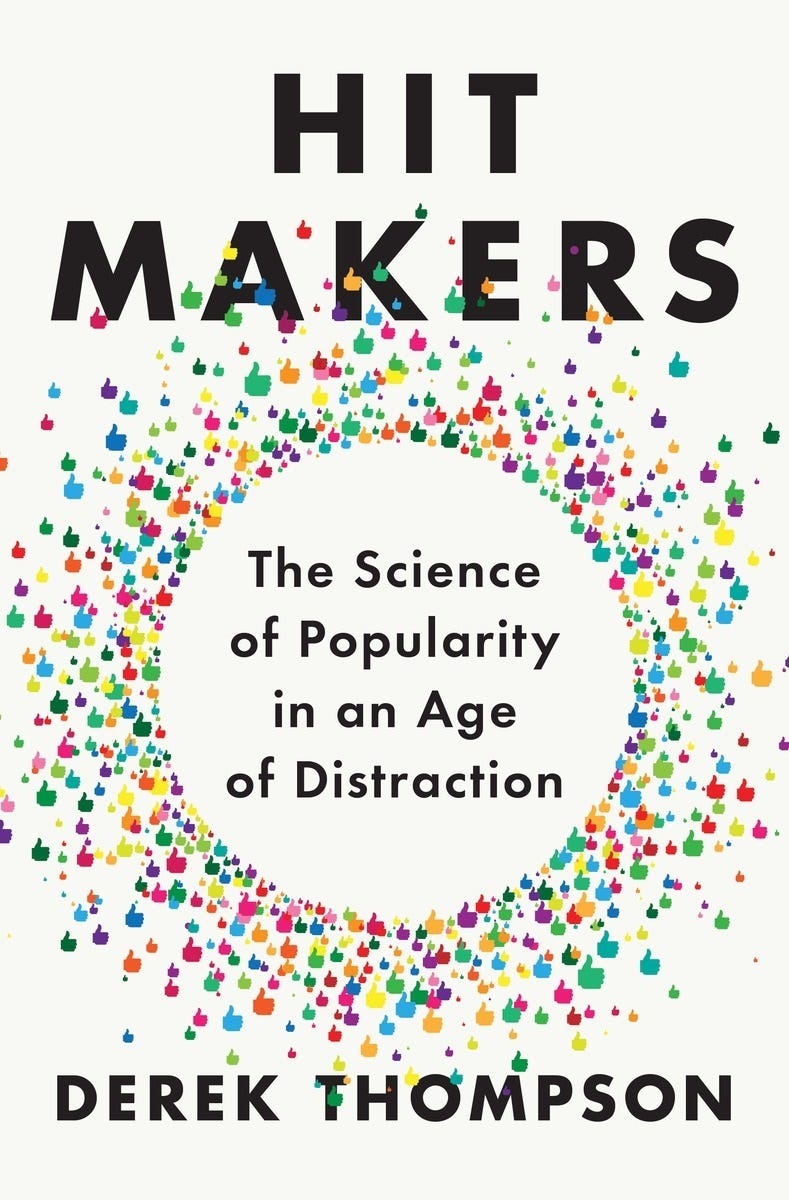

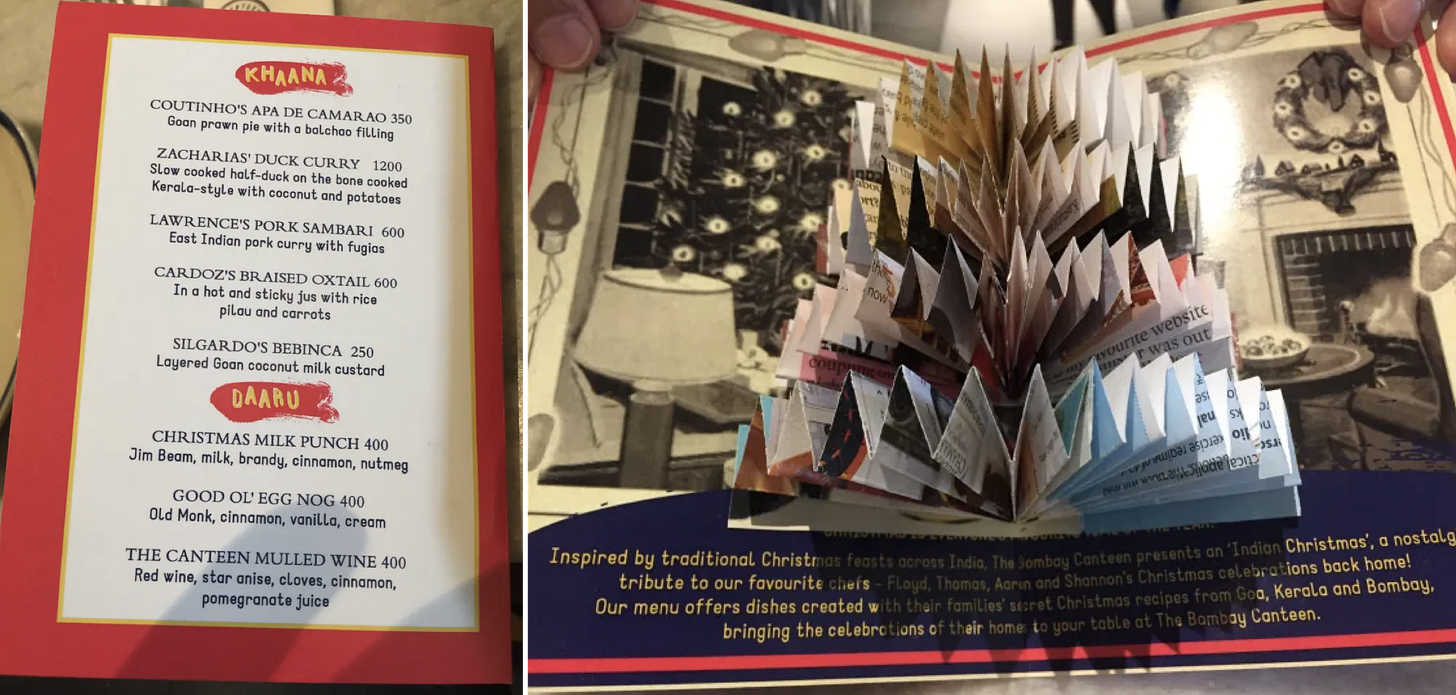
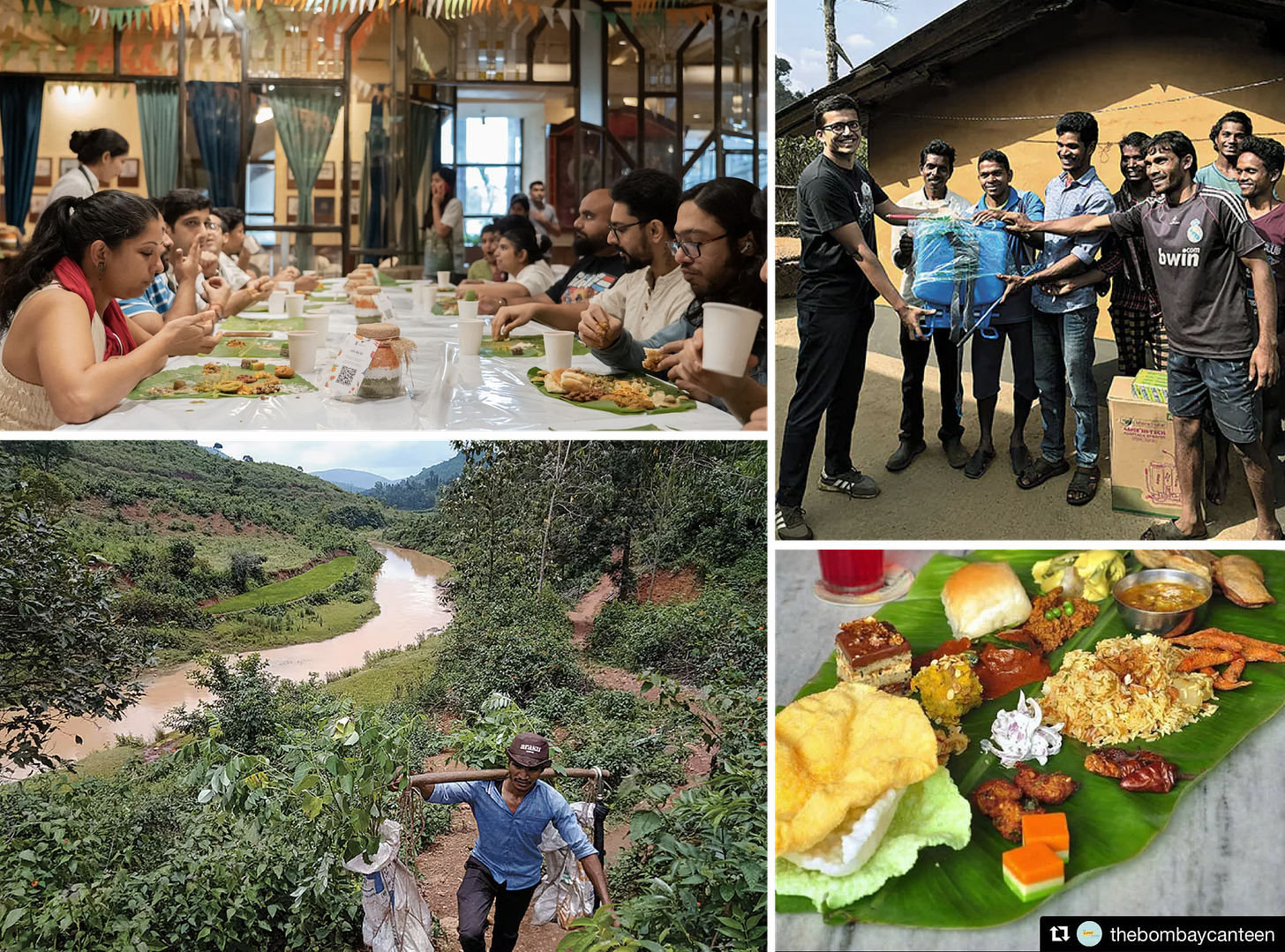
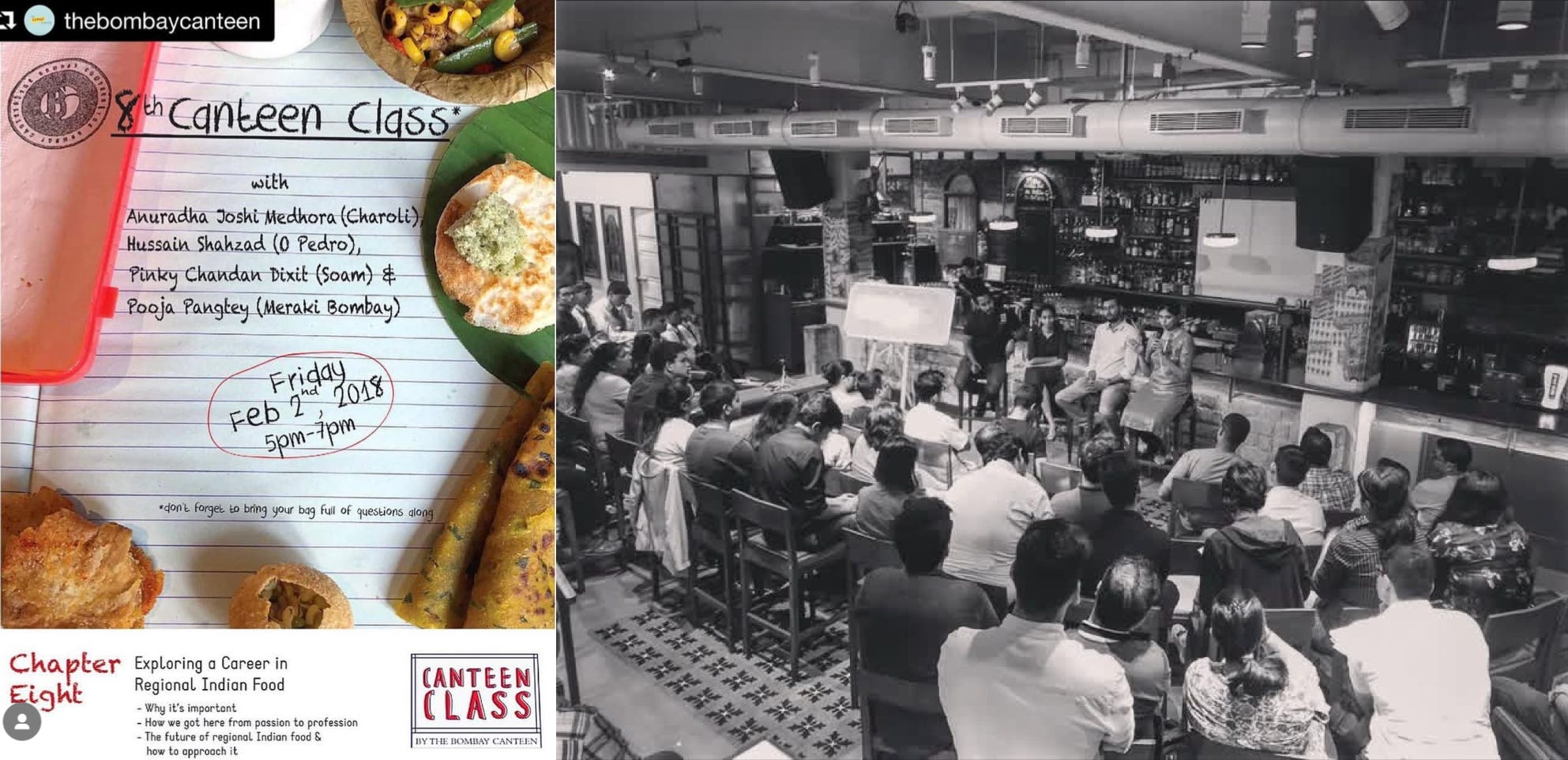
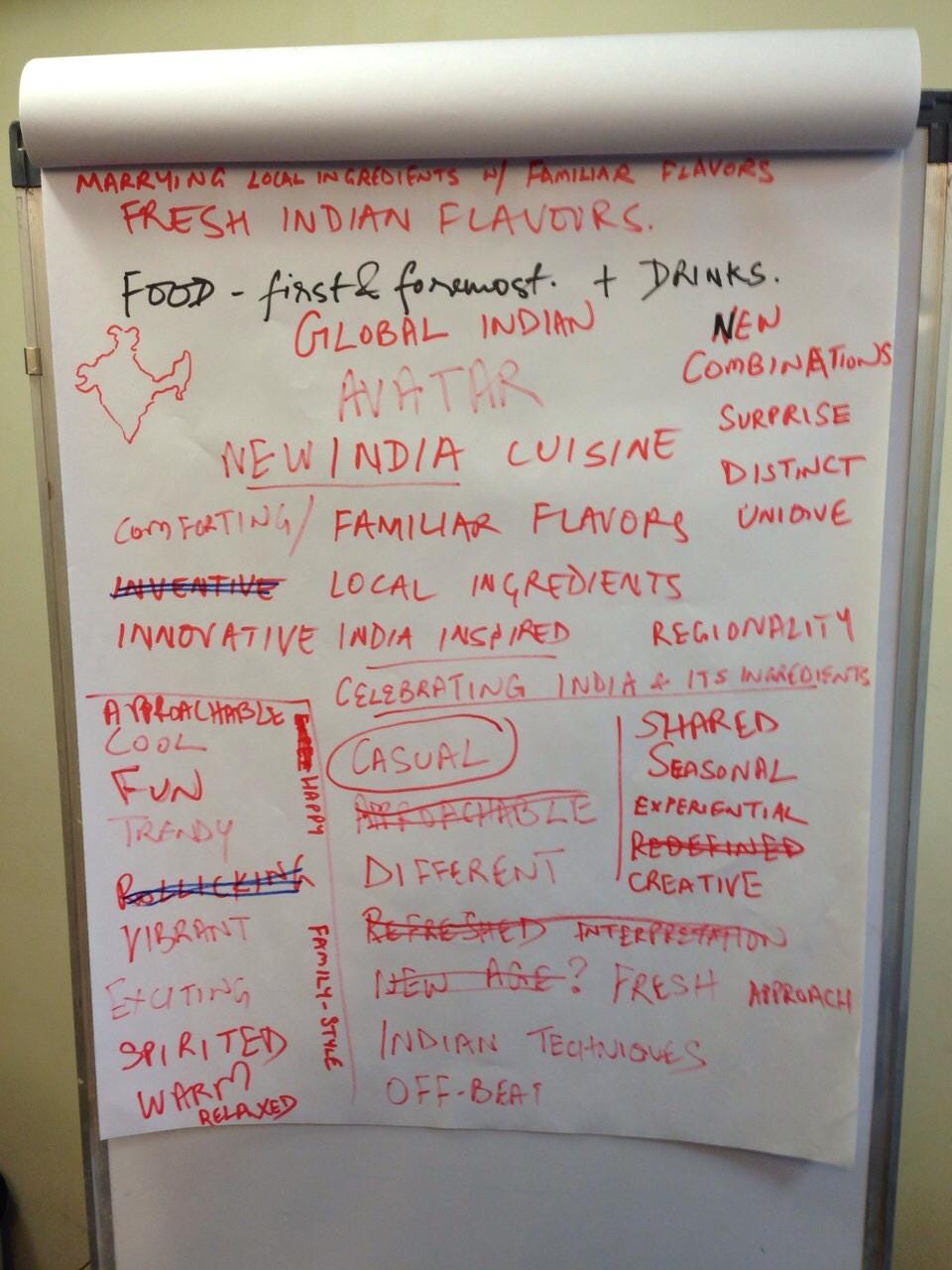



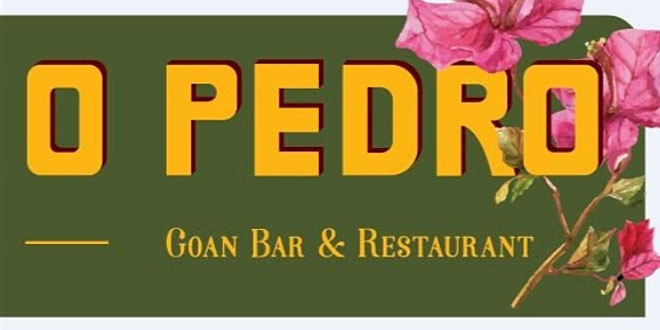
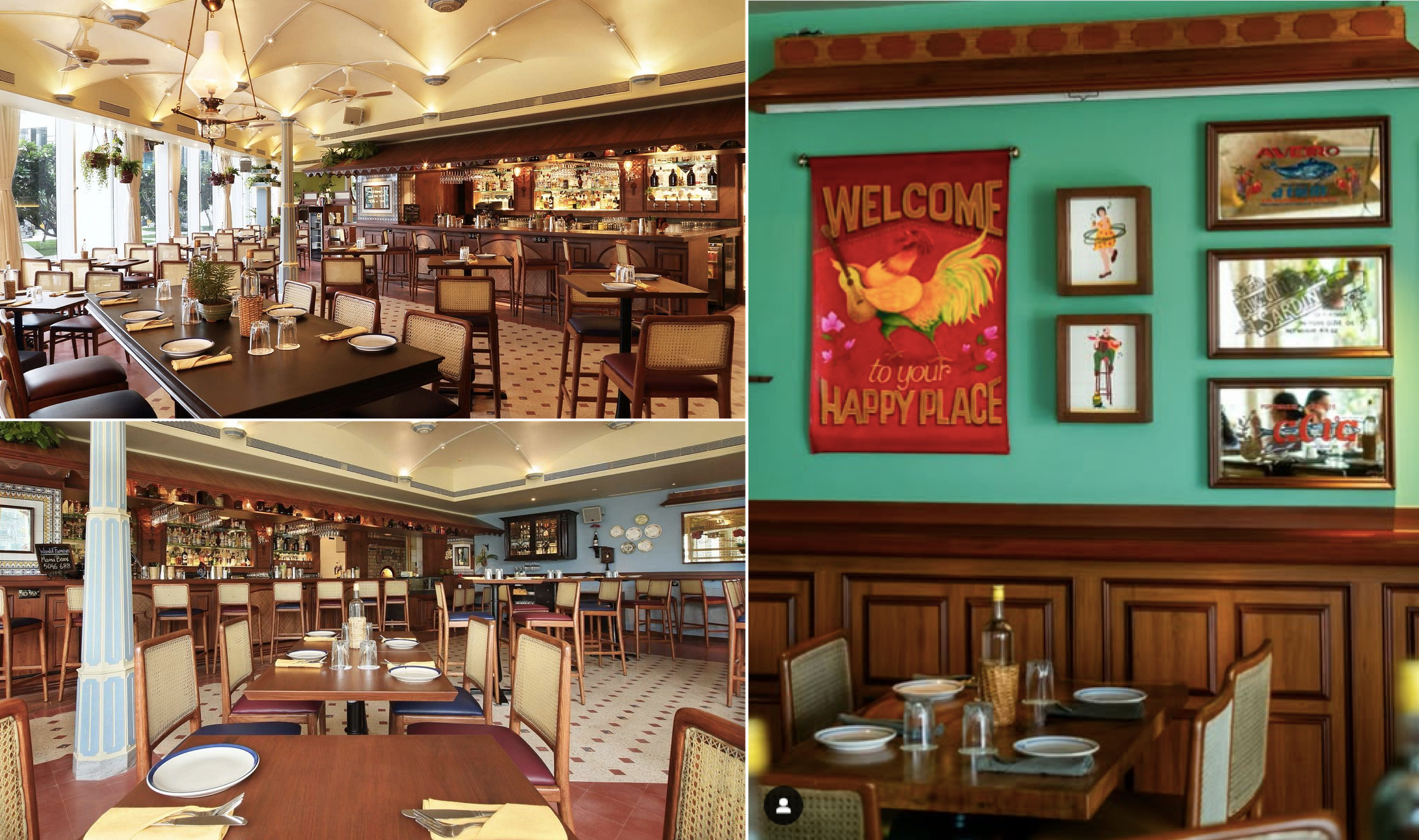
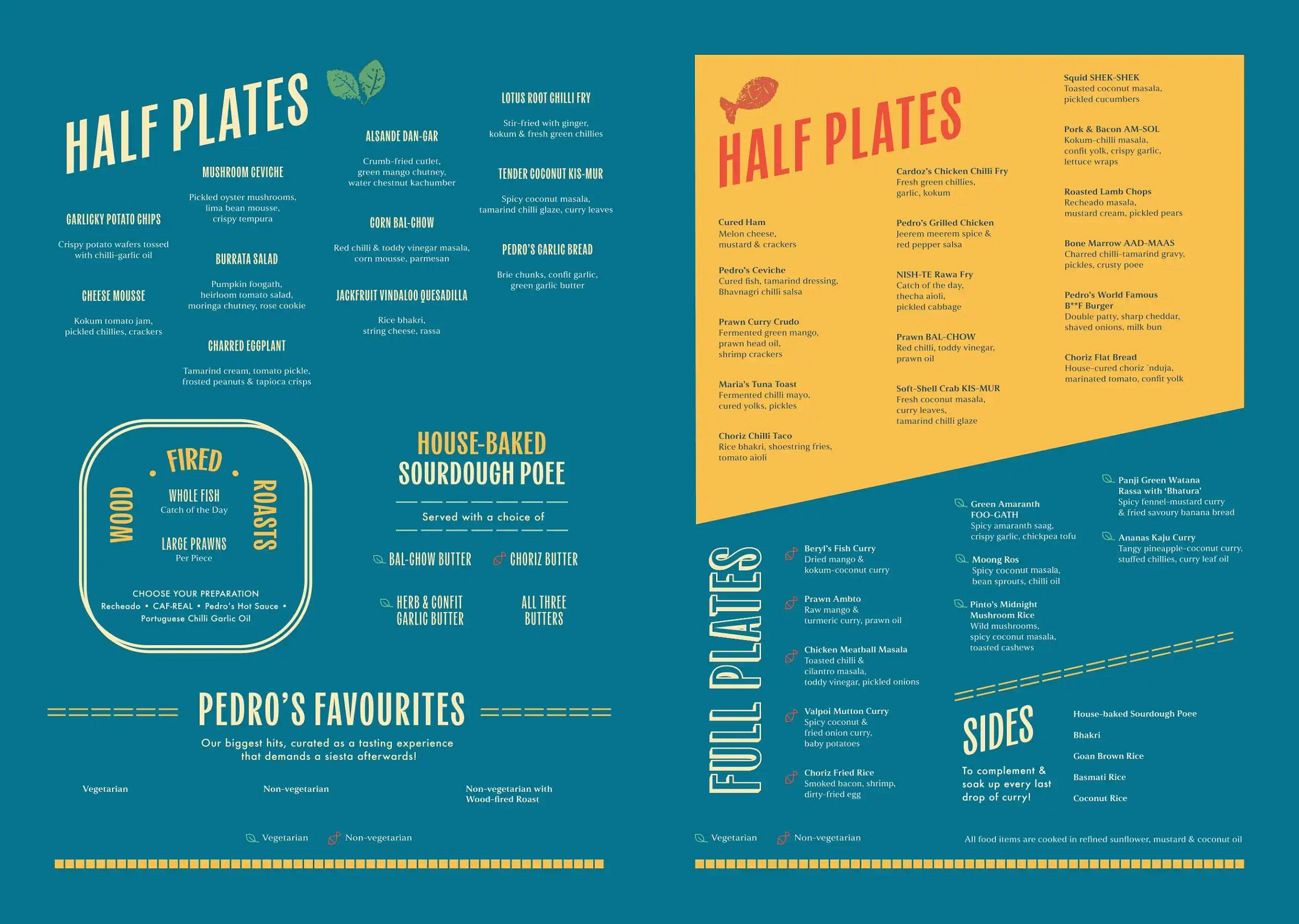




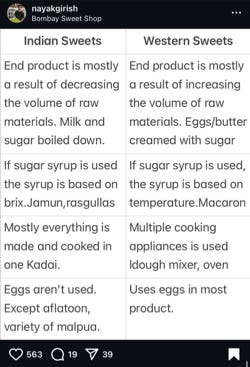
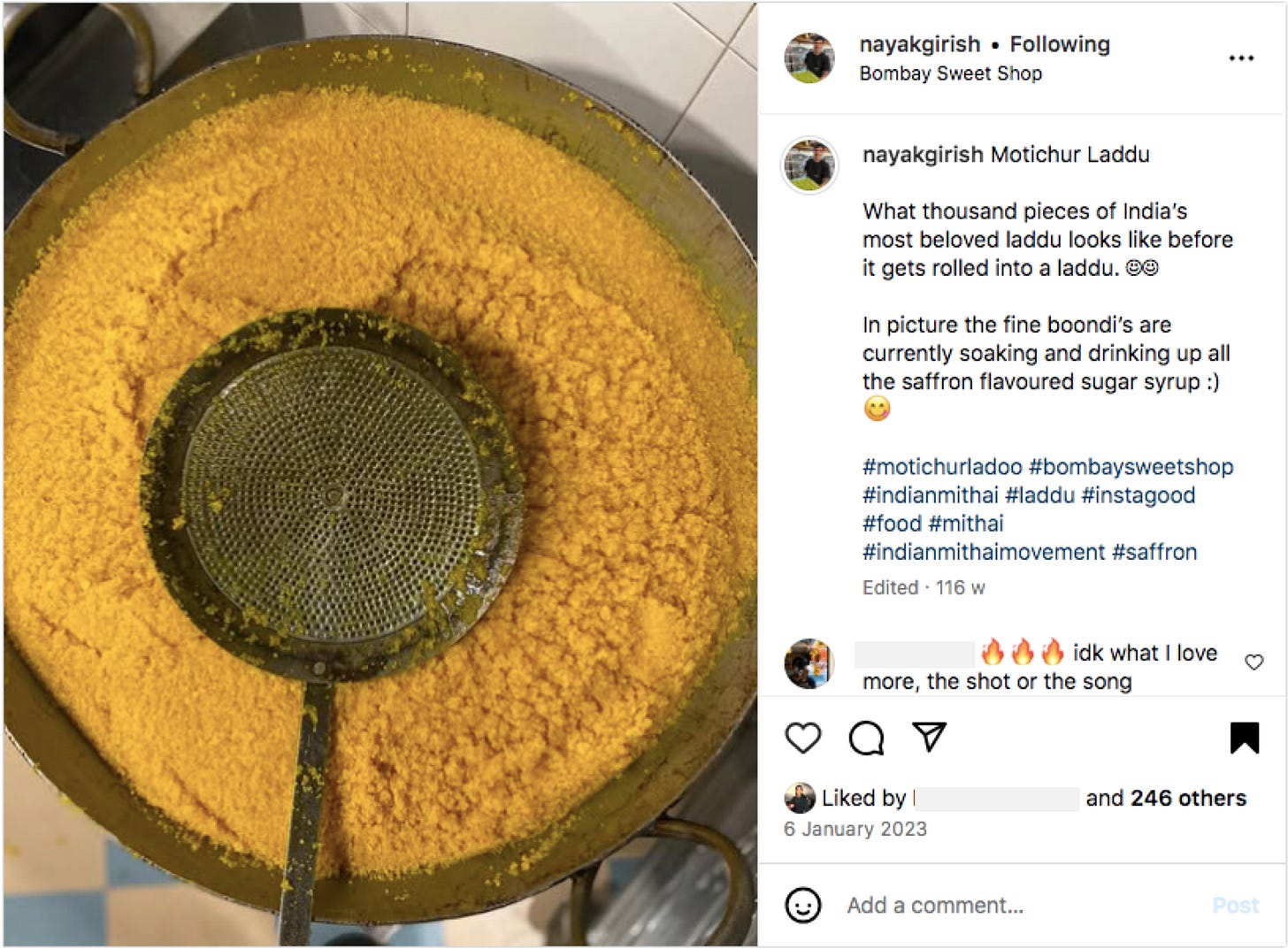
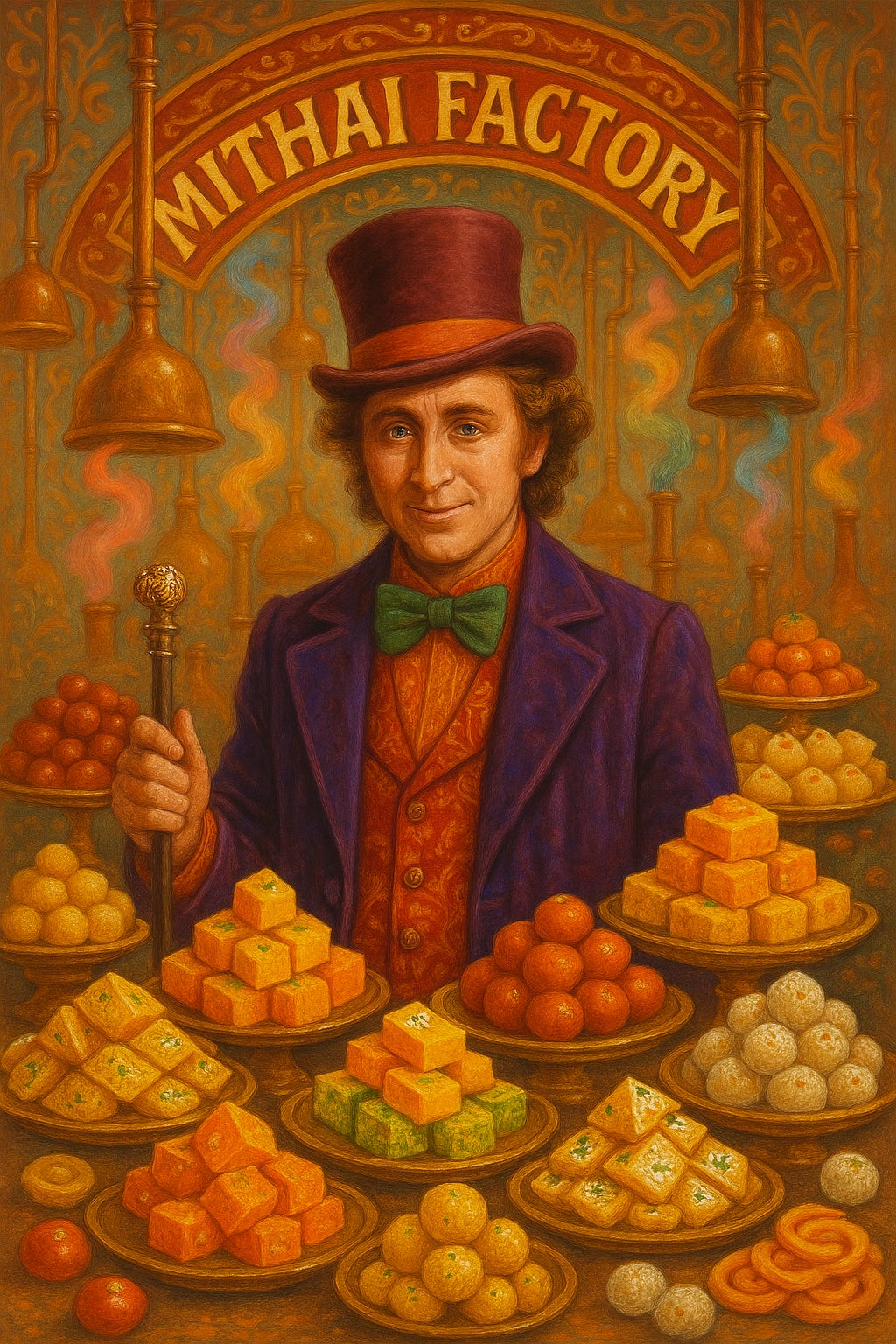

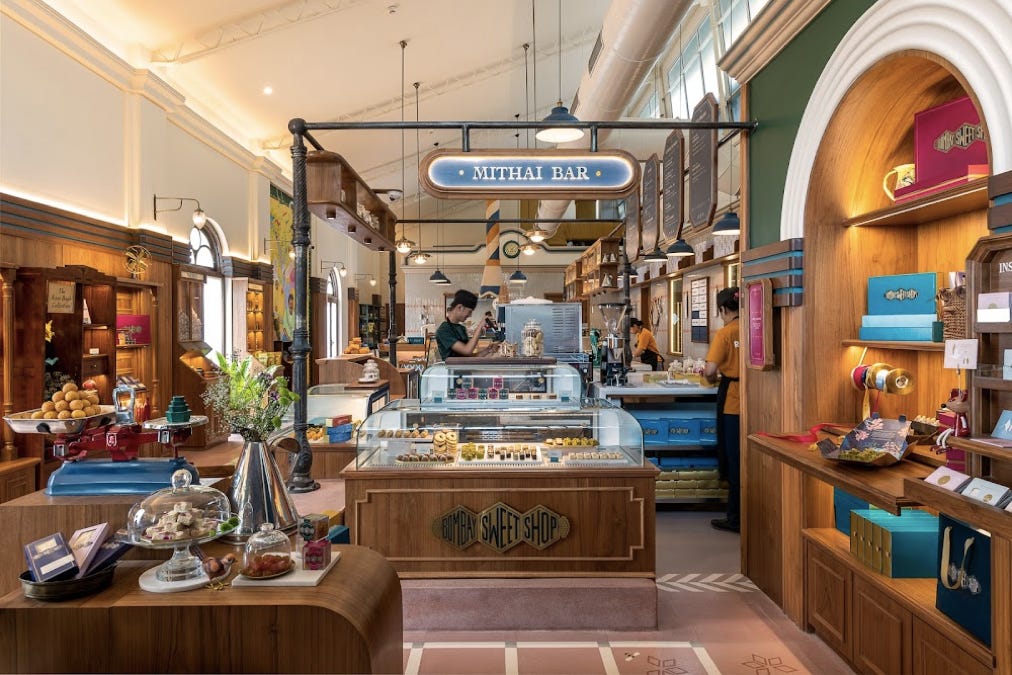
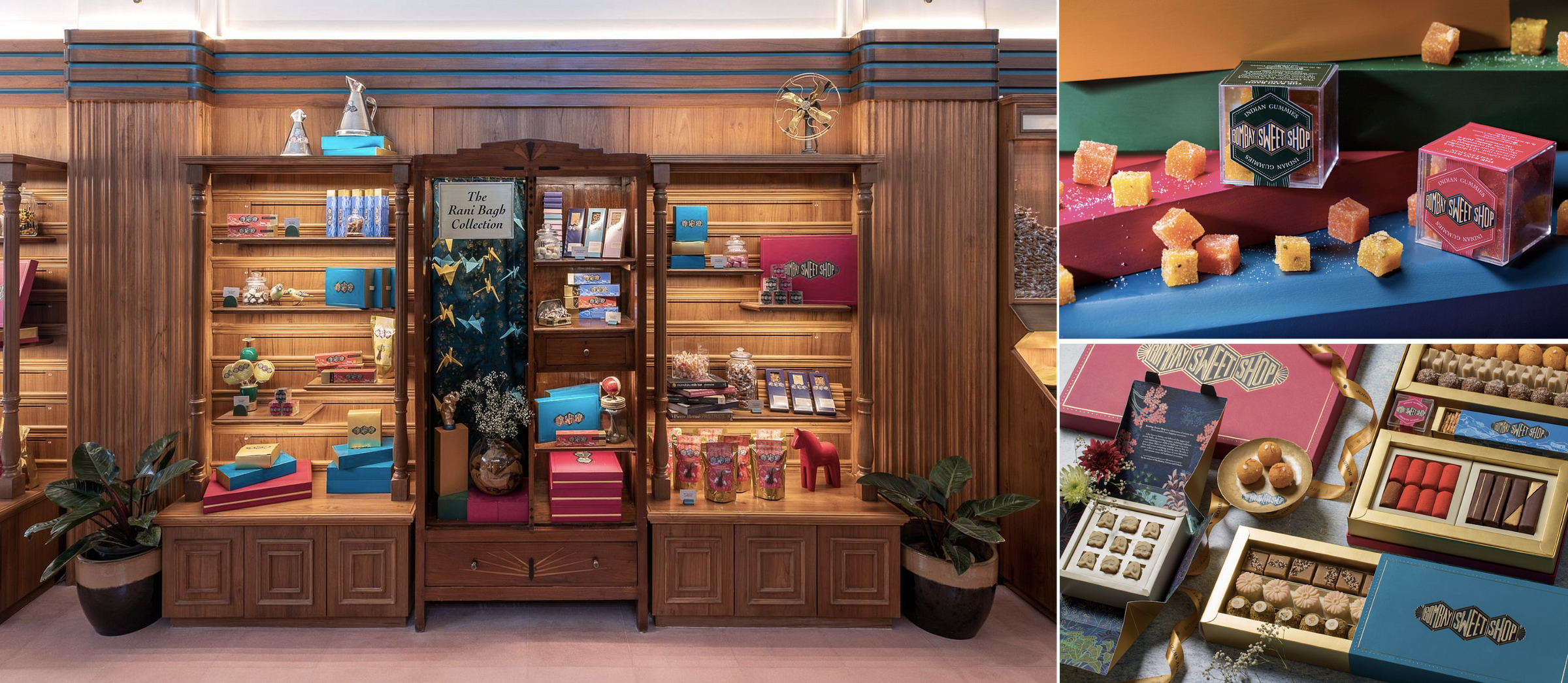
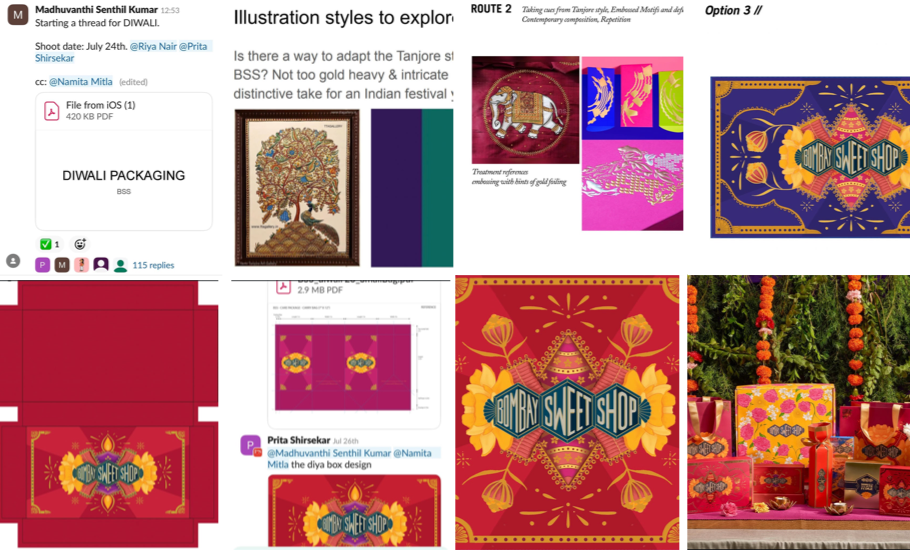

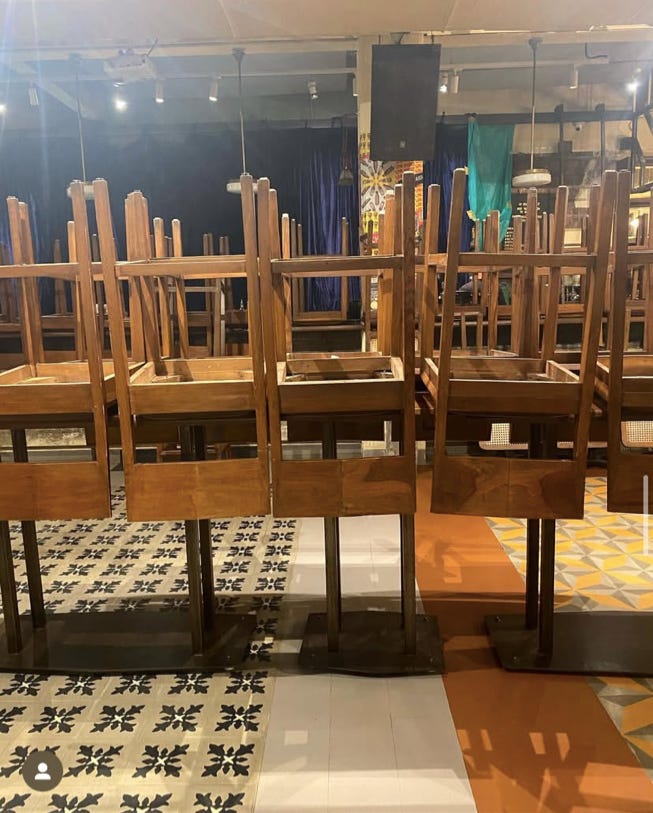





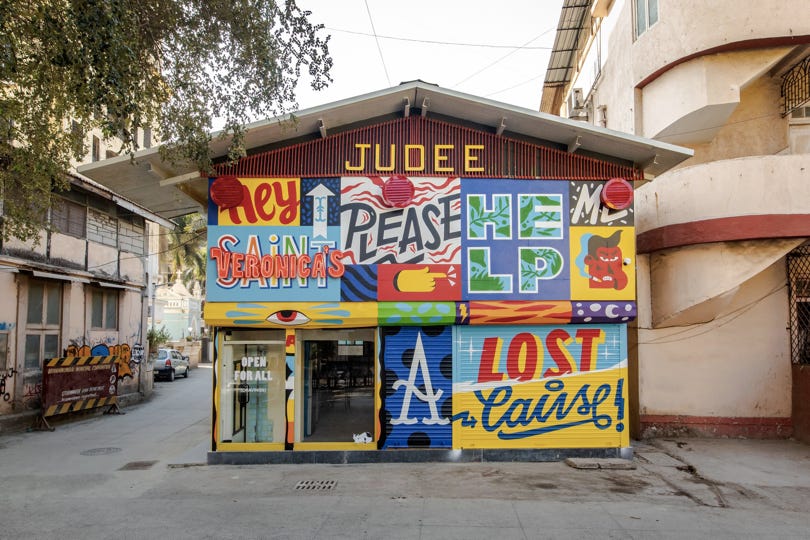
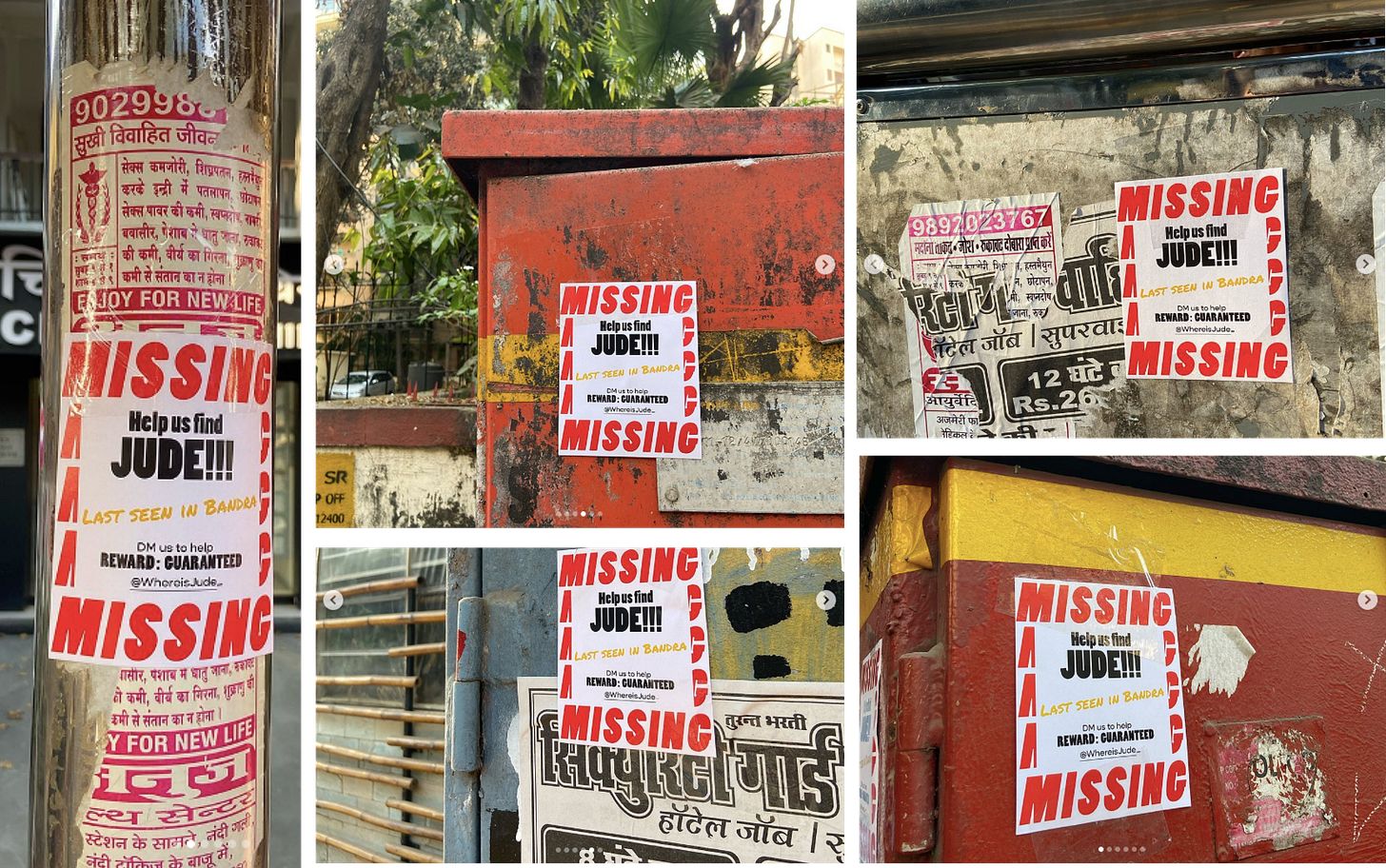

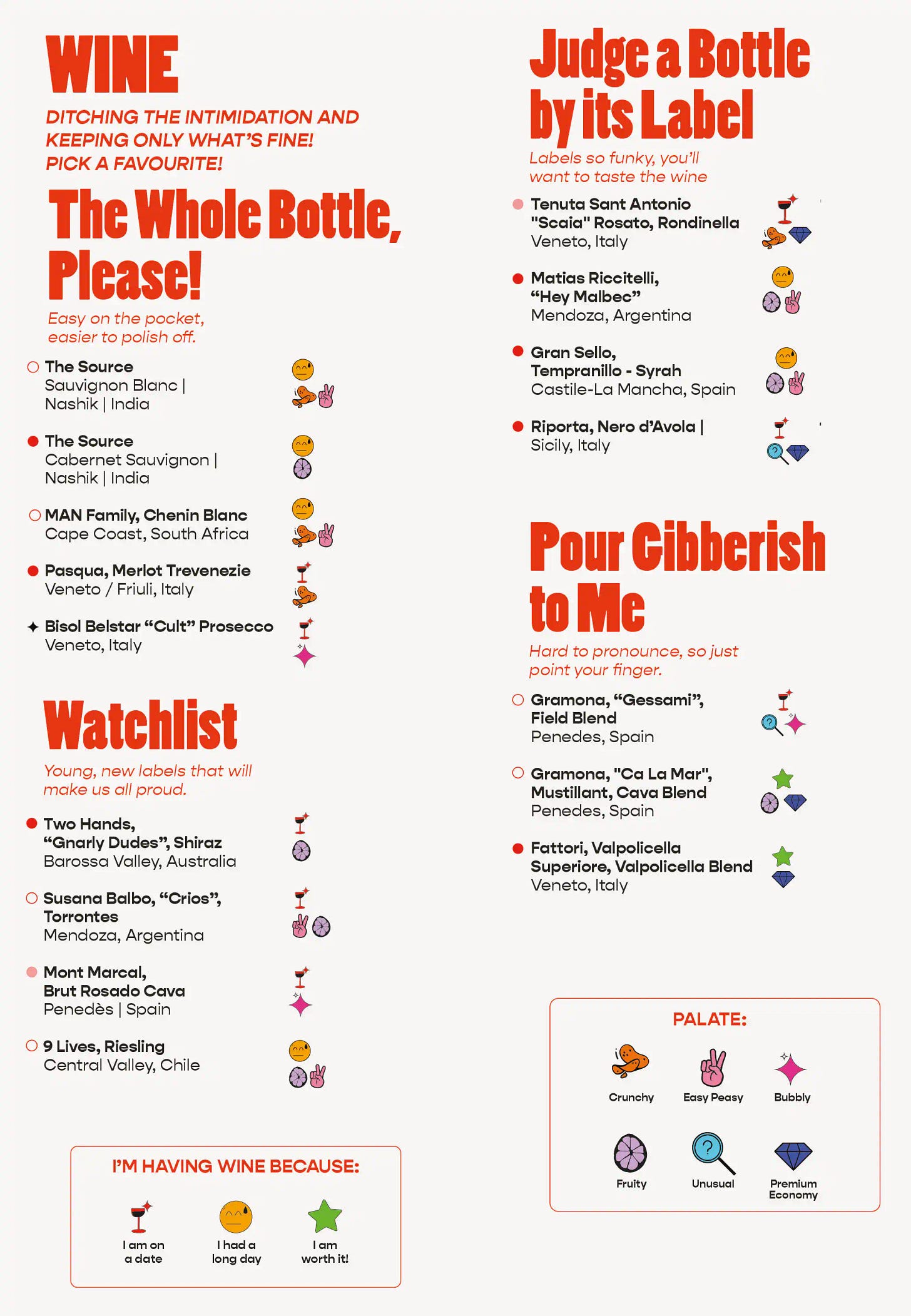

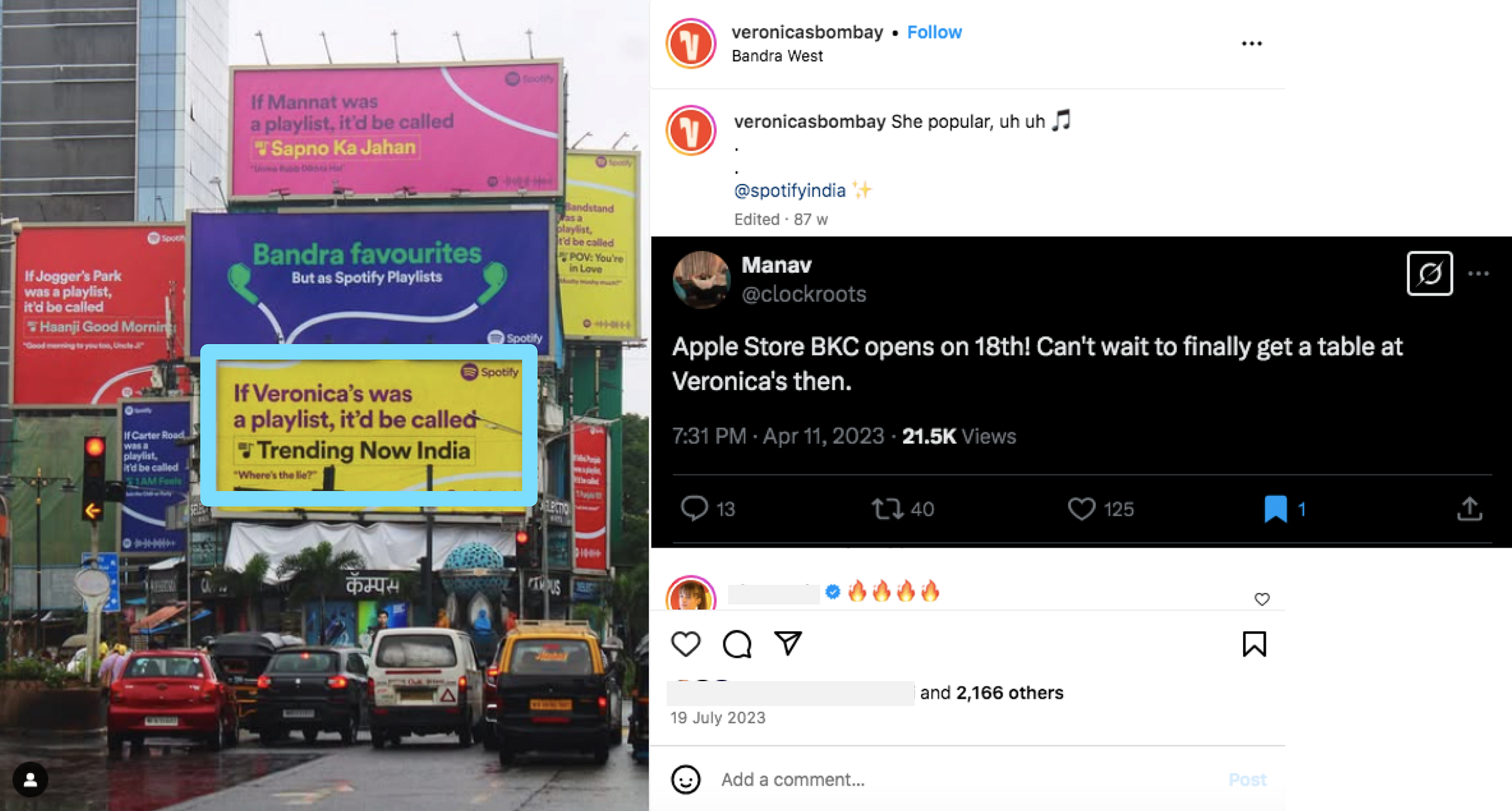

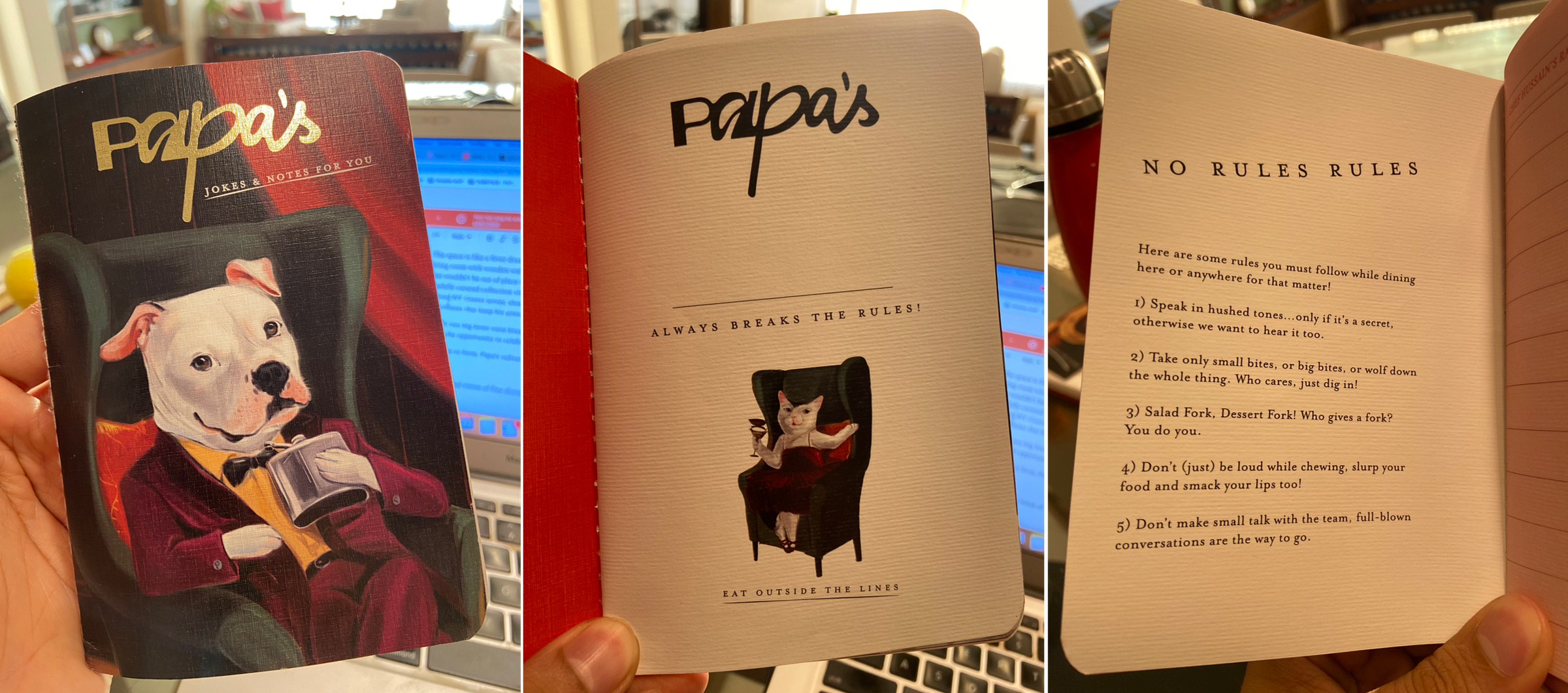

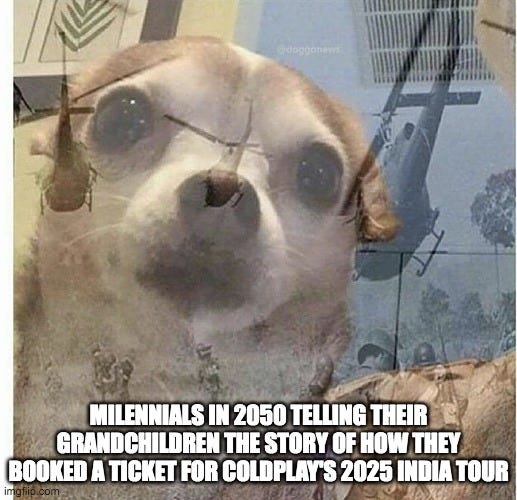

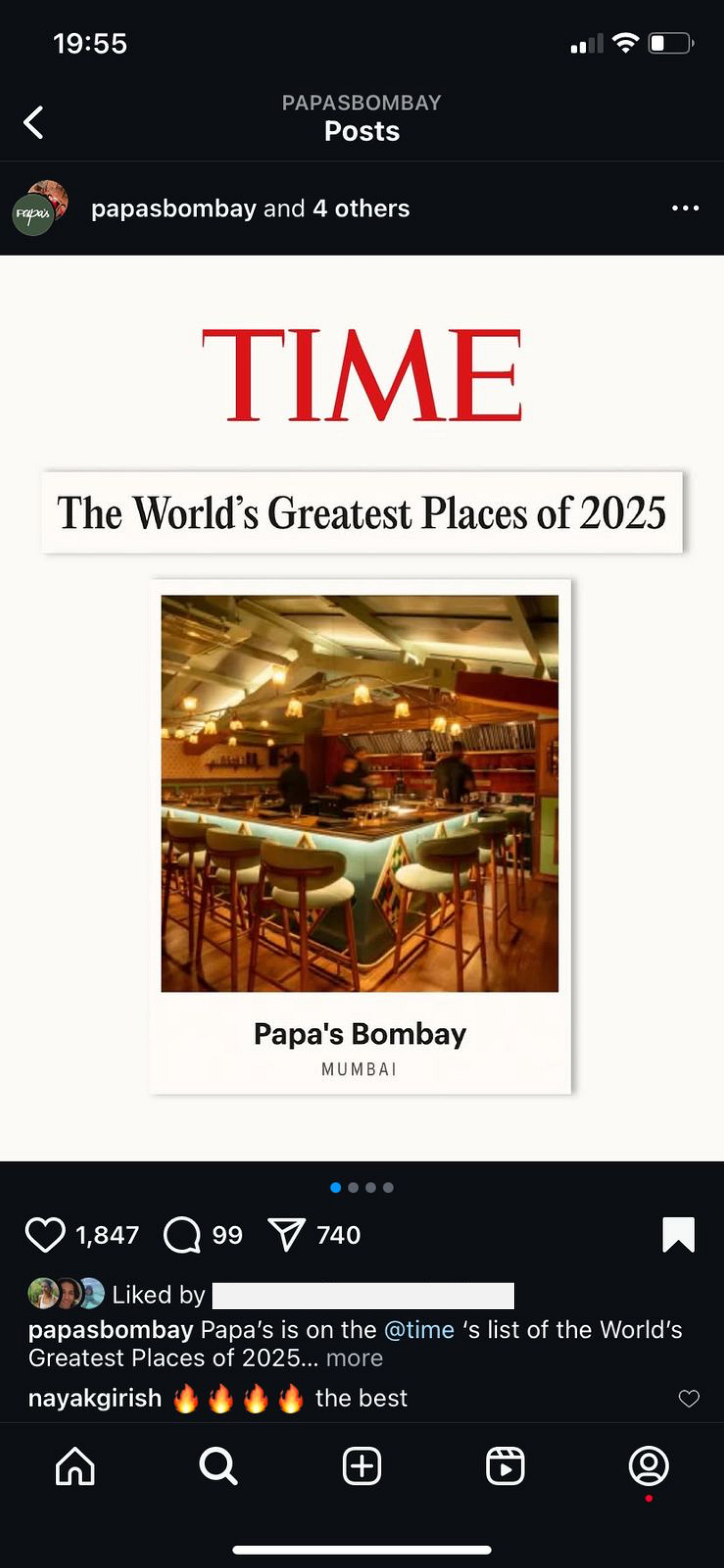

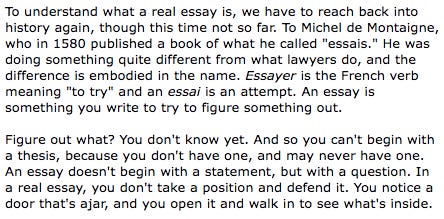


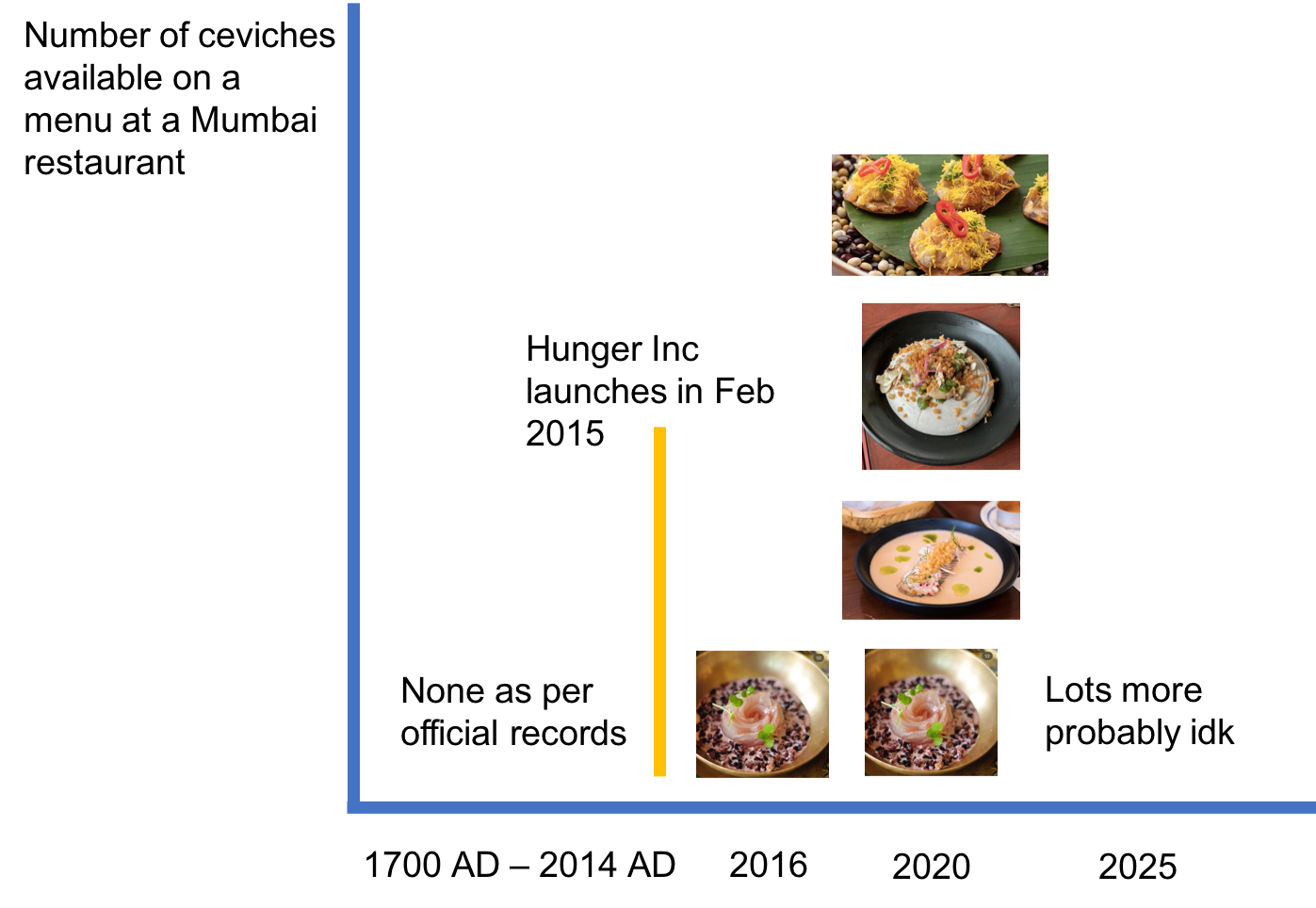
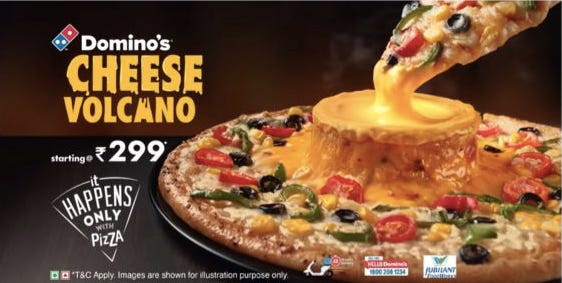


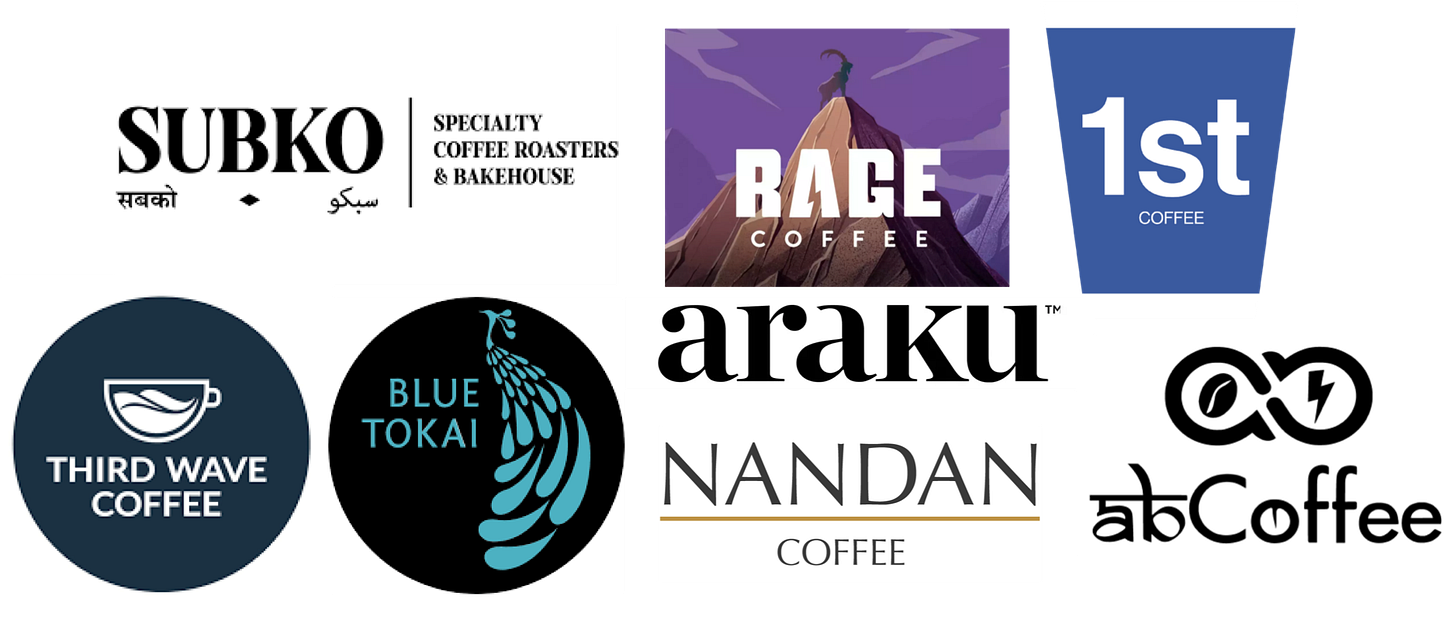

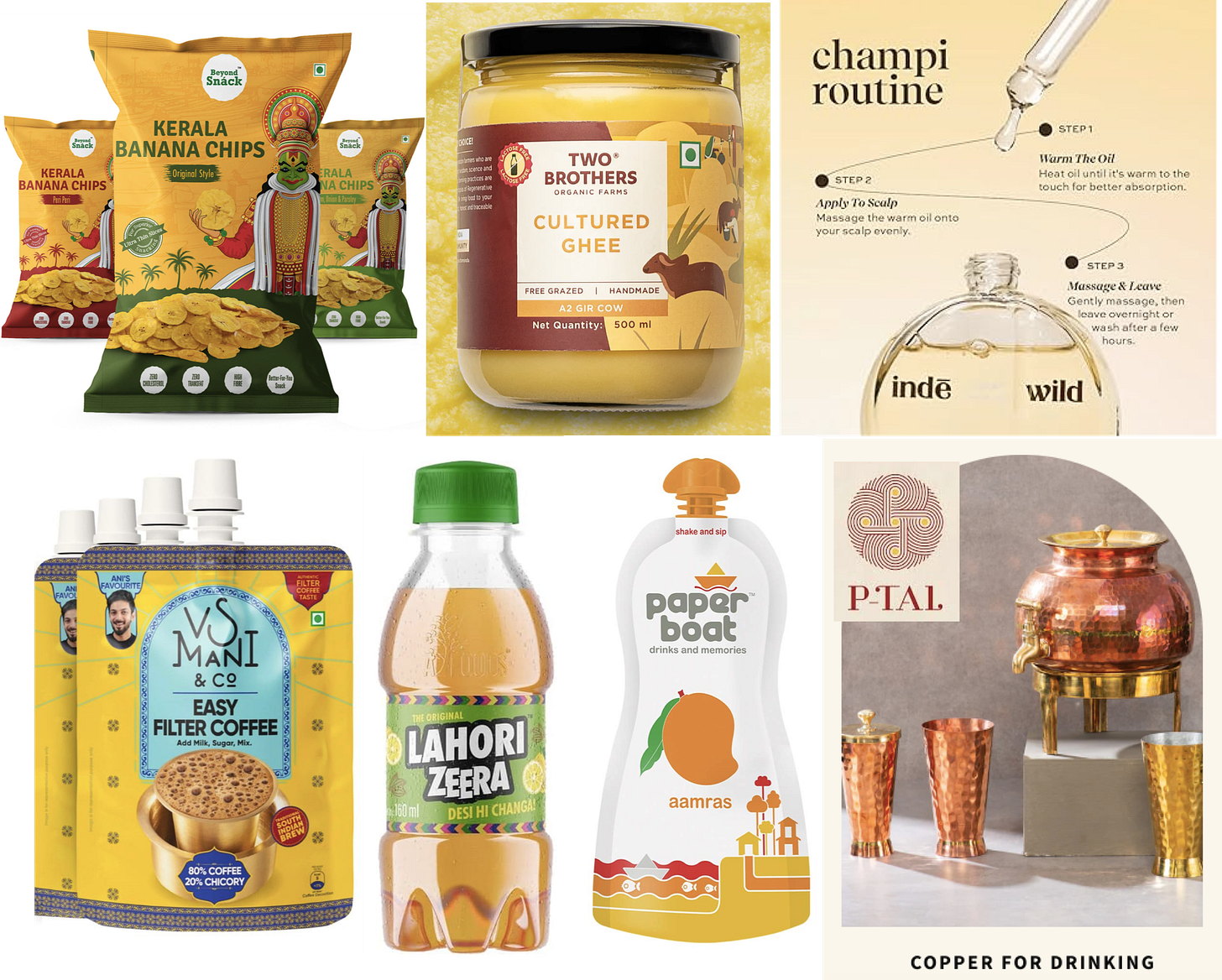
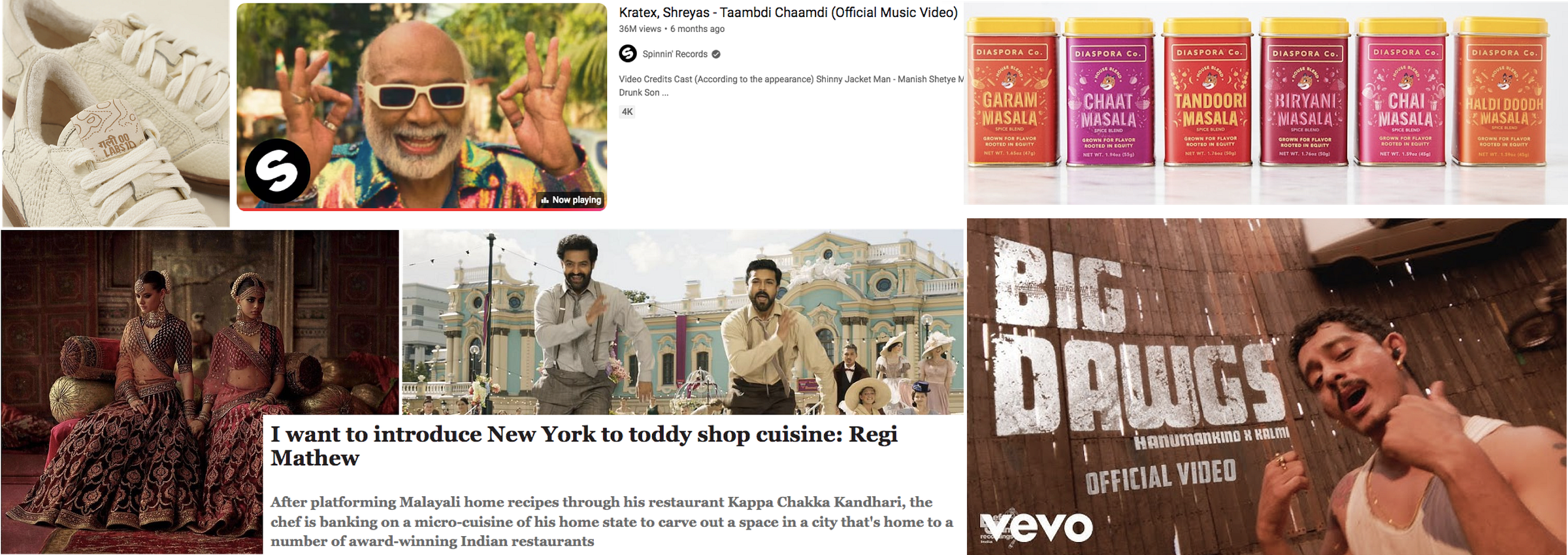


This essay hits harder than a Choriz Chili Taco at O Pedro
This was a really interesting read. Bombay Canteen is one of my favourite restaurants in Mumbai, so it was great to learn more about its history. Also, well done on the research, it’s quite thorough!